Forums
- Forums
- Duggy's Reference Hangar
- USAAF / USN Library
- Northrop F-89 Scorpion
Northrop F-89 Scorpion
Post a reply
- Go to Previous topic
- Go to Next topic
- Go to Welcome
- Go to Introduce Yourself
- Go to General Discussion
- Go to Screenshots, Images and Videos
- Go to Off topic
- Go to Works in Progress
- Go to Skinning Tips / Tutorials
- Go to Skin Requests
- Go to IJAAF Library
- Go to Luftwaffe Library
- Go to RAF Library
- Go to USAAF / USN Library
- Go to Misc Library
- Go to The Ops Room
- Go to Made in Germany
- Go to Campaigns and Missions
- Go to Works in Progress
- Go to Juri's Air-Raid Shelter
- Go to Campaigns and Missions
- Go to Works in Progress
- Go to Skinpacks
- Go to External Projects Discussion
- Go to Books & Resources
-
2 years agoSun Feb 05 2023, 02:49pmDuggy
 Main AdminNorthrop XP-89 Scorpion
Main AdminNorthrop XP-89 Scorpion
The Northrop F-89 Scorpion was one of the primary defenders of North American airspace during the Cold War. A total of 1052 Scorpions were built. During its career, the F-89 equipped 36 active Air Force Units and 17 Air National Guard squadrons. The Scorpion was difficult to fly, costly to maintain, and was subject to mishaps. It had an accident rate of 383 per 100,000 hours, which was astronomically high compared to today's F-15, which has an accident rate of only 0.5 per 100,000.
On March 23, 1945, the USAAF announced a competition for the successor to the Northrop P-61 Black Widow night fighter. It was to be an all-weather fighter-bomber. Initially, a piston-engined design was specified, and on August 28, 1945, the USAAF issued a set of proposed requirements. These included a maximum speed of 525 mph at 35,000 feet, 550 mph at sea level, a climb to 35,000 feet in 12 minutes, and a combat radius of 600 miles.
It was recognized at this time that the wave of the future was jet propulsion, and in December 1945 the Army changed the requirement to stipulate that jet-powered aircraft would also be acceptable.
Six aircraft manufactures (Bell, Convair, Douglas, Goodyear, Curtiss-Wright, and Northrop) submitted proposals for the competition. The Convair entry was a radical, delta-winged design which was eventually to emerge several years later as the F-102. The Douglas entry was a denavalized adaptation of the XF3D-1 Skyknight carrier-based all-weather fighter. The Curtiss XP-87 Blackhawk was a large, four-jet aircraft carrying a pilot and radar operator seated side-by-side. Initially, the USAAF seemed to favor the Curtiss design, if for no other reason than the fact that the Curtiss-Wright company would probably be forced to close down if it did not land the contract. Two prototypes of the Curtiss design were ordered under the designation XP-87.
However, the USAAF also thought highly of the Northrop proposal, which was given the designation N-24 by the company. The N-24 project called for a cantilever, mid-wing monoplane with a long, slim fuselage. An unswept laminar-flow wing was adopted to ensure good low-speed stability, important for an aircraft called upon to make frequent landings in bad visibility. Traditional ailerons and flaps were fitted to the wing trailing edge, and provisions were made for wingtip-mounted drop tanks. The aircraft was to be powered by a pair of Allison J35 afterburning turbojets, mounted one on either side of the belly of the fuselage just underneath the wings. The twin air intakes were mounted flush in front, each intake exactly in line with its engine nacelle. The pressurized cockpit seated the pilot and radar operator in tandem ejector seats underneath a large rearward-sliding bubble canopy. The horizontal tailplane was mounted halfway up on the vertical tail, well out of the way of the turbulent engine exhaust. The nosegear was of a very short, twin-wheel design. The main retractable undercarriage had larger than usual wheels, giving the prototype a rather unusual appearance when sitting on the ground
Since the Northrop aircraft was to be an all-weather fighter, an airborne interception radar was to be installed in the nose. The armament installation was to have been a quartet of 20-mm M-24 cannon carried in a nose-mounted turret. Two different turret designs were to have been considered. One was a Martin design which allowed the guns to be stowed out of sight inside the nose when not needed. When needed, the guns would be elevated and moved forward into firing position. The Martin turret could rotate 360 degrees and the guns could elevate 105 degrees. The other turret design was a Northrop project, which was similar in concept to the Martin design but had only a 30-degree cone of fire.
The USAAF looked favorably upon the Northrop proposal and issued a development contract on May 3, 1946. Two prototypes were ordered under the designation XP-89 in December of 1946. Serials were 46-678 and 46-679.
In the meantime, the Cold War between the West and the Soviet Union was beginning to get underway. It was generally conceded that the acquisition by the Soviet Union of nuclear weapons was only a matter of time. The appearance of the Tupolev Tu 4 (a copy of the B-29) at the 1947 Tushino air display was a shock to American intelligence, since the USSR would now have a means to deliver nuclear bombs onto continental US targets. There were no all-weather jet-powered interceptors yet available to counter this threat. The US was extremely worried about an all-weather fighter "gap" opening up, leaving the continental US defenseless for several years against an onslaught of nuclear-armed Soviet bombers.
Something needed to get to the squadrons right away. Since neither the Curtiss-Wright nor the Northrop designs promised to be immediately available in quantity for several more years, the USAF approached Lockheed in March of 1948 and asked them to see if the TF-80C two-seat trainer could be adapted as an all-weather fighter, with first deliveries to operational squadrons being made before the end of 1949. Lockheed quickly came up with a design which was eventually to emerge as the F-94 Starfire.
The Northrop XP-89 (46-678) rolled out of the factory 9 months later than expected in early June of 1948. The XP-89 was powered by a pair of Allison J35-A-9/-15 engines of 4000 lb.s.t. each. Neither the Martin nor the Northrop turrets were ready, so the prototype carried no armament. The aircraft was equipped with conventional ailerons which drooped for takeoff and landing, adding extra lift.For rollout, the XP-89 did not carry its jettisonable 600-gallon wingtip tanks. It was painted gloss black overall.
Even before the new Northrop fighter made its first flight, on June 11, 1948, the P-for-pursuit designation was replaced by the F-for-fighter designation, and the XP-89 became the XF-89.
Following a number of ground taxi and brake tests at Northrop Field, the XP-89 was disassembled and trucked out to Muroc Dry Lake (later Edwards AFB). The XP-89 made its maiden flight there on August 16, 1948, with test pilot Fred Bretcher at the controls. Flight test results were generally positive, but the aircraft proved to be seriously underpowered. For the first 32 flights, conventional ailerons were fitted, but on February 1, 1949 a new series of trials began with Northrop-invented "decelerons", which was a split surface that could be operated in one piece as a conventional aileron but which could be opened up to serve also as an airbrake. This feature was made standard on all subsequent F-89s.
Even though the flight test crews were enthusiastic about the XF-89, the USAF ordered that a flyoff take place between the XF-89, the Curtiss XF-87, and the Navy's Douglas XF3D-1 Skyknight. The Curtiss XF-87 with its side-by-side seating arrangement was judged to have the best cockpit arrangement, with the XF3D-1 coming in second. The tandem seating arrangement in the XF-89 made communication between pilot and radar operator difficult. Ease of maintenance was found to be the best in the XF3D-1, with the XP-87 coming in second. However, the evaluation team judged the XF-89 as being the superior fighter and having the best development potential.
Since the Northrop XF-89 was judged as having the superior potential as a fighter, on October 10, 1948, the USAF officially cancelled the Curtiss XF-87 project. The failure of the XF-87 to win any production orders was the end of the line for the Aeroplane Division of Curtiss-Wright. Shortly thereafter, the Aeroplane Division of Curtiss-Wright declared bankruptcy, sold all of its assets to North American, and closed its doors forever.
Even though the XF3D-1 did not succeed in obtaining any USAF orders, it nevertheless did receive orders from the US Navy and the US Marine Corps, and went on to serve as both a land-based and carrier-based interceptor fighter for many years.
In January of 1949, President Harry Truman authorized the Air Force to make an initial purchase of 48 F-89As. The second XF-89 would be converted into a service test aircraft under the designation YF-89.
In March of 1949, the name "Scorpion" was officially applied to the XF-89, the suggestion being originally made by ground crews at Edwards who thought that the parked plane with its upward-curving rear fuselage and its high tail looked a lot like the dangerous creature with the deadly stinger in its tail.
On July 14, 1949, the USAF made the order of 48 production F-89A aircraft official. Serials 49-2431/2478 were assigned. An additional 27 aircraft were added to the contract on September 19, 1949.
The second prototype (46-679) made its maiden flight on November 15, 1949. Modifications made when the airframe was almost 90 percent complete led to a change in designation to YF-89, as it was envisaged as being a test vehicle for the production F-89A fighter. The XF-89 had been painted black, but the YF-89 was finished in natural metal overall.
The XF-89 had been unarmed, pending the availability of the nose turret. However, the nose-mounted turret was eventually abandoned as being too complicated, and a more conventional armament of six forward-firing 20-mm Mk 24 cannon was chosen for the Scorpion.
Since the USAF wanted the Scorpion in service right away, production of the F-89A got underway immediately, even before testing of the prototypes was completed. This commitment to production proved to be premature. On February 22, 1950, the XF-89 prototype crashed while making its 102nd flight. During a high-speed low altitude run in front of Air Force officials, the right horizontal stabilizer peeled off, and the aircraft tore itself apart in midair. Pilot Charles Tucker was thrown clear during the breakup and he was able to parachute to safety, but flight engineer Arthur Turton was killed. The cause of the crash was later found to be a failure of the horizontal stabilizer due to excessive flutter.
The YF-89 was grounded for changes, and production of the F-89A was halted. As a result of the grounding, the YF-89 was extensively modified. The nose was completely redesigned. It was reconfigured to be more tapered and was increased in length by three feet. An AN/ARC-33 radar set was fitted in the nose, along with a Hughes E-1 fire control system. Since the XF-89 was somewhat underpowered and had poor takeoff characteristics, more powerful engines were fitted--Allison J35-A-21s, rated at 5200 lb.s.t. dry and 6800 lb.s.t with afterburners. The engine air intakes were redesigned to include external boundary layer bleed ramps and auxiliary pop-in doors were added to the nacelle sides to allow additional air to be supplied to the engine during ground runups. The engineers believed that pulsating exhaust gases from the engine were responsible for the tail flutter problems that had wrecked the XF-89, and the engine exhaust area was redesigned by adding deflector plates to the fuselage to direct the exhaust away from the tail. The pitot tube was moved from the vertical tail and installed in the nose. The jettisonable 300-gallon wingtip tanks of the XF-89 were replaced by permanently-attached more-streamlined 300 gallon tanks.
The heavily-modified YF-89 was redesignated YF-89A (Model N-49), and made its first flight on June 27, 1950, and the Scorpion flight test program was resumed.
Serials:
46-678 Northrop XP-89 Scorpion - redesignated XF-89 in 1948.
46-679 Northrop YF-89 Scorpion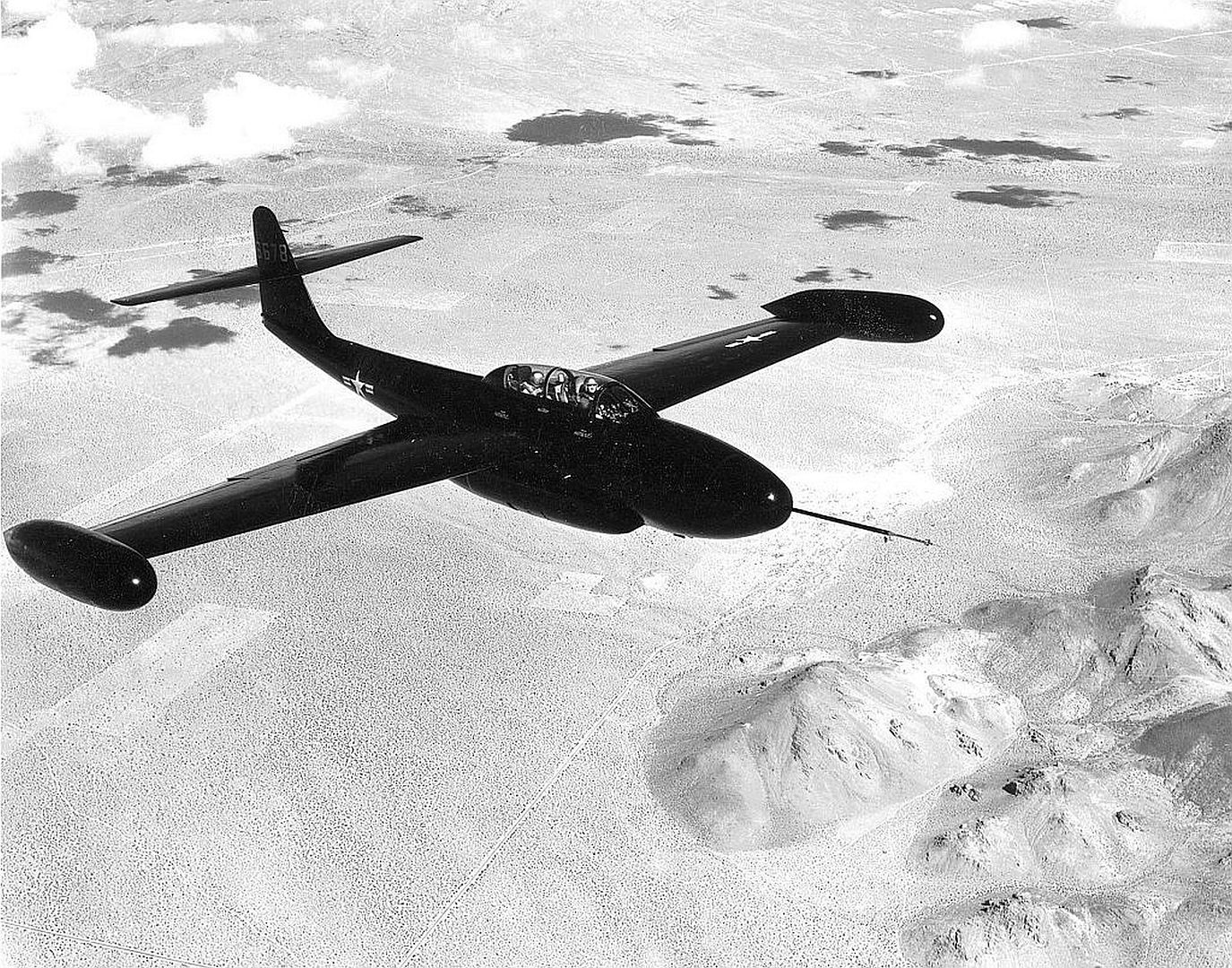
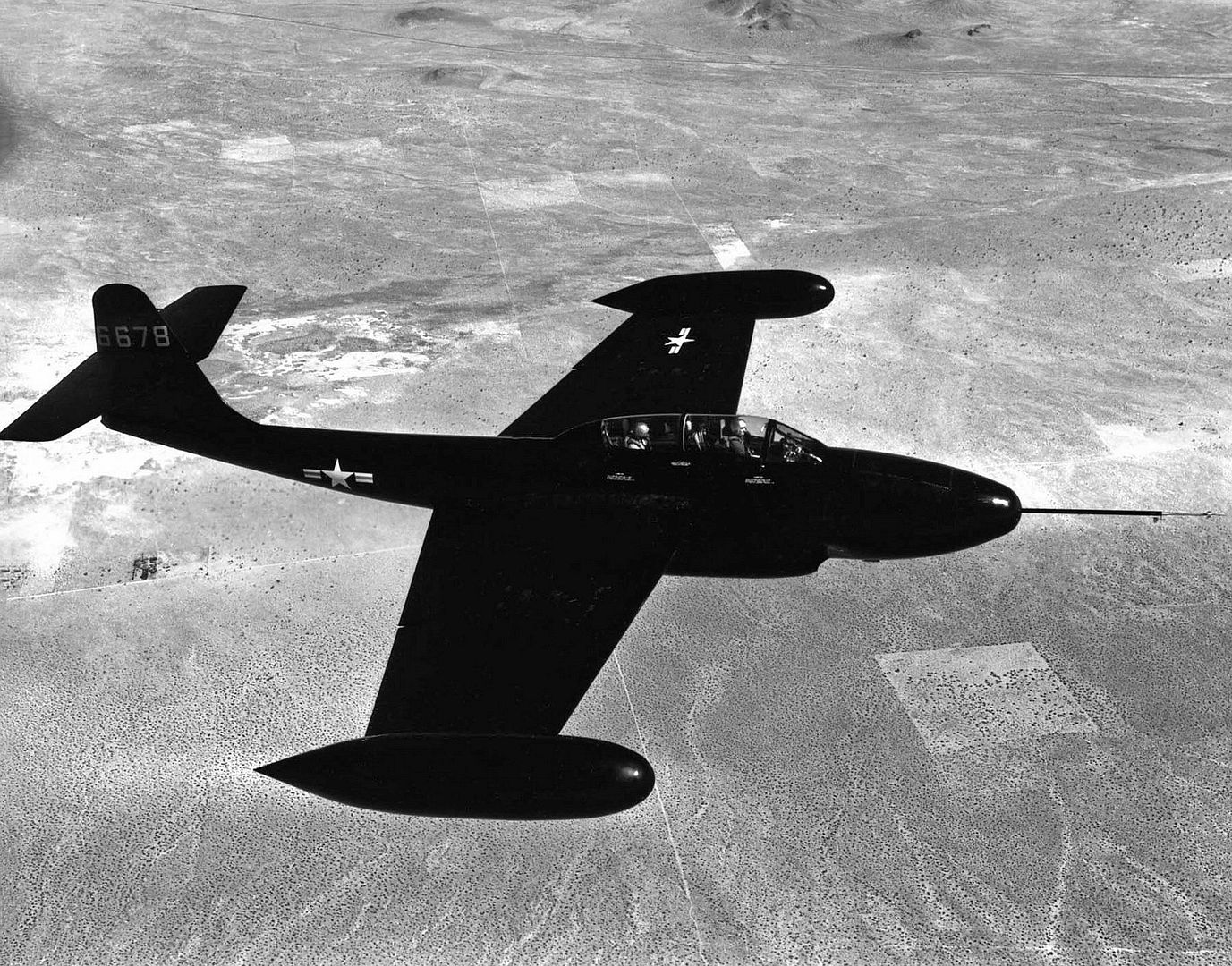
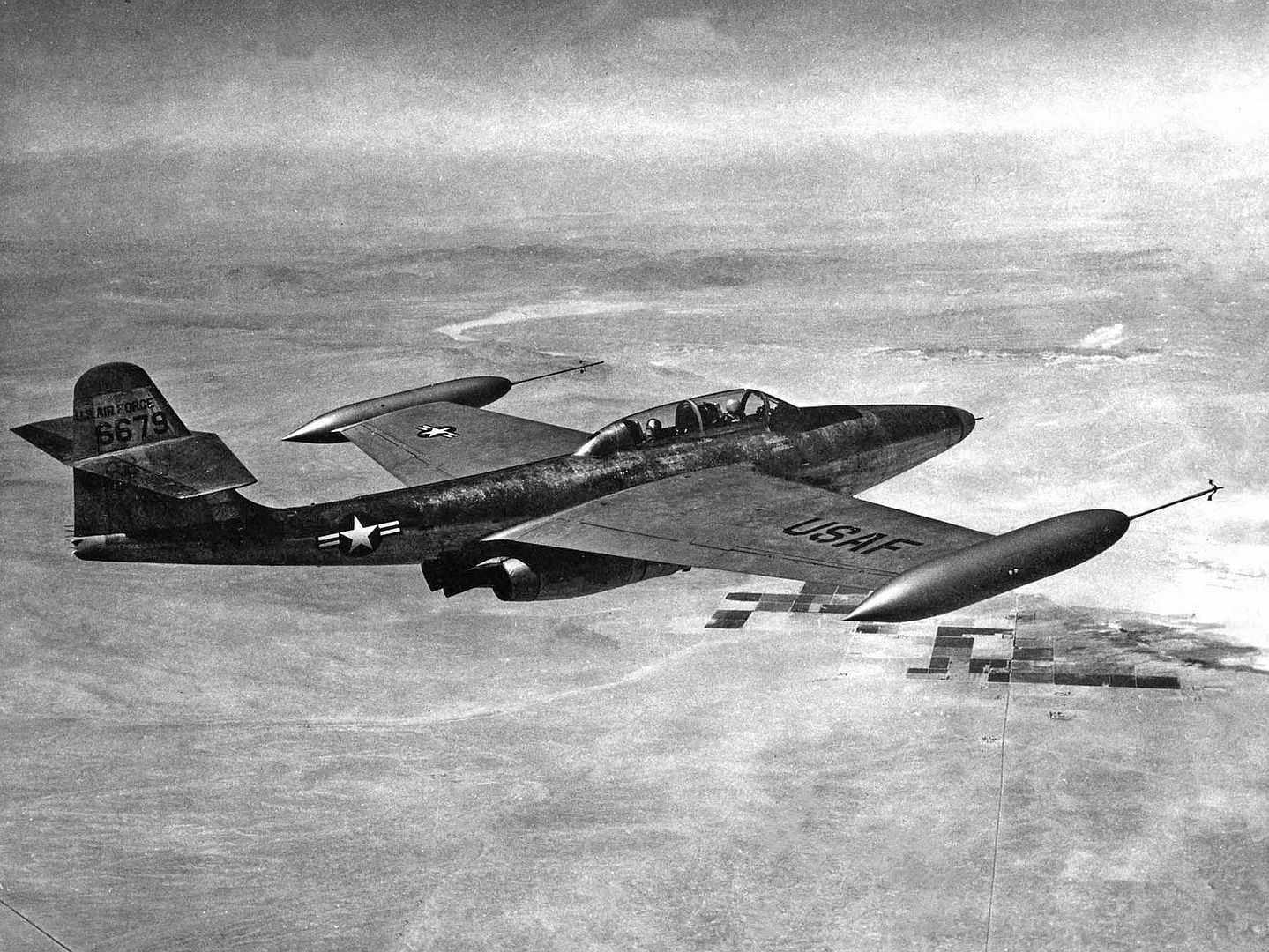

Northrop F-89A Scorpion
The first production version of the Scorpion was the F-89A (Model N-35). Forty-eight F-89As had been ordered on July 14, 1949. Production of the F-89A got underway even while the XF-89 and YF-89 were still under test, but the crash of the XF-89 prototype on February 22, 1950 brought the whole program to a halt while the problems were being fixed.
At the time of the XF-89 accident, three F-89As were nearing completion. It was decided that these three machines, acting in conjunction with the YF-89A, would be the test force used to wring out the problems with the Scorpion. The first production F-89A was accepted by the USAF on September 28, 1950, followed by the second and third examples a few weeks later.
The F-89A could be distinguished from the YF-89A by the mounting of an armament of six 20-mm T-31 (M-24) cannon in the nose with 200 rpg. Neither the XF-89 nor the YF-89A had carried any armament. Underwing pylons were provided which could carry sixteen rockets or up to 3200 pounds of bombs. An A1-CM gunsight was fitted, and an AN/APG-33 radar was mounted in the nose.
The fix for the tail flutter problem was found to be the fitting of a series of external mass balance horns attached to the hinge area of the horizontal stabilizer/elevator. The configuration of the underfuselage exhaust deflector fairings was changed, and a number of different fairing designs were tried until a final design was adopted. The lines of the rear fuselage behind the jet pipes were altered to overcome some of the excessive turbulence that had been encountered by the YF-89A at high speeds. With these changes, the fail flutter problem was finally believed to be cured, and in January of 1951 production of the F-89A was resumed.
The engines of the F-89A were originally a pair of Allison J35-A-21s. After a rash of engine failures on early F-89As, these aircraft were reengined with Allison J35-A-21A turbojets, rated at 5100 lb.s.t.dry and 6800 lb.s.t with afterburning. These engines had an engine oil scavenging system and different kinds of afterburner eyelids, which gave smoother afterburner control.
The external mass balances on the early F-89As were eventually replaced by elevators with internal maass balance which were fittedretroactively after having been developed for the F-89C.
A total of eight F-89as were accepted between September 1950 and March 1951. This was 40 less than ordered under the contract of July 1949. The remainder were delivered as F-89B or F-89C. Because of their limited number, most of the F-89As were used primarily for operational suitability tests and did not enter active service. However, a few did enter the operational inventory of the USAF.
Several obsolete F-89As were later modified into radio-controlled target planes under the designation DF-89A.
49-2433 was used to test air-to-ground capability at Eglin AFB in Florida.
The Martin D-1 four-gun swivelling turret was tested briefly on F-89A 49-2434. The entire nose section rotated as a unit, while the guns traversed through 105 degrees from the forward facing position. The system was not adopted for production F-89s.
49-2438 was used by Allison for experimental work under the designation JF-89A.
Serials:
49-2431/2438 Northrop F-89A Scorpion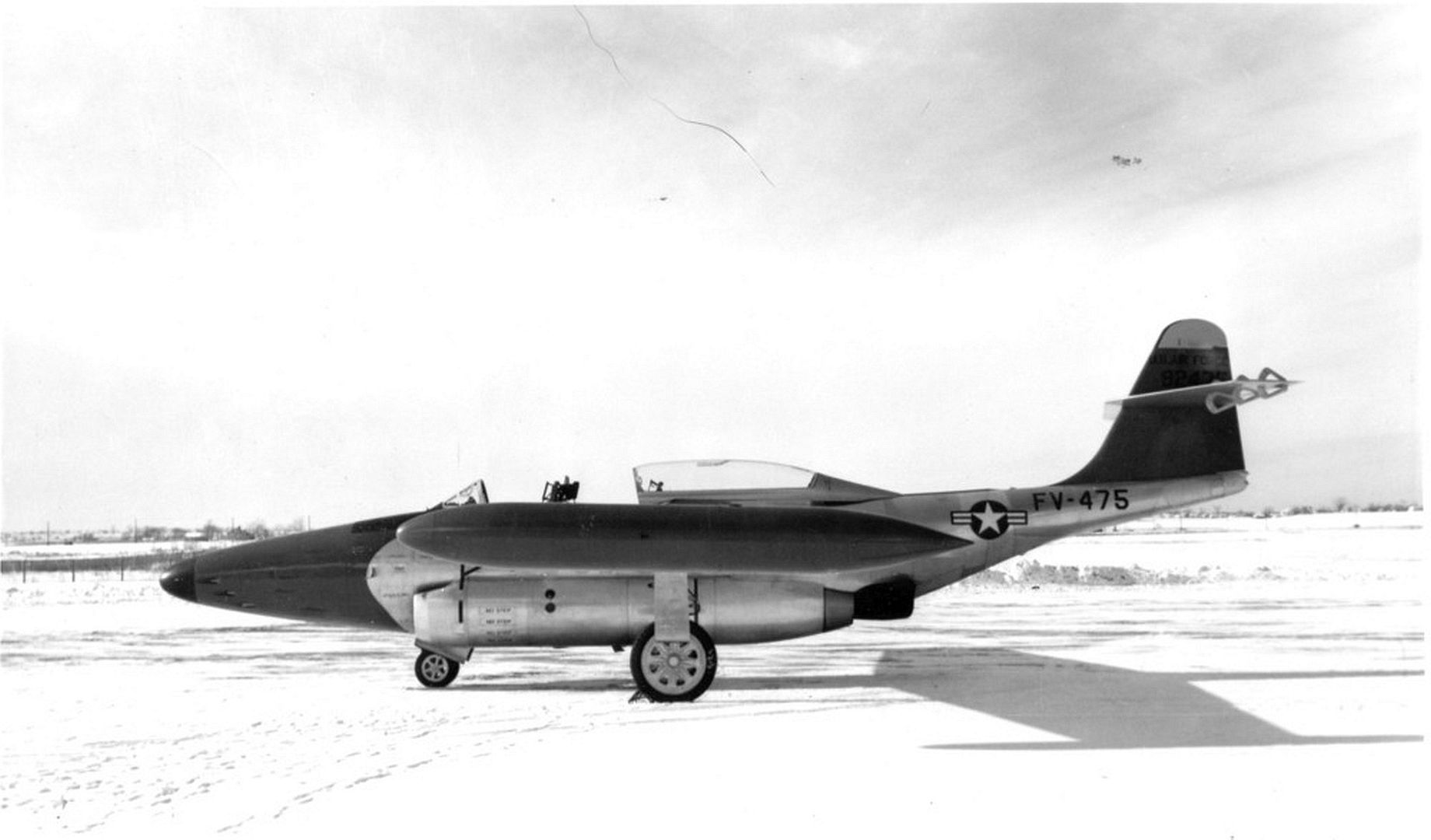
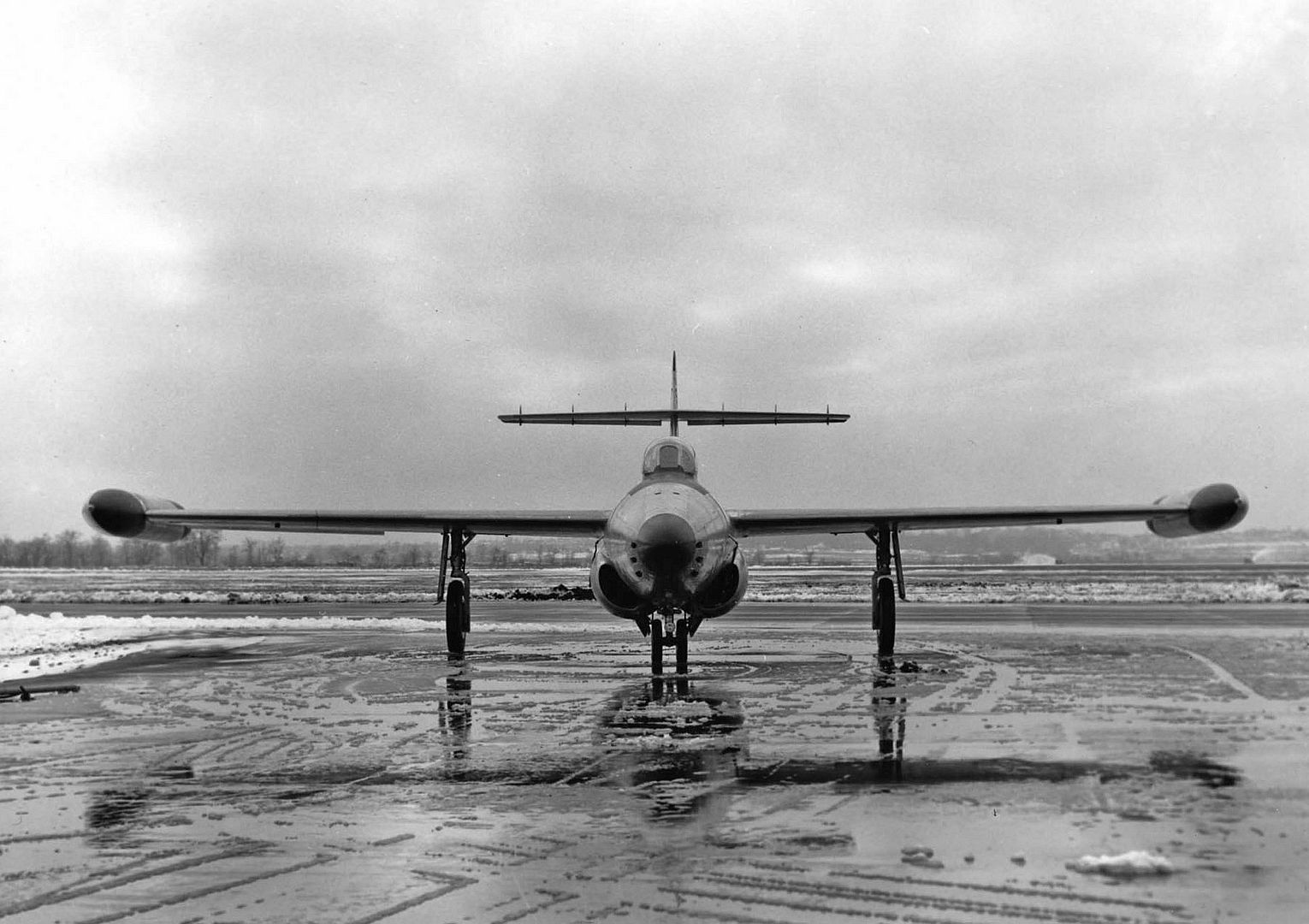

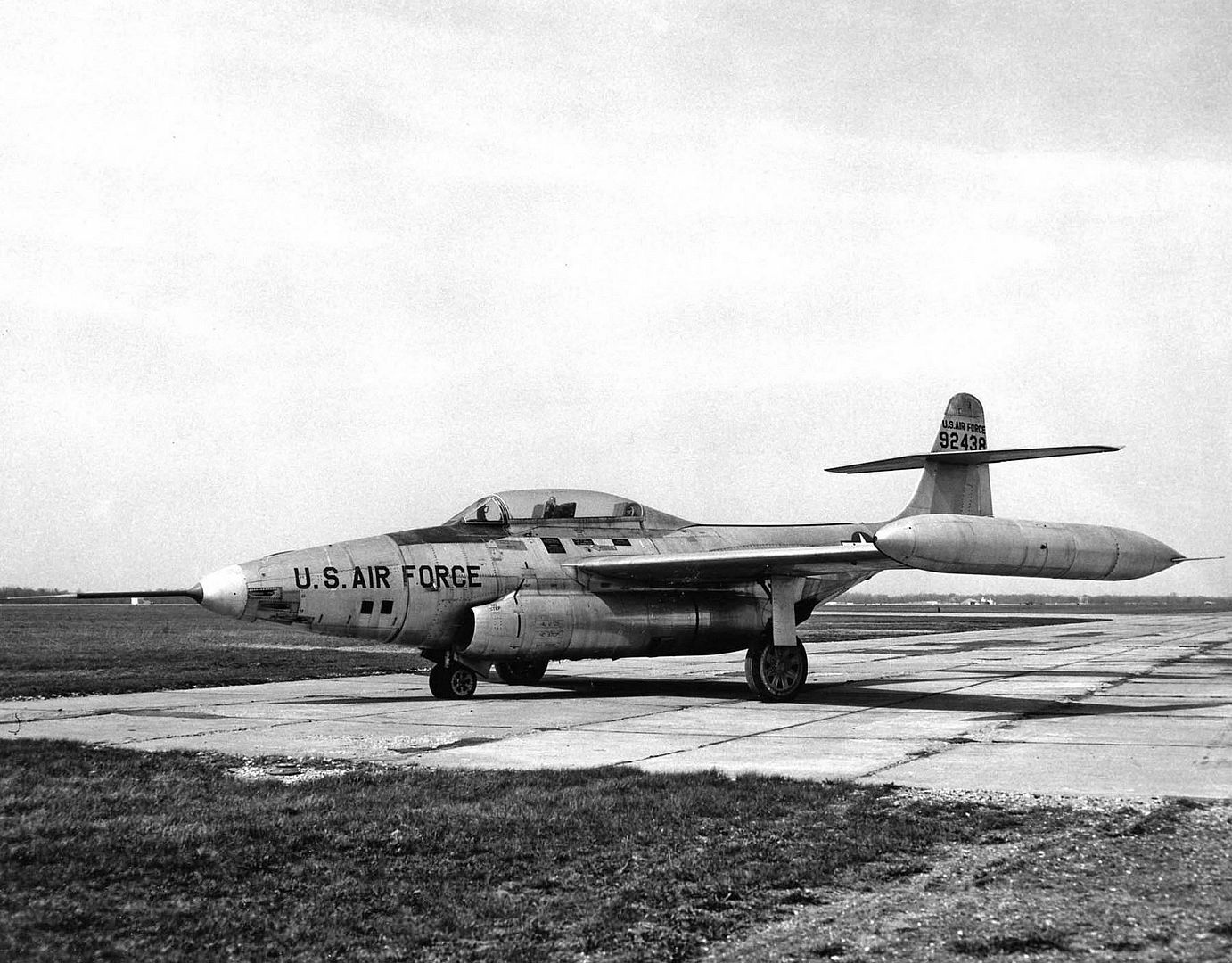
Northrop F-89B Scorpion
After only eight F-89As had been built, production shifted to the F-89B (Model N-35). These were the remainder of the May 1949 production order. The F-89B differed from the A only in various items of internal equipment. It carried a Lear F-5 autopilot, an instrument landing system (ILS), and a Sperry Zero-Reader (which combined the features of artificial horizon, directional gyro, magnetic compass, and altimeter). The armament and the radar were unchanged.
The first production F-89B was accepted during February of 1951, and entered service with the 84th Fighter Interceptor Squadron, 78th Fighter Interceptor Group based at Hamilton AFB, California during June of 1951. Three other squadrons received F-89Bs in early l952-the 27th FIS, the 7rth FIS, and the 174th FIS.
After a rash of engine failures on early F-89Bs, the aircraft were reengined with Allison J35-A-21A turbojets, rated at 5100 lb.st.dry and 6800 lb.st with afterburning. These engines had an engine oil scavenging system and different kinds of afterburner eyelids, which gave smoother afterburner control.
All F-89Bs were fitted with external mass-balanced elevators which were adopted to overcome a sever flutter caused by the jet exhaust. However, they were fitted retroactively with elevators having internal mass balance after this feature had been developed for the F-89C.
In retrospect, the F-89B was rushed into squadron service too rapidly. There were not enough trained pilots and radar operators, and there were not enough maintenance personnel who knew the intricacies of the complex and troublesome Hughes E-1 fire control system. The in-service rate of the F-89B was appallingly low, and crashes were all too frequently. On September 22, 1952, the entire F-89 fleet had to be grounded, and the planes remained grounded for 7 months.
The service of the F-89B with the USAF was quite brief. By 1954, all F-89Bs had been transferred to the Air National Guard. The first Guard unit to re-equip with the F-89B was the 176th Fighter Interceptor Squadron of the 128th Fighter Interceptor Wing of the Wisconsin ANG, replacing that unit's piston-engined F-51s.
Several obsolete F-89Bs were later modified as DF-89B radio-controlled drones. One F-89B (49-2463) was modified during assembly as the sole YF-89D service test aircraft.
Serials:
49-2439/2478 Northrop F-89B Scorpion
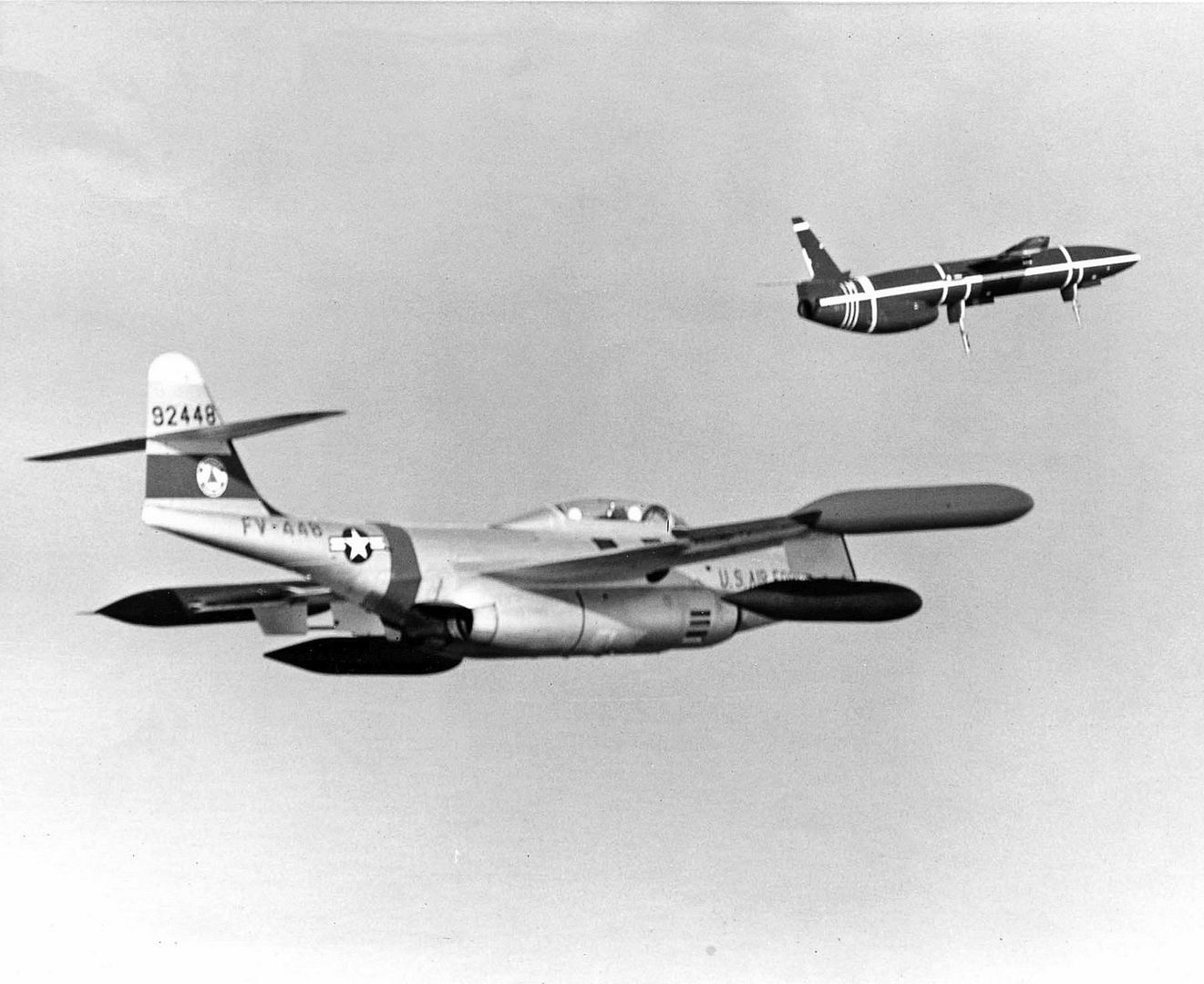
Northrop F-89C Scorpion
The F-89C (Model N-35) was the first major production version of the Scorpion, with a total of 164 being built.
The first F-89C flew on September 18, 1951. It incorporated most of the changes that had been made to the F-89A/B small-scale production run in an attempt to make the Scorpion a fully operational and safe aircraft.
Some of the changes incorporated in the F-89C were primarily internal. A fuel purging system was added which helped alleviate the danger of fuel vapor explosions. A bulge could be seen on the starboard engine nacelle that was introduced by this system. This used engine bleade air and fuel to create an intert gas to purge the fuel system. The wingtip fuel tanks had dump valves installed which allowed them to be emptied in flight. The cockpit air conditioning and pressurization system were upgraded. A Lear vertical gyro was added to provide artificial horizon information to the autopilot. An alcohol deicer tank was added on one of the underwing racks.
Other changes incorporated in the F-89C were external and hence more obviously recognizable. The shape of the canopy was slightly altered. Some sources claim that after production of the first 40 F-89Cs, the external mass balance horns on the horizontal stabilizer/elevator were deleted and replaced by a strengthened horizontal tail with internal mass balances. However, it appears that these internal mass balances were actually fittted to the F-89C from the very beginning. This feature was retrofitted to all previous Scorpions.
During January of 1952, the 74th Fighter Interceptor Squadron based at Presque Isle AFB in Maine (already a user of the F-89B) was declared operational with the F-89C. Other units soon followed. Winterized F-89Cs were sent to Elmendorf AFB in Alaska and to Harmon AFB in Newfoundland.
Even though the Scorpion was rapidly entering squadron service all throughout 1952, the interceptor continued to be plagued by engine failures. The initial production blocks (1 through 20) of the F-89C were powered by a pair of J35-A-21 engines. In service, these engines were very unreliable and were subject to frequent failures. The problem was solved as in the case of the F-89A and B by retrofitting these early F-89Cs with the improved and more reliable J35-A-21A engine.
Beginning with the F-89C-25-NO production block, the engine was changed yet again to the Allison J35-A-33 jet rated at 5400 lb.s.t. dry and 7400 lb.s.t. with afterburner.
Finally, production blocks -35 and -40 were fitted with the Allison J35-A-33A, rated at 5600 lb.st. dry and 7400 lb.st with afterburner. The -33A engine not only had more power, it also had a redesigned inlet, deicing equipment, inlet guide vanes, and redesigned forward engine mounts. The F-89's engines, being mounted quite low on the fuselage, had a tendency to scoop up runway debris into their intakes. To cure this problem, retractable inlet screens were added to the -33A engine.
Other problems with the Scorpion turned out to be much more serious. During 1952, several F-89Cs crashed due to wing structural failures. No less than six aircraft were lost in the spring and early summer of 1952, one spectacular crash taking place in front of thousands of spectators at the International Aviation Exposition at Detroit. The Air Force was forced to ground the entire Scorpion fleet on September 22, 1952 until the cause could be found.
After an exhaustive series of flight tests, the problem was finally traced to a previously unknown effect, known as aero-elasticity. During high-G maneuvers, the wing tended to twist at the tip, exerting excessive strain on the wing attachment points and causing them eventually to fail. The large wingtip fuel tanks were found to be a significant factor in exerting this twisting moment. A total of 194 F-89A, B, and C aircraft were shipped back to Northrop where they were fitted with stronger wings with forged steel attachment points. At the same time, a small fin was added to the outboard rear of each wingtip tank, which reduced the aerodynamic forces on the tank that caused it to flex and twist during maneuvering.
Before the F-89C fleet had been fully retrofitted with the new stronger wing, a total of fourteen months had passed and it was not until 1954 that the Scorpion force reached its intended level. As fast as the F-89Cs could be modified, they were flown directly to their operational units. With the modified wing and the improved engines, the Scorpion became one of the safest and most reliable combat aircraft in the USAF inventory. The 74th Fighter Interceptor Squadron, following its transfer to Thule, Greenland in August of 1954 completed a full year of service with the type without a single accident of any kind.
The F-89C served with the 27th, 74th, and 433rd Fighter Interceptor Squadrons from 1952 onwards. The 57th FIS, based in Iceland, the 65th FIS based in Alaska, and the stateside 438th FIS took delivery of the F-89C in 1953.
The F-89C was phased out of active USAF service during 1954, when later Scorpion models became available. F-89Cs were then transferred to the Air National Guard, equipping some seven units in northern states. ANG squadrons operated the F-89C until well into the 1960s until they were finally phased out of service.
F-89C 51-5795 was modified to test a nose installation with two T110E3 rocket launchers in the nose, one on each side. Each of these rifled barrels was fed by a magazine loaded with a clip of 2.75-inch FFARs. Another F-89C was tested with a battery of four 30-mm Oerlikon 302RK cannon with 100 rounds each.
Serials of the F-89C:
50-741/744 Northrop F-89C-1-NO Scorpion
50-745/759 Northrop F-89C-5-NO Scorpion
50-760/774 Northrop F-89C-10-NO Scorpion
50-775/789 Northrop F-89C-15-NO Scorpion
50-790/804 Northrop F-89C-20-NO Scorpion
51-5757/5771 Northrop F-89C-25-NO Scorpion
51-5772/5801 Northrop F-89C-30-NO Scorpion
51-5802/5836 Northrop F-89C-35-NO Scorpion
51-5837/5856 Northrop F-89C-40-NO Scorpion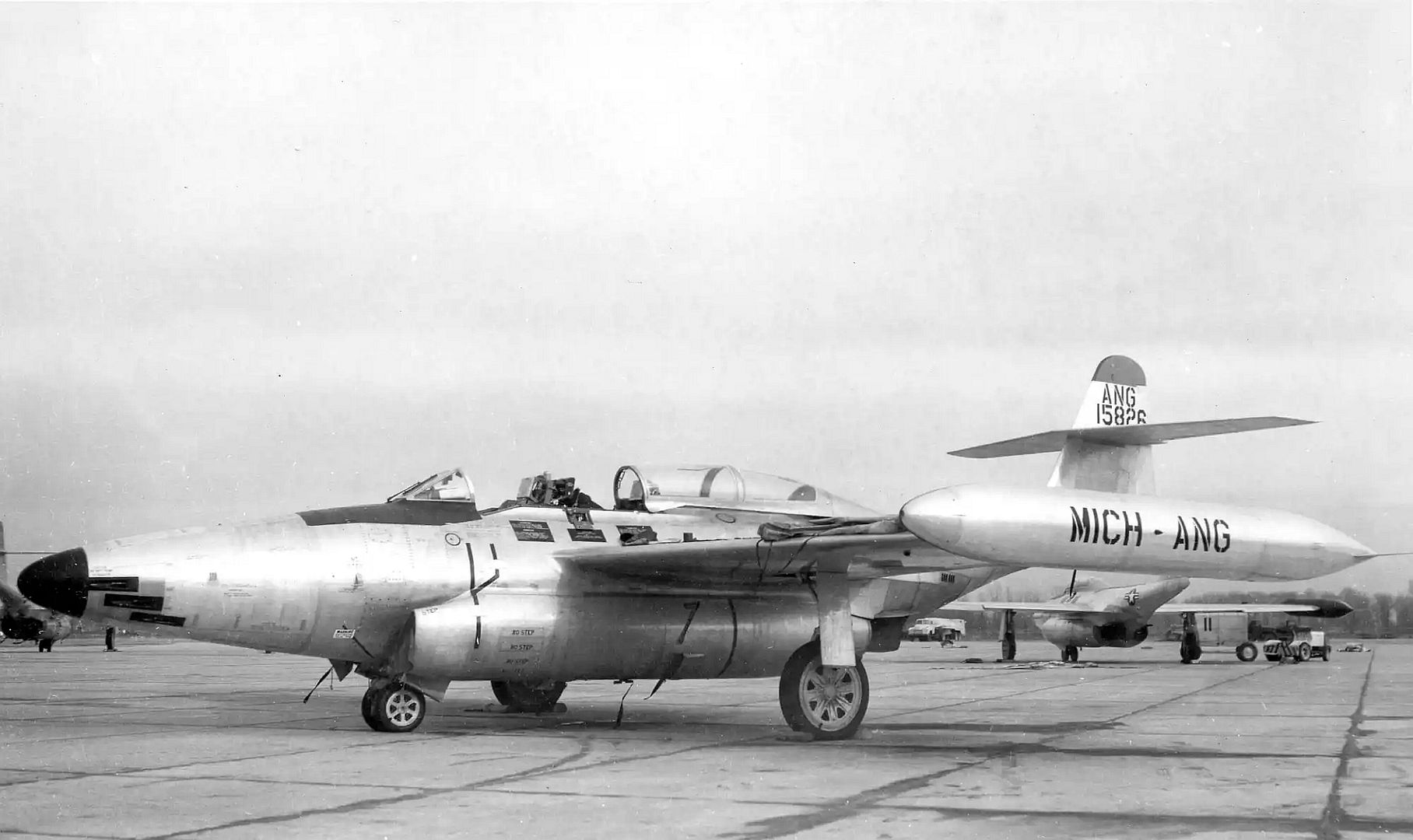
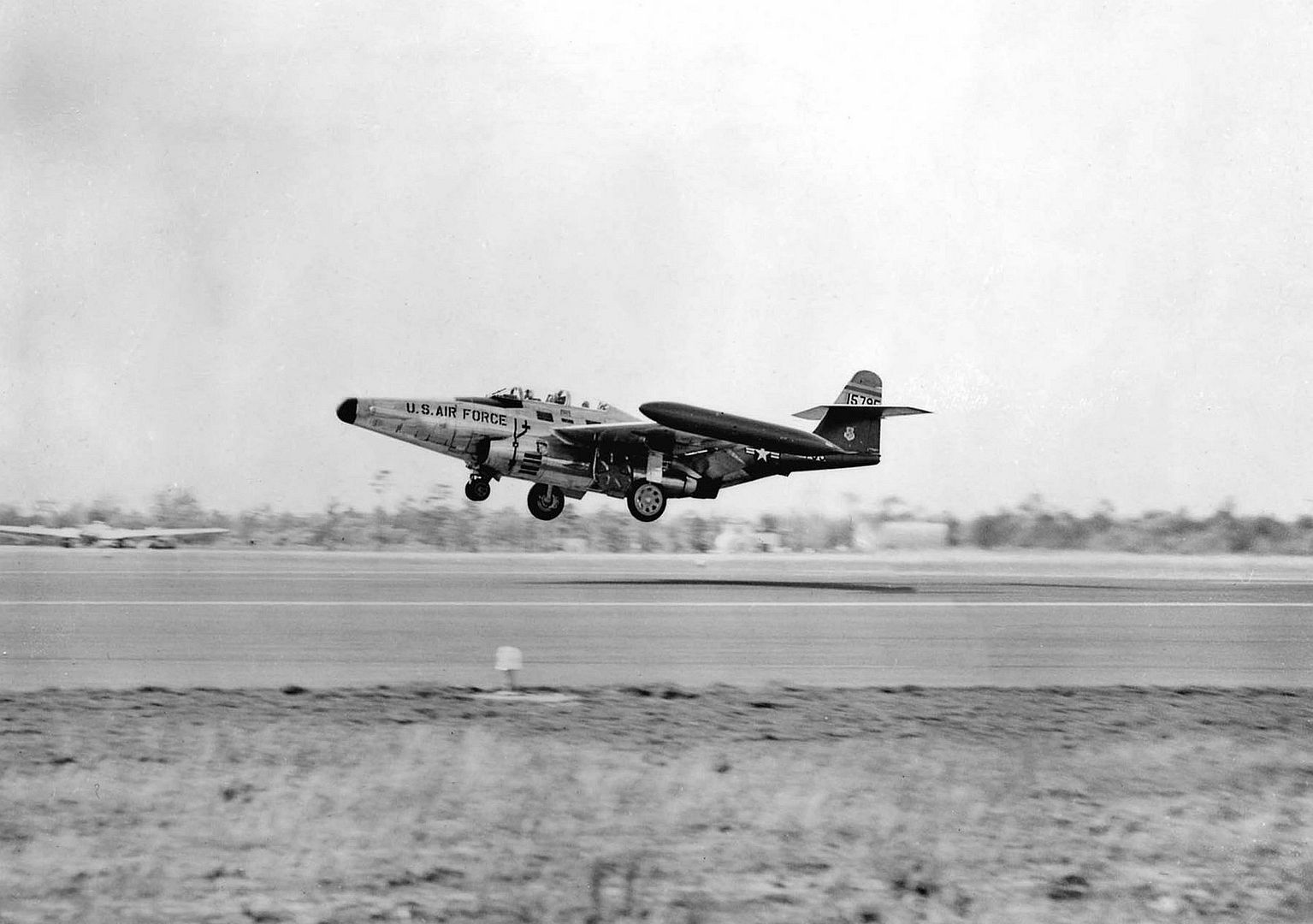
Northrop F-89D Scorpion
The major production version of the Scorpion interceptor was the F-89D (Model N-68). A total of 682 F-89D versions of the Scorpion were constructed.
The F-89D differed from the F-89C in having the armament of six 20-mm cannon replaced by an all-rocket armament. The rocket launching pods were housed in the forward edges of each of the wingtip fuel tanks. These tanks were longer and had a larger diameter than the 300-gallon tanks carried by the F-89C. The forward third of each tank contained a series of launch tubes for 52 2.75-inch Folding Fin Aircraft Rockets (FFAR). These rockets were known as Mighty Mouse, after a well-known cartoon character ("Here I come to save the day"). The outer ring of tubes had metal doors convering the rockets, while the inner honeycomb of tube were each covered with individual protective plastic caps. These rockets were unguided and had an effective range of about 2000 yards and were equipped with high-explosive warheads. The rear two thirds of the tank was taken up by 308 gallons of fuel.
With the addition of the rocket armament, the six 20-mm nose cannon were deleted. The entire nose section of the fuselage was redesigned to house a Hughes E-5 fire control system with a straight tapered nose cone and a larger and flatter radome. The E-5 fire control system consisted of a Hughes APG-40 radar and an AN/APA-84 computer. This system allowed the F-89D to make attacks and firing passes from a 90-degree "beam" position (earlier Scorpions were generally capable of only "tail-chase" interceptions). This resulted in closing speeds consistently in the range of 1,000 knots, which meant that the F-89D would be in the target aircraft's defensive cone of firepower for only a very brief time. In a typical intercept, the F-89D would pass 50 to 150 yards behind the target aircraft after firing the weapons- depending on how close the attack was made with regard to an actual 90-degree approach.
The space in the nose formerly occupied by the six cannon was used to carry an additional 262 gallon fuselage fuel tank. The F-89D could also carry extra fuel in underwing drop tanks, each containing 200 gallons, bringing total fuel capacity to 2834 gallons.
The first F-89D was obtained by modifying F-89B serial number 49-2463, the aircraft being redesignated YF-89D. It had a redesigned, longer nose housing an APG-40 radar for the Hughes E-5 fire control system. The first flight of the YF-89D took place on October 23, 1951. The first two production F-89Ds were delivered to the USAF on June 30, 1952. Some 125 F-89Ds had been built by the time that the problems with the Scorpion's wings resulted in the grounding of the entire fleet. These F-89Ds remained at the factory until the wing modifications could be made that would make the aircraft safe to operate in the field.
The first F-89Ds became operational with the 18th Fighter Interceptor Squadron based at Minneapolis/St.Paul, Minnesota on January 7, 1954.
The pilot could select several options when firing the rocket armament. The 104 rockets could all be fired at once, all the rockets leaving the tubes in only four-tenths of a second. When fired at once, the rockets could blanket an area the size of a football field, enveloping the target in a pattern reminiscent of a shotgun blast. One hit was deemed sufficient to bring down a bomber. The rockets could also be ripple fired, the pilot being able to select two ripples (82 and 42 rockets) or three ripples (42,32, and 30 rockets).
Once in service, there were some problems encountered with the F-89D which were corrected as they came up. The initial F-89Ds had the same structural deficiencies that plagued the earlier versions, which were fixed only after 170 F-89Ds had already left the production line. These planes required postproduction modifications to correct these structural defects. The first 118 F-89Ds lacked the E-5 fire control system and the E-11 autopilot of subsequent Ds. During flights at high altitude, there were mysterious drops in engine power above 30,000 feet, which were eventually traced to a temperature sensor element in the power control unit. The problem was cured by shielding the unit. In service, the rocket tubes in the wingtip pods were often subject to corrosion which, if allowed to proceed unchecked, could result in an explosion in the tube during rocket firing. A new thick-walled tube was designed which corrected this problem.
Beginning in July of 1954, F-89Ds in production were equipped with E-11 autopilots replacing the E-5
A total of 682 F-89Ds were accepted, of which 350 were modified as F-89J after delivery. The last production F-89D rolled off the line in March of 1956.
The F-89D was flown from 1954 onward by the 18th, 61st, 64th, 66th, 318th, 337th, 433rd, and 449th Fighter Interceptor Squadrons based in Alaska, as well as by the 497th Squadron. They were also flown from 1955 onward by the 11th, 58th, and 59th Fighter Interceptor Squadrons based in Labrador. The 68th, 75th, 76th , 83rd, 321st, 432nd, 437th, 445th, 460th and 465th Fighter Interceptor Squadrons received Scorpions in 1955. In 1956, Scorpions were issued to the 98th Fighter Interceptor Squadron. In 1957, the 29th, 54th, and 319th Fighter Interceptor Squadrons received Scorpions. In 1959, the 15th and 49th FIS received Scorpions.
During the peak years, 30 of the 39 Scorpion-equipped squadrons were based in the northern US or in Canada. The F-89D served in the Air Defense Command, Alaskan Air Command, and the Northeast Air command until late 1958, when they began to be replaced by supersonic types such as the F-101B Voodoo and the F-102A Delta Dagger. Ex-USAF F-89Ds were then transferred over to the ANG. The first ANG squadron to receive the F-89D was the 178th FIS of the North Dakota ANG, based at Fargo. The last Scorpions were finally withdrawn from active service with the USAF in 1961. The Air National Guard continued to fly Scorpions for several more years. The last Scorpion (an F-89J) left ANG service in 1969.
Several F-89Ds were used by Northrop to test various drones. These planes could carry two Radioplane RP-70 drones (later upgraded to RP-76 status). These drones were used as training targets for Army Nike surface-to-air missiles. The RP-76/F-89 combination was phased out in 1969.
Serials of the F-89D:
51-400/406 Northrop F-89D-1-NO Scorpion
51-407/426 Northrop F-89D-5-NO Scorpion
51-427/446 Northrop F-89D-10-NO Scorpion
51-11298/11317 Northrop F-89D-15-NO Scorpion
51-11318/11357 Northrop F-89D-20-NO Scorpion
51-11358/11407 Northrop F-89D-25-NO Scorpion
51-11408/11443 Northrop F-89D-30-NO Scorpion
52-1829/1868 Northrop F-89D-35-NO Scorpion
52-1869/1910 Northrop F-89D-40-NO Scorpion
52-1911/1961 Northrop F-89D-45-NO Scorpion
52-2127/2165 Northrop F-89D-45-NO Scorpion
53-2447/2461 Northrop F-89D-50-NO Scorpion
53-2462/2521 Northrop F-89D-55-NO Scorpion
53-2522/2581 Northrop F-89D-60-NO Scorpion
53-2582/2641 Northrop F-89D-65-NO Scorpion
53-2642/2686 Northrop F-89D-70-NO Scorpion
54-184/260 Northrop F-89D-75-NO Scorpion
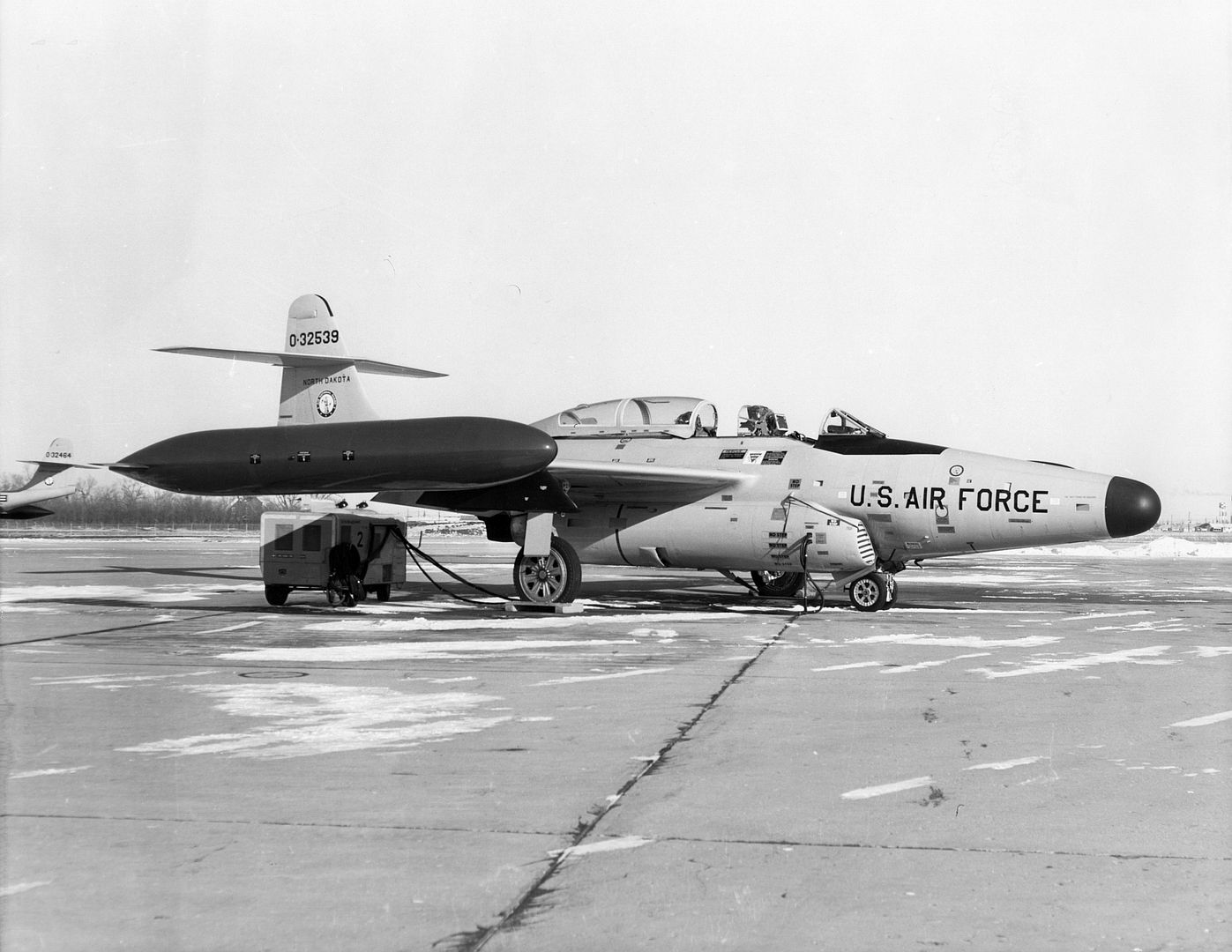
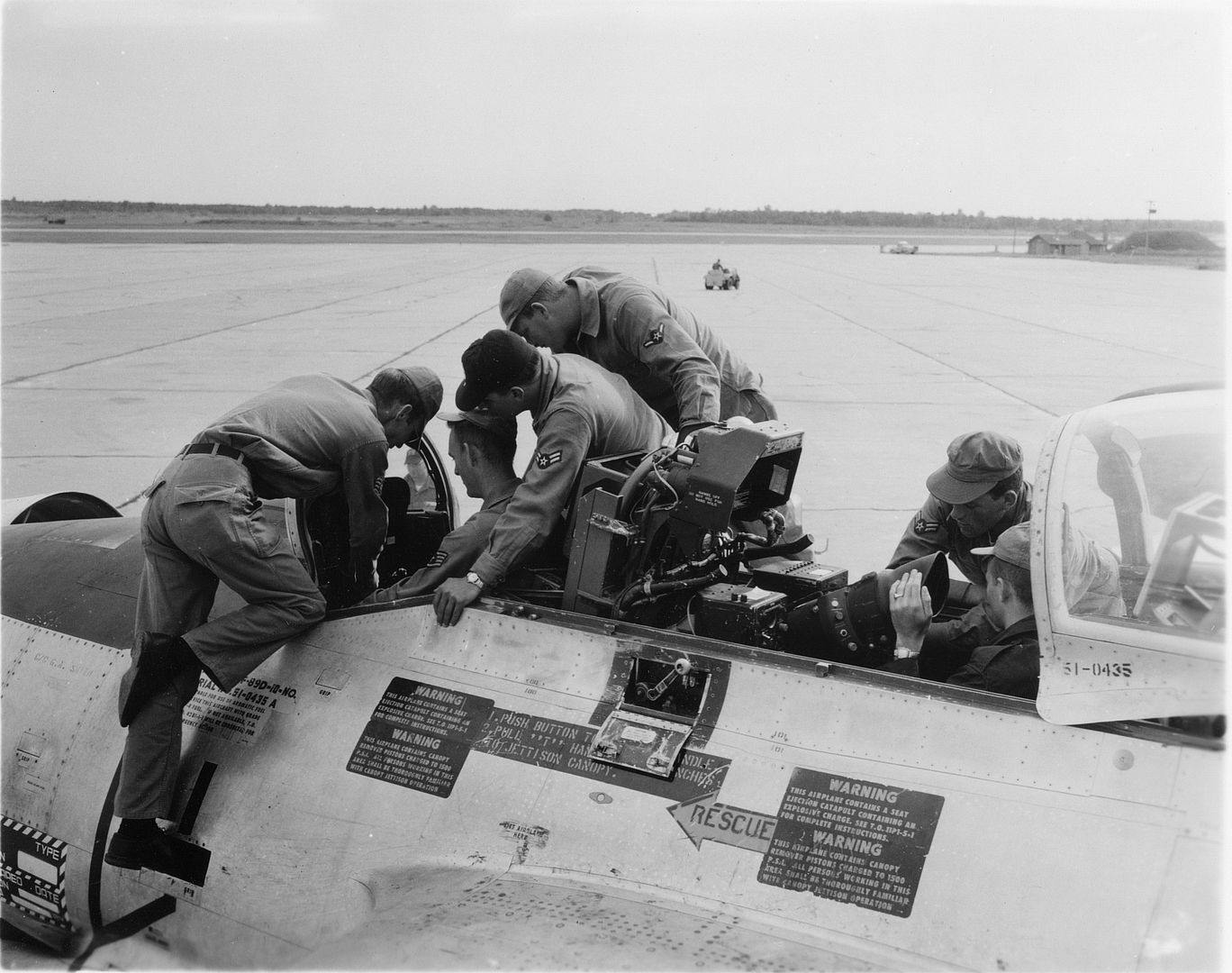
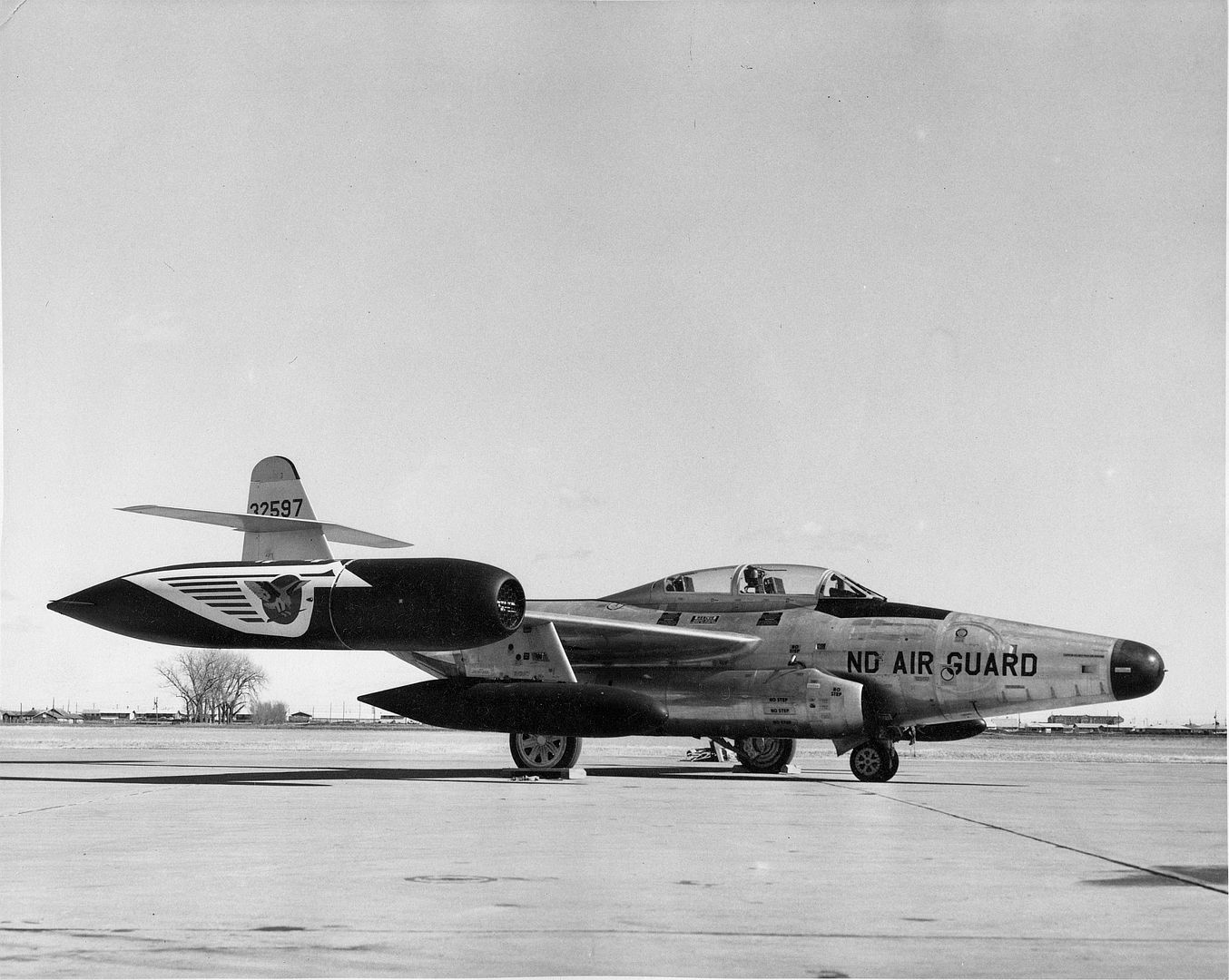

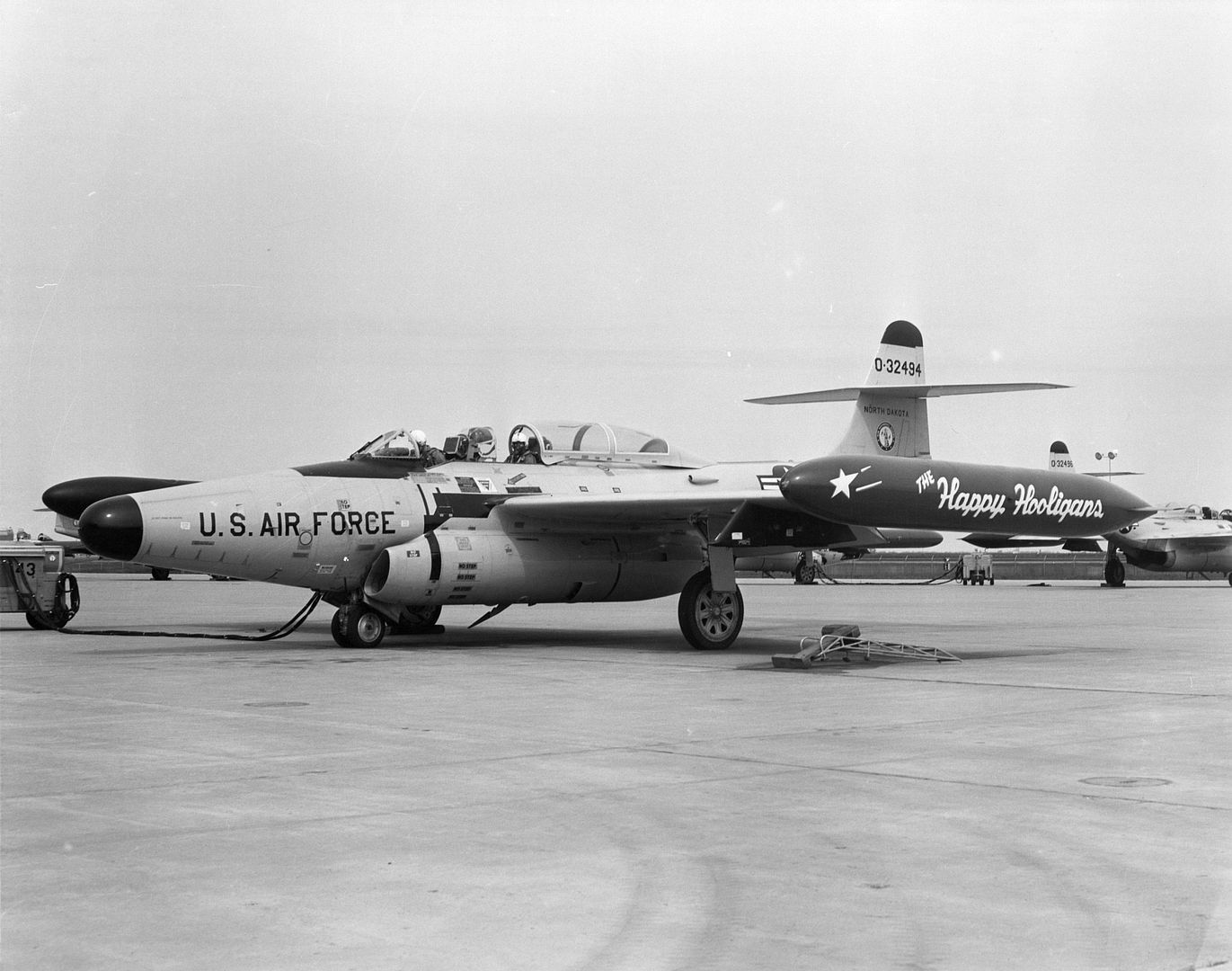

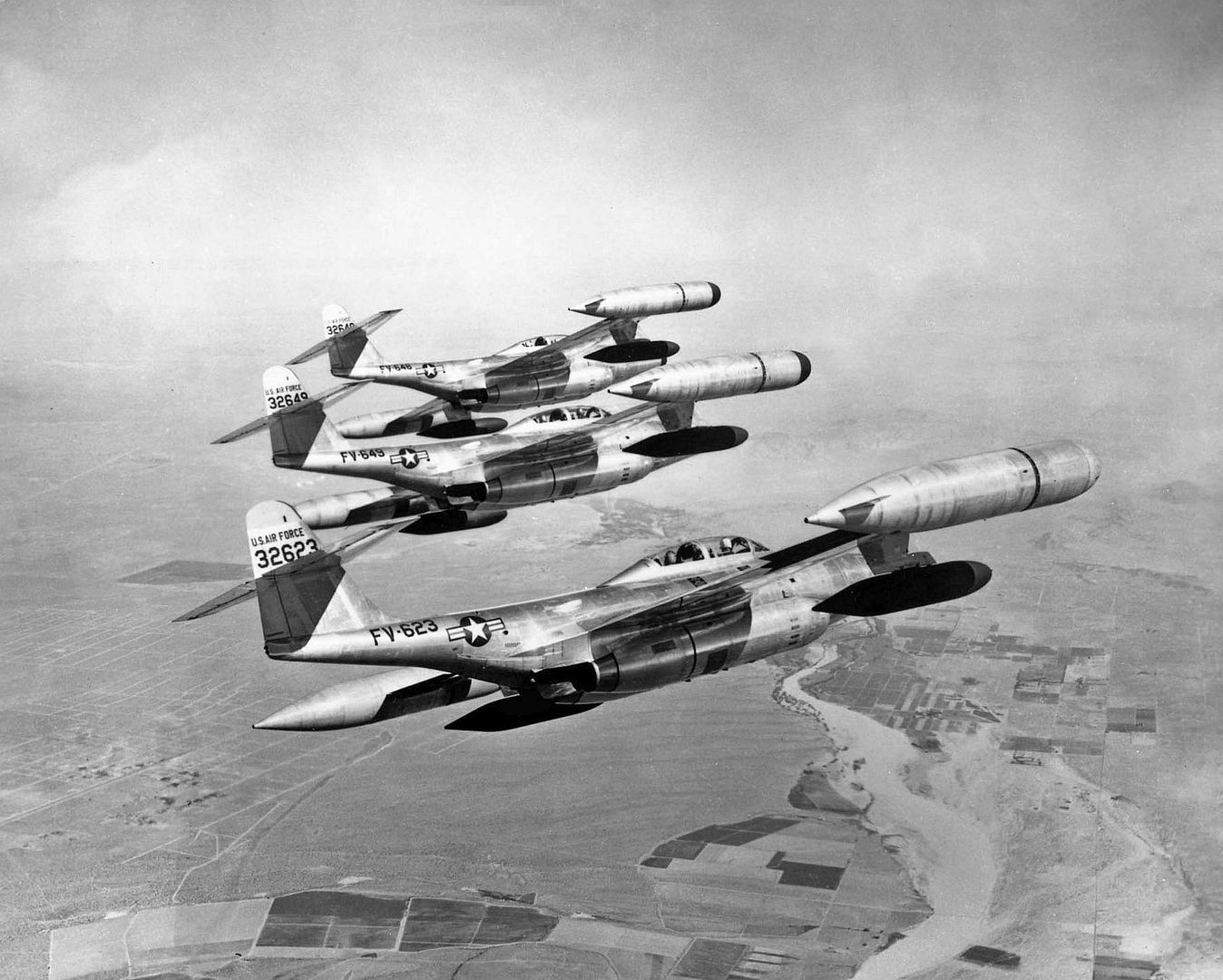
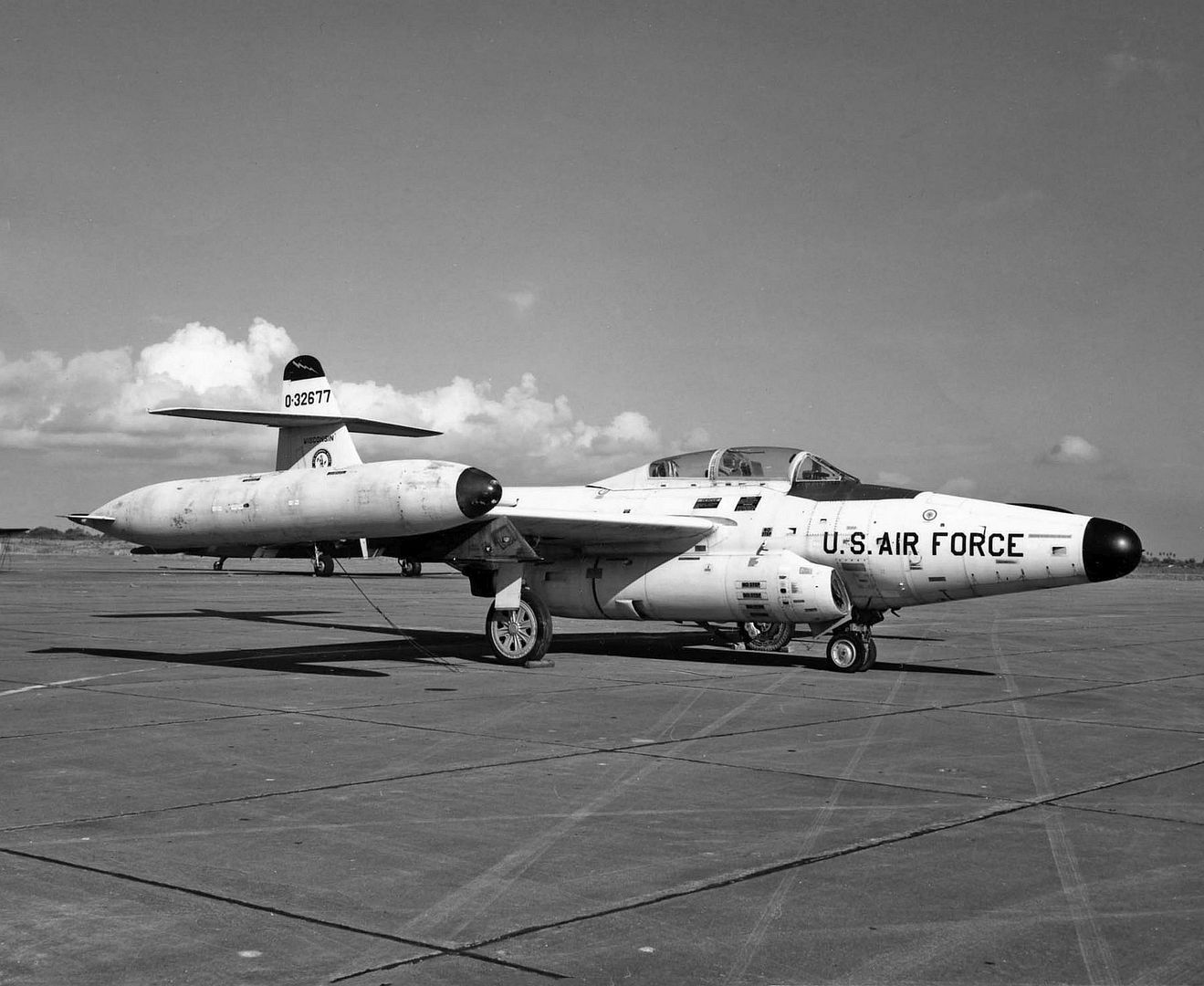
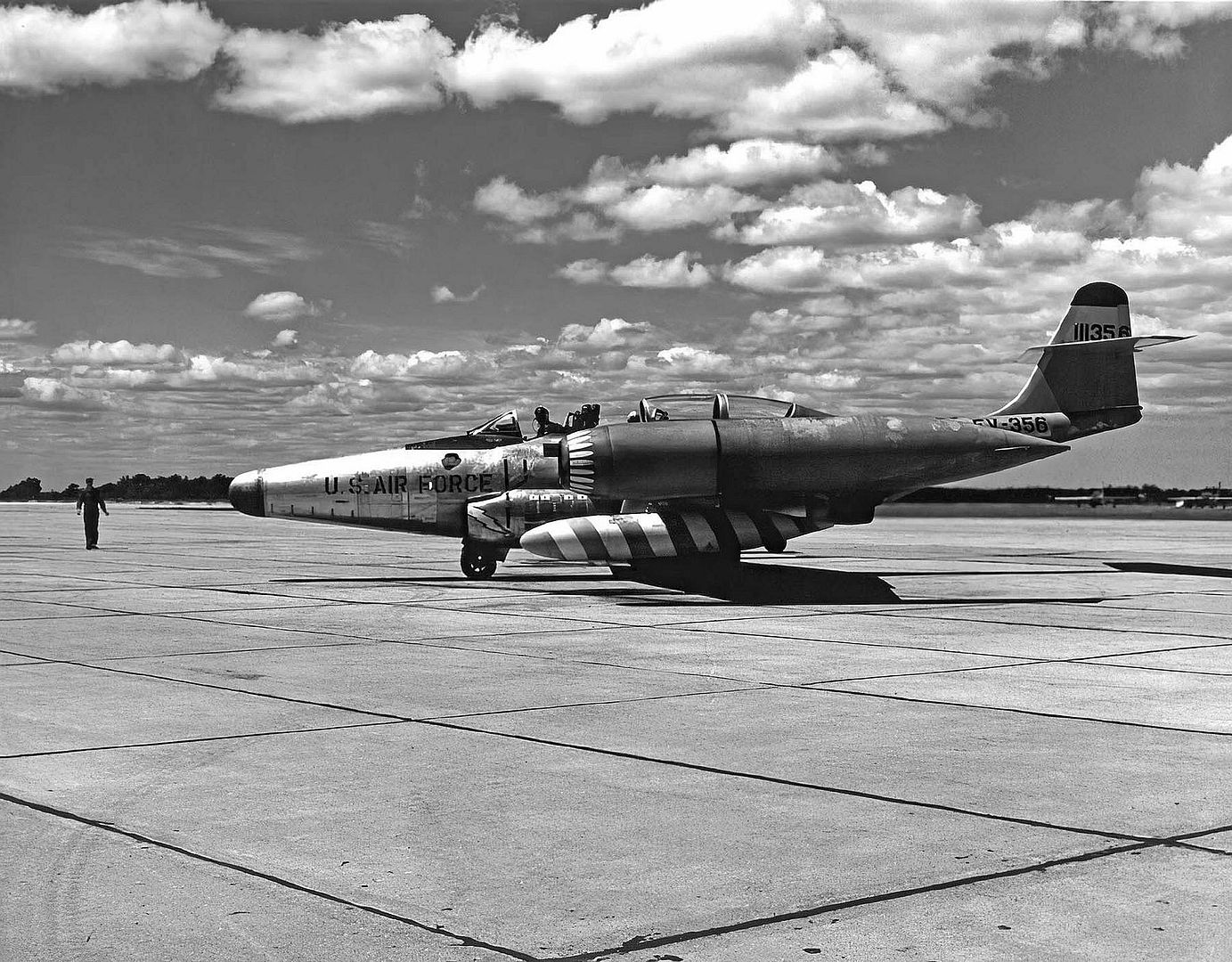
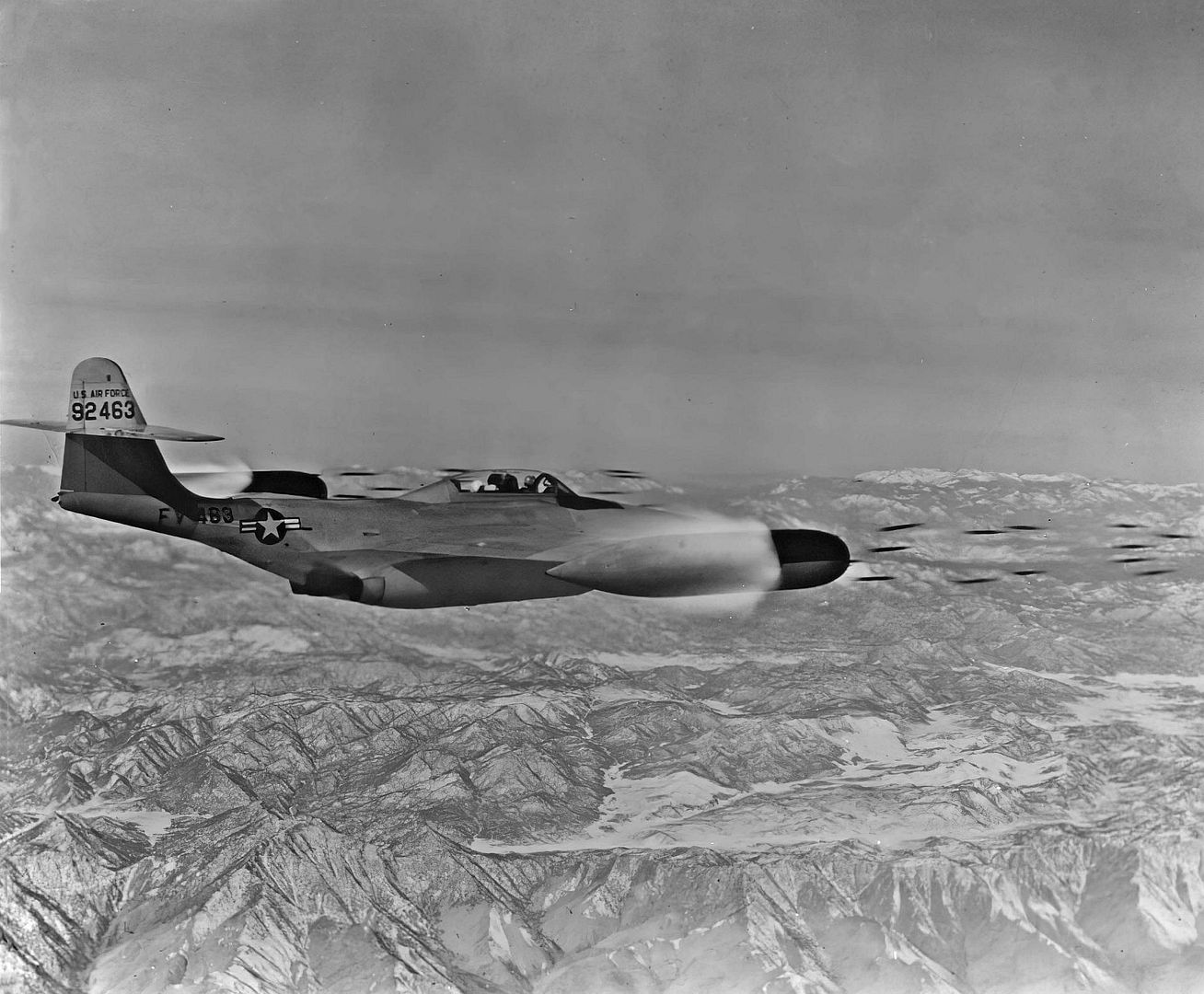
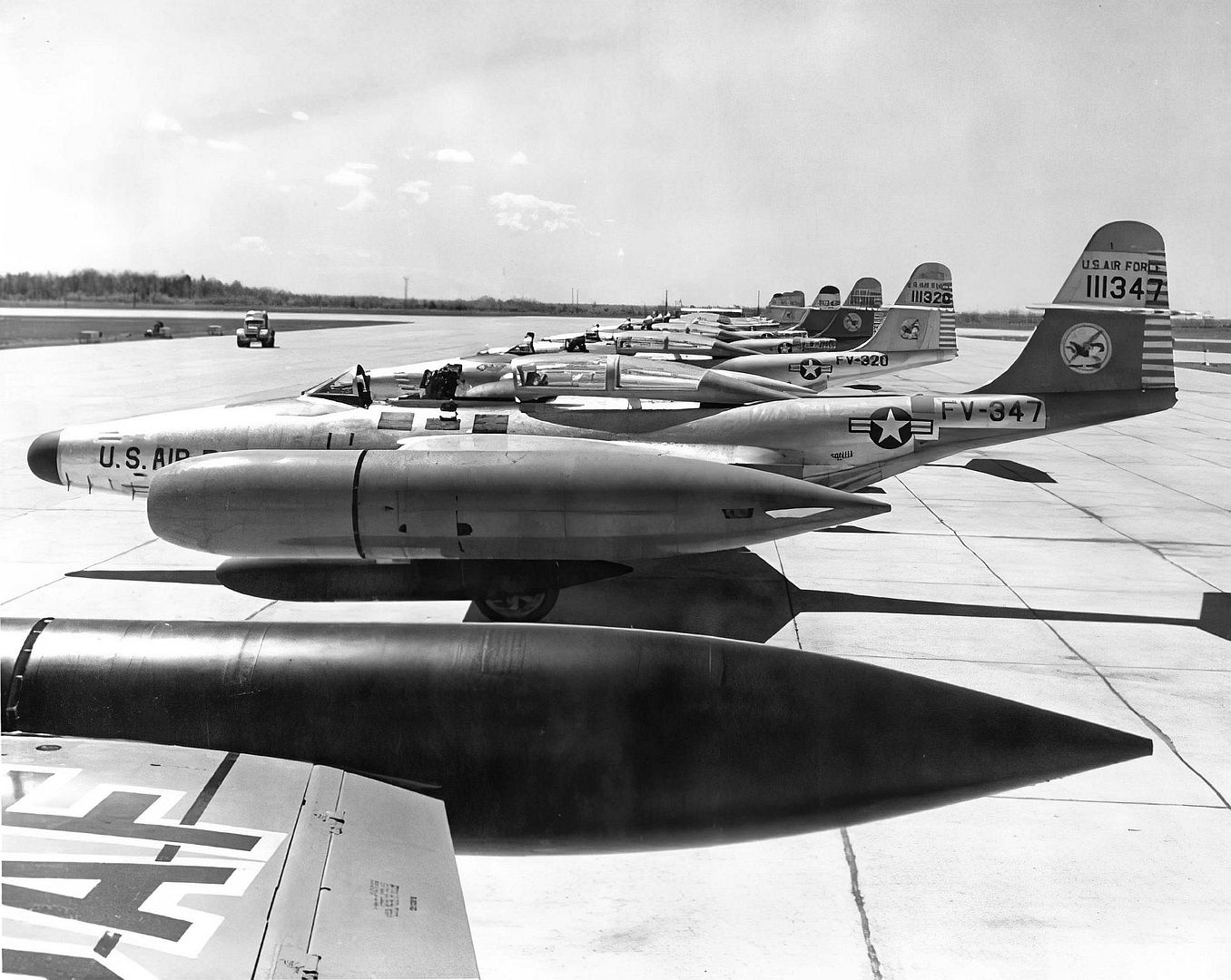
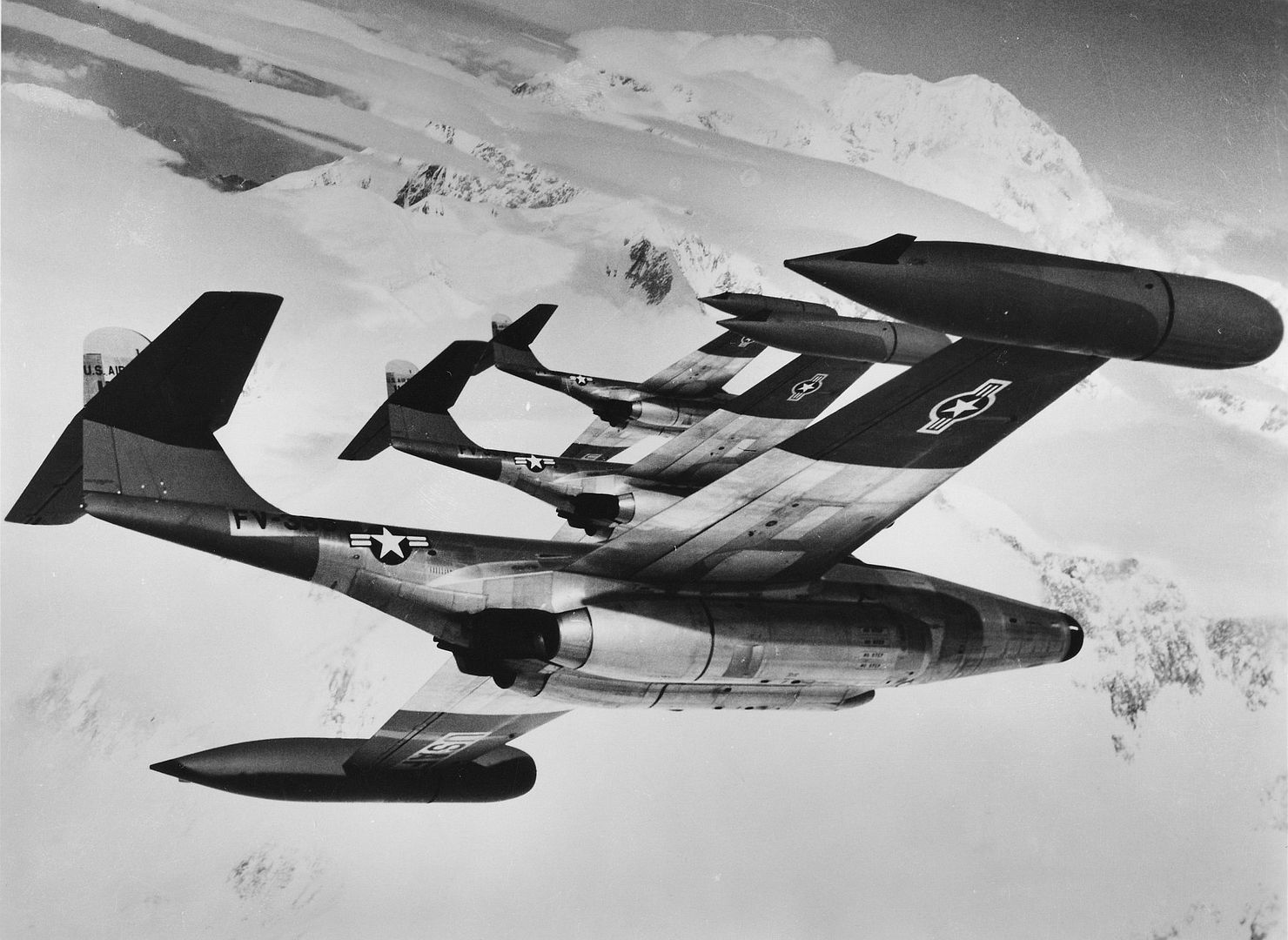
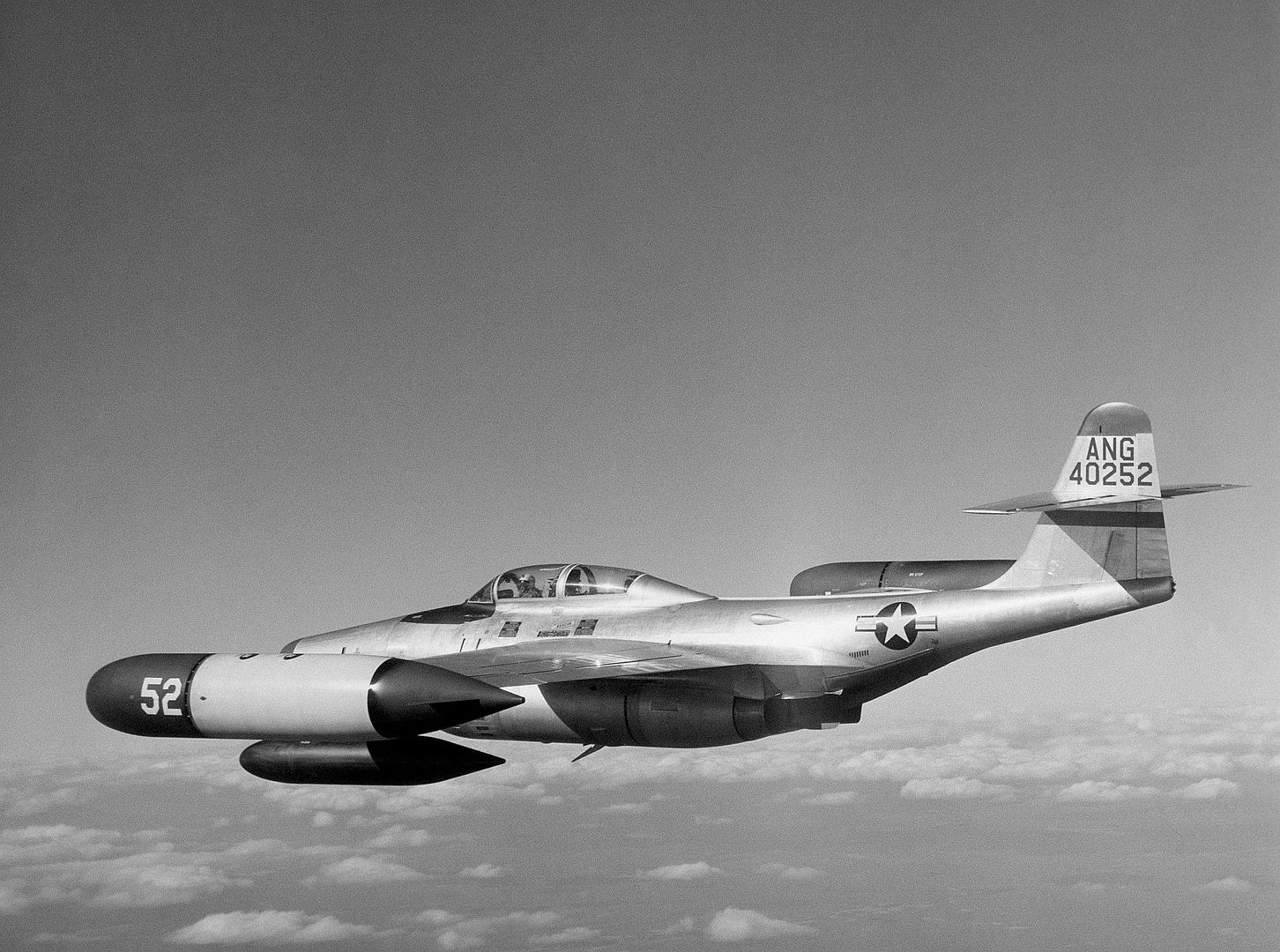
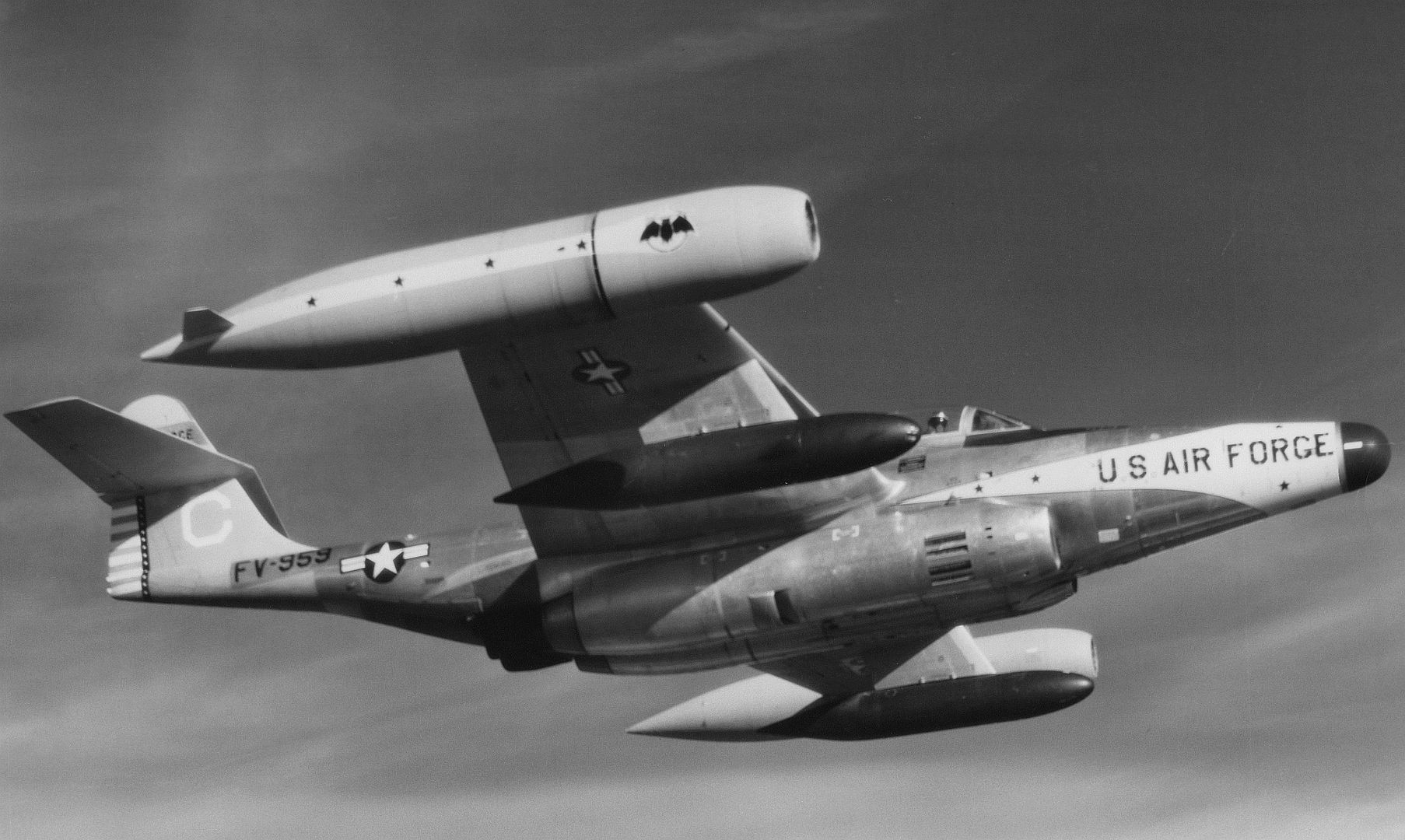
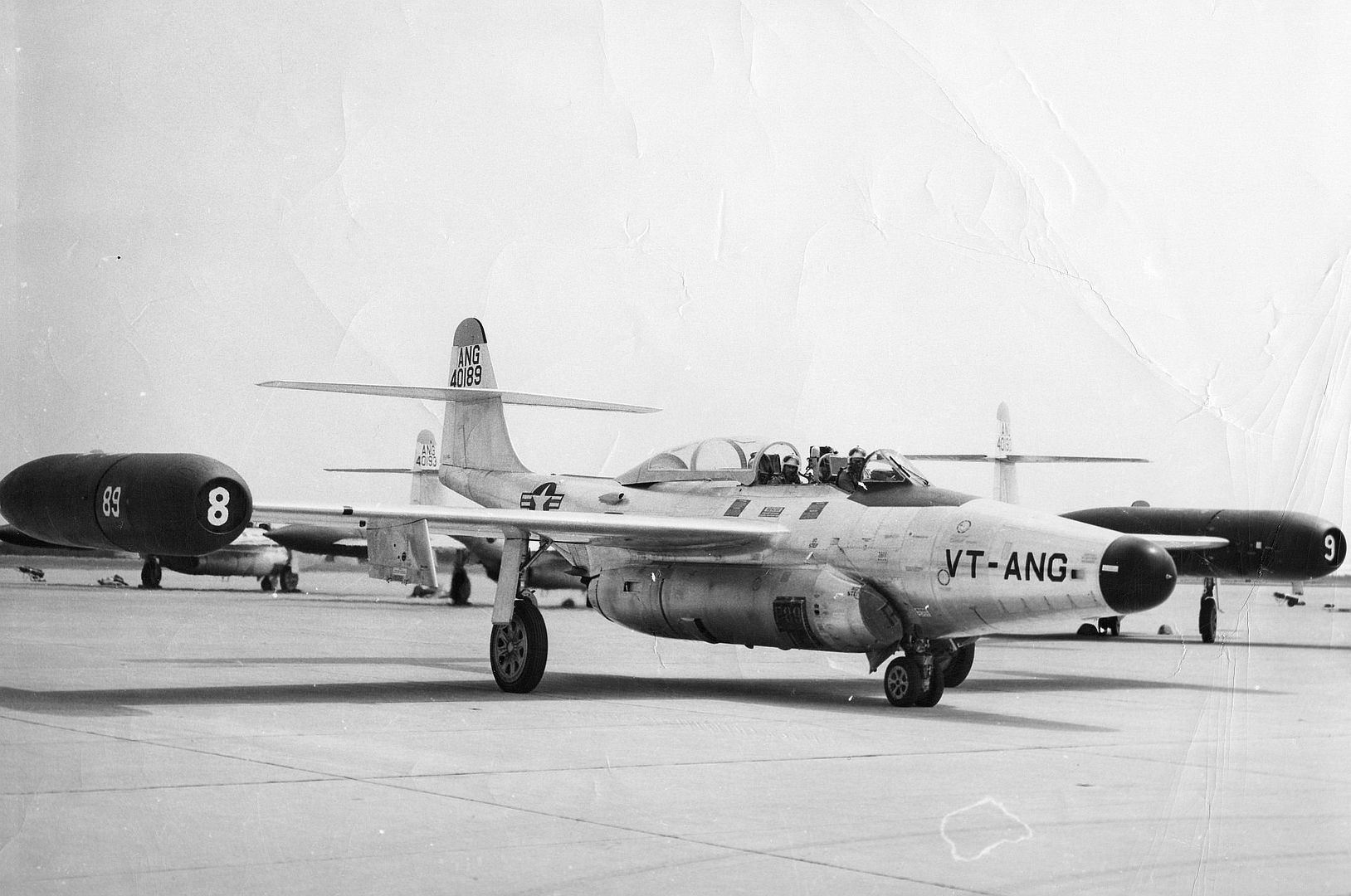
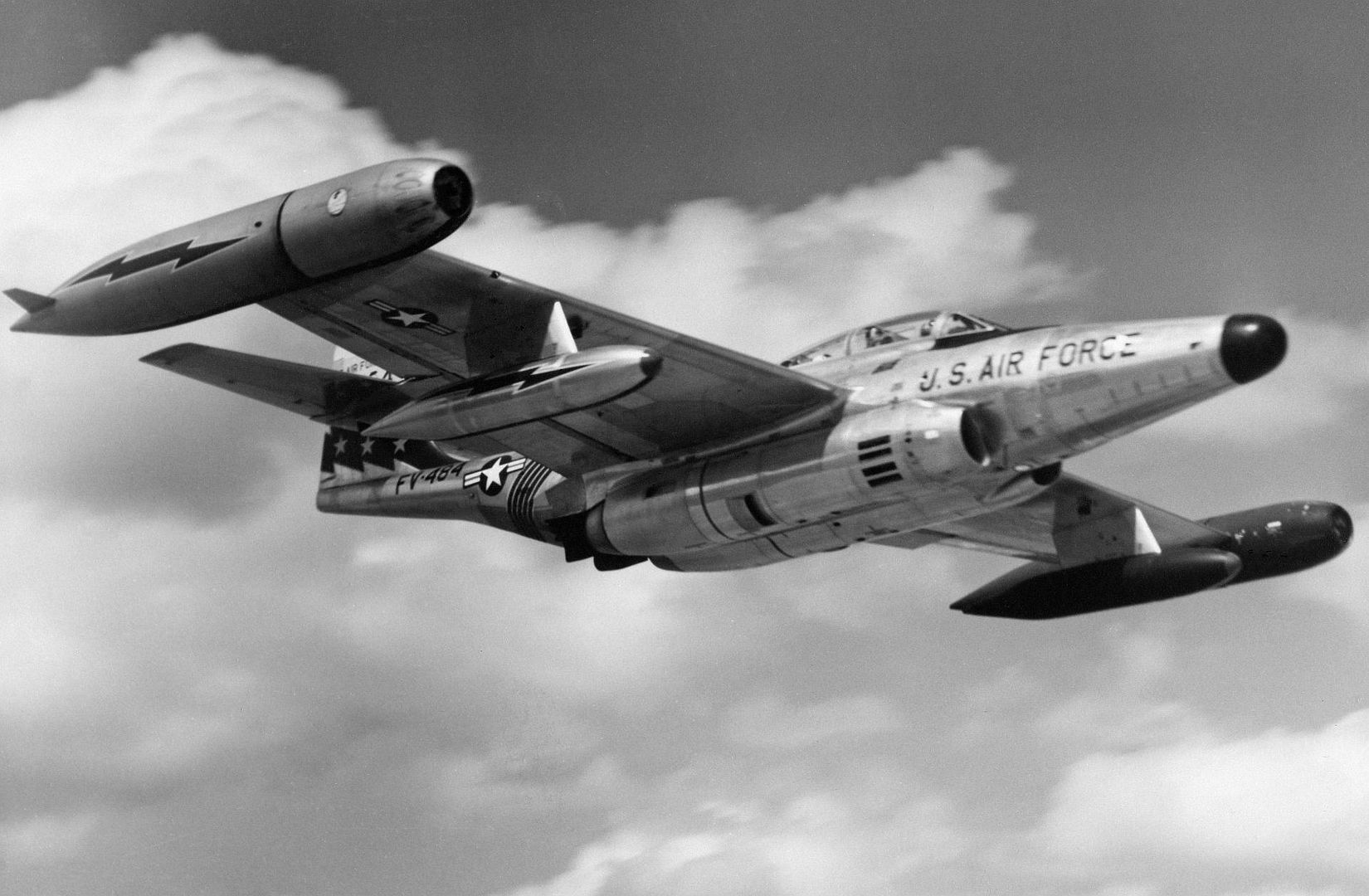
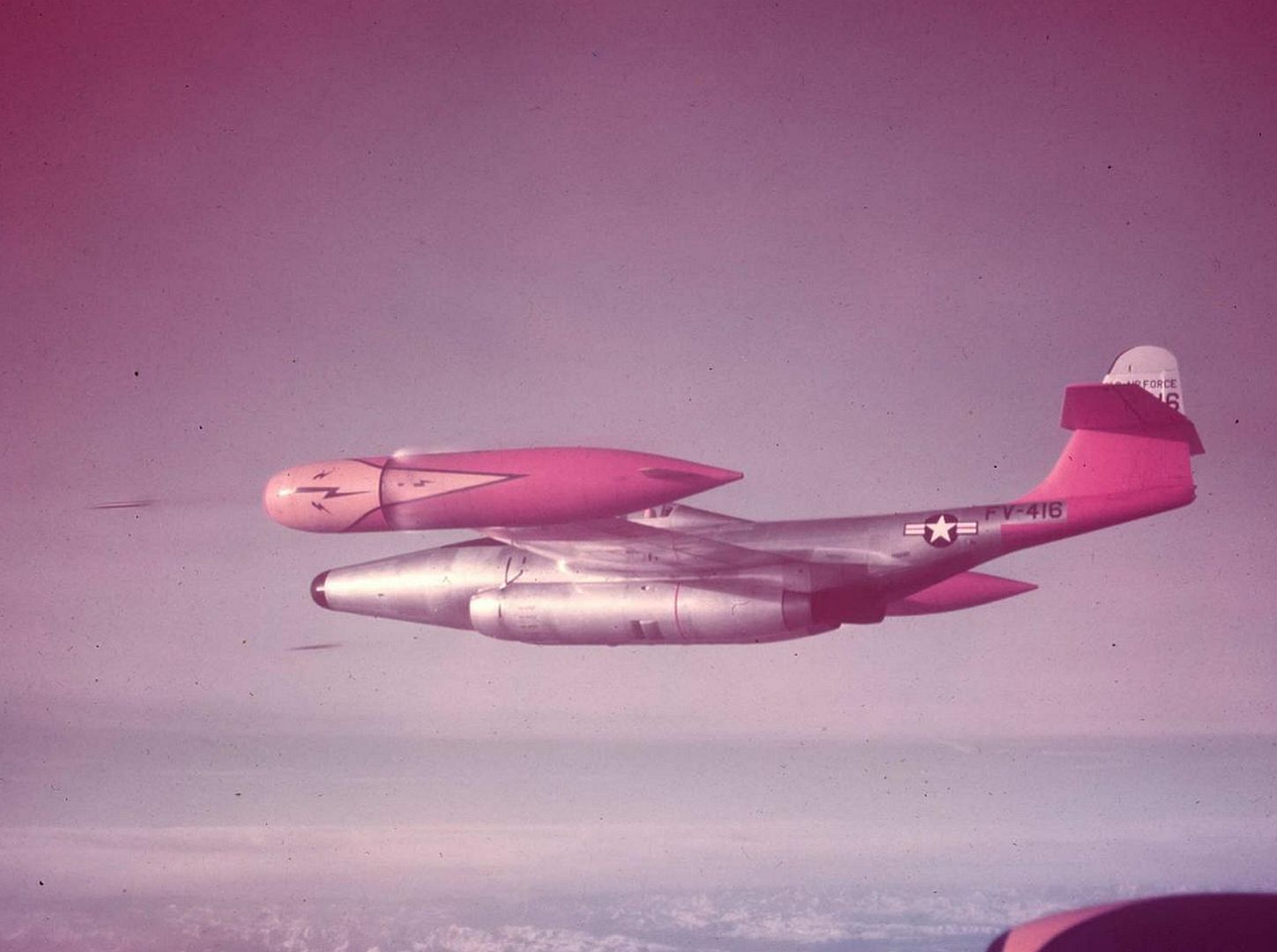


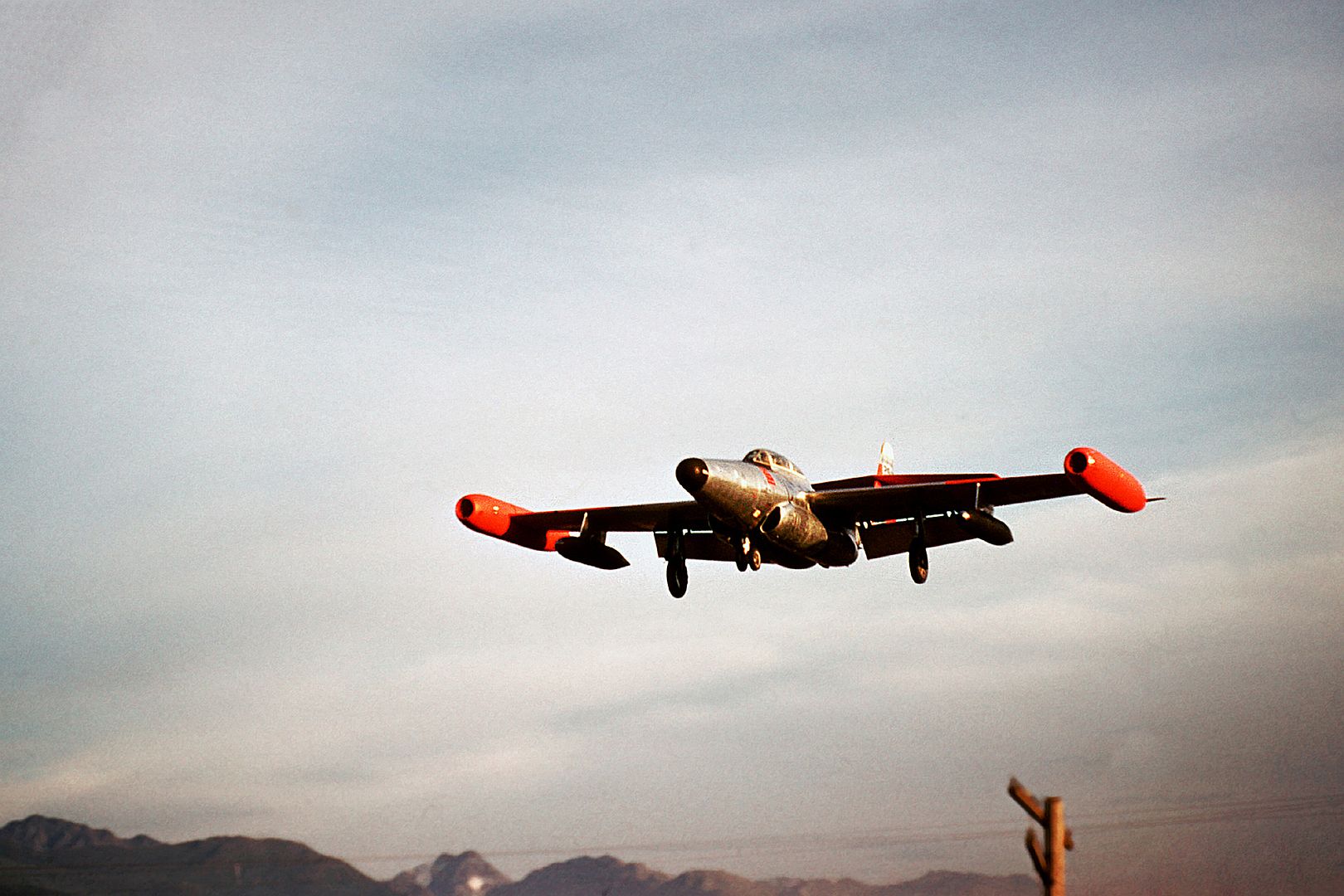
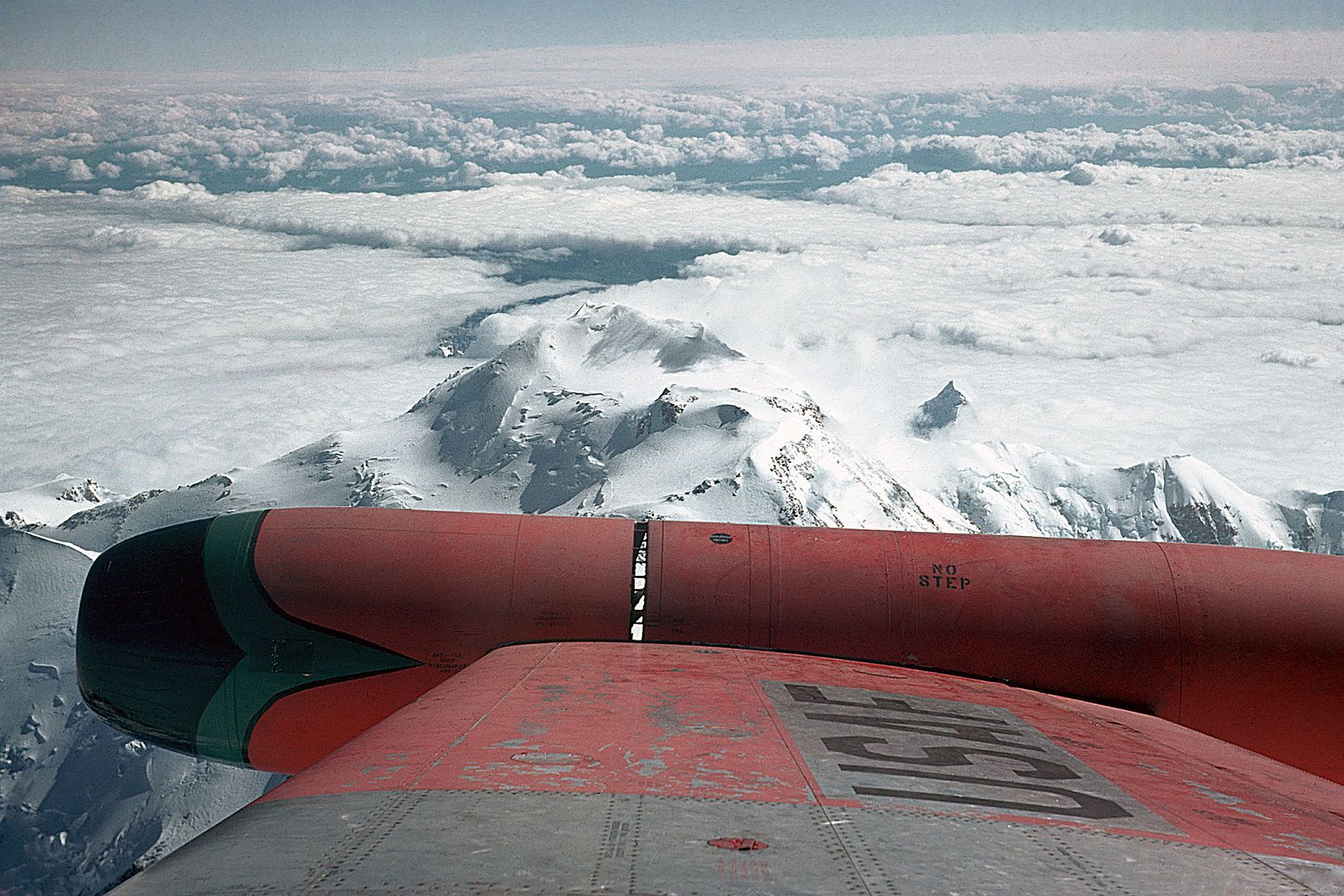


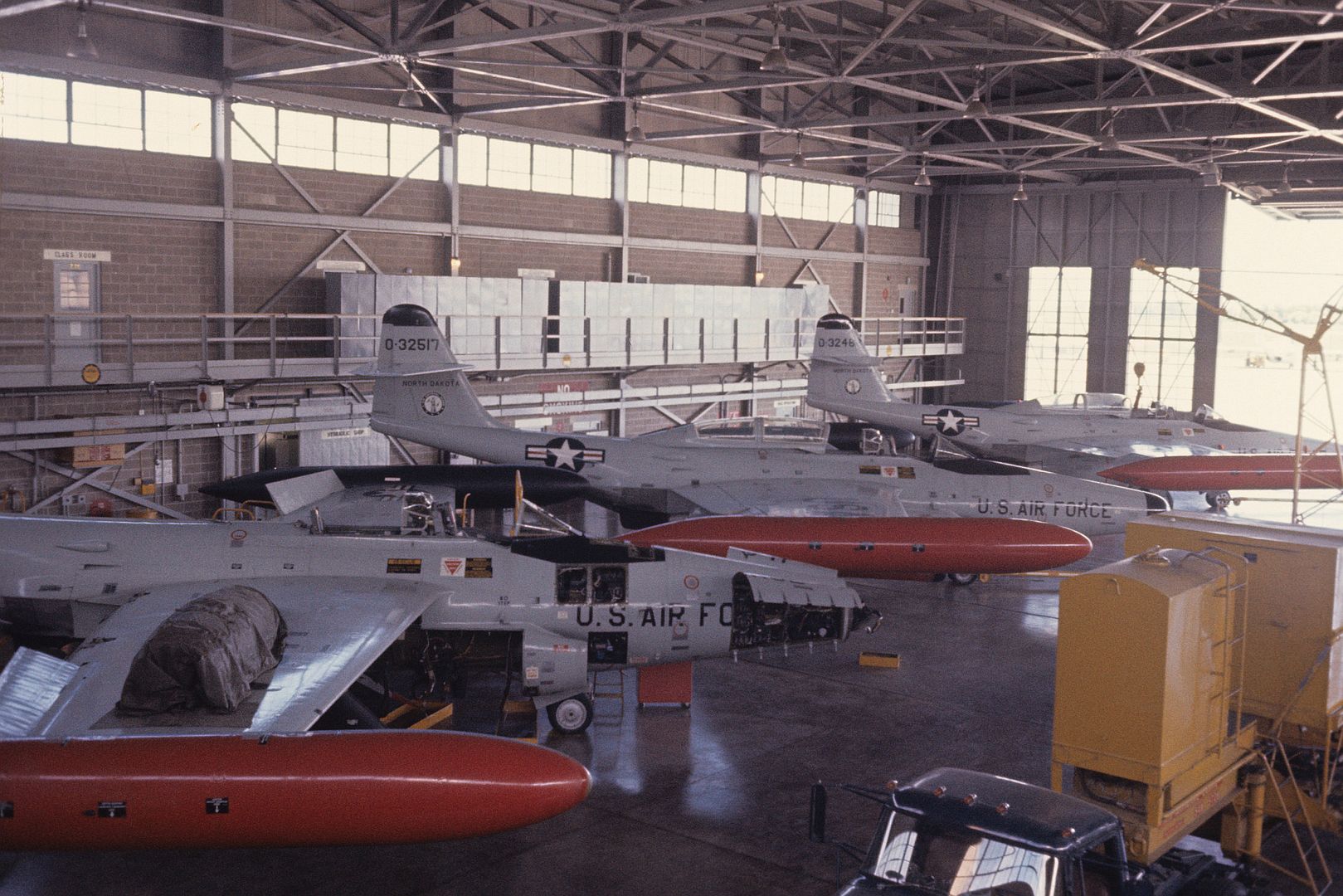
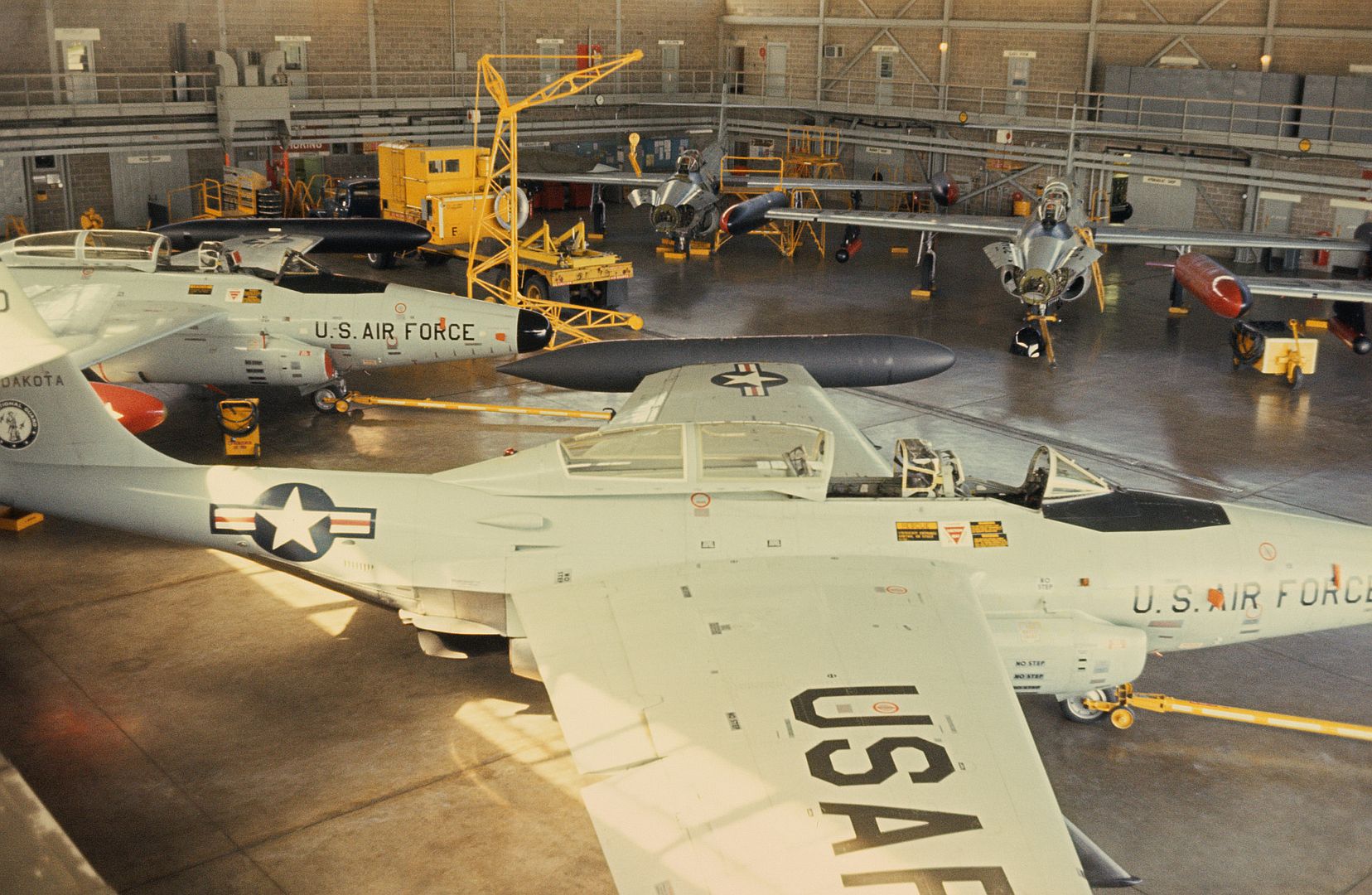

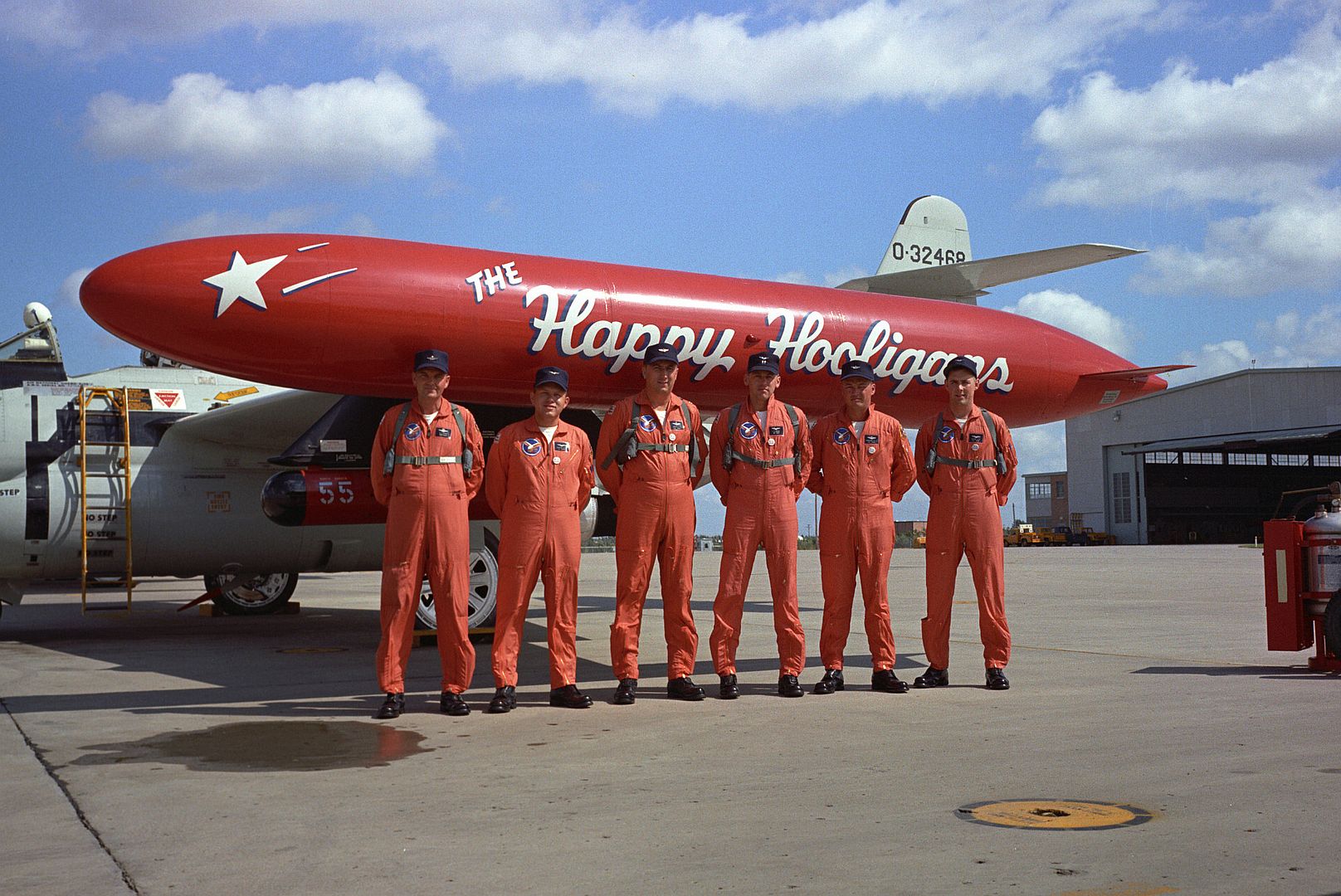
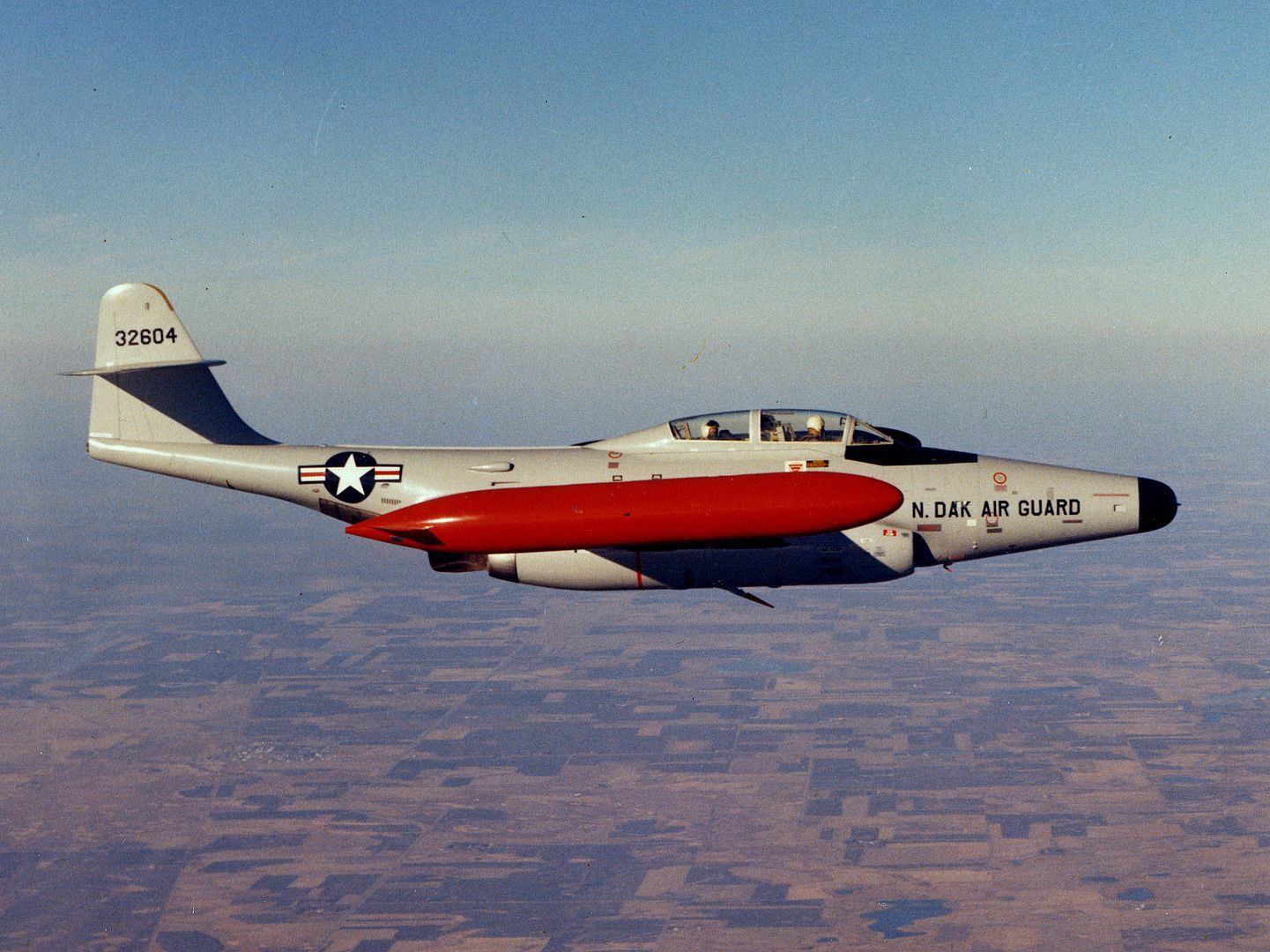
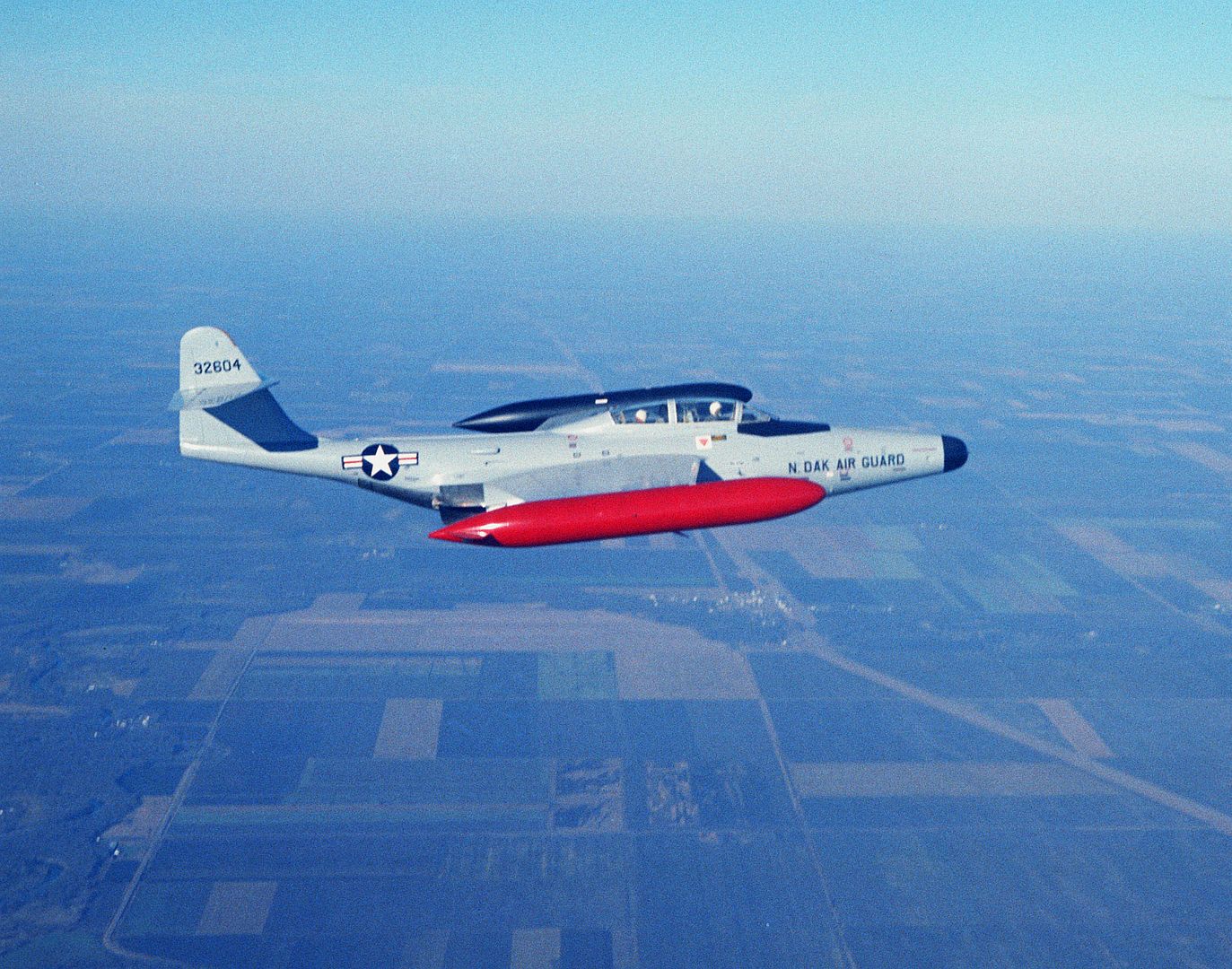
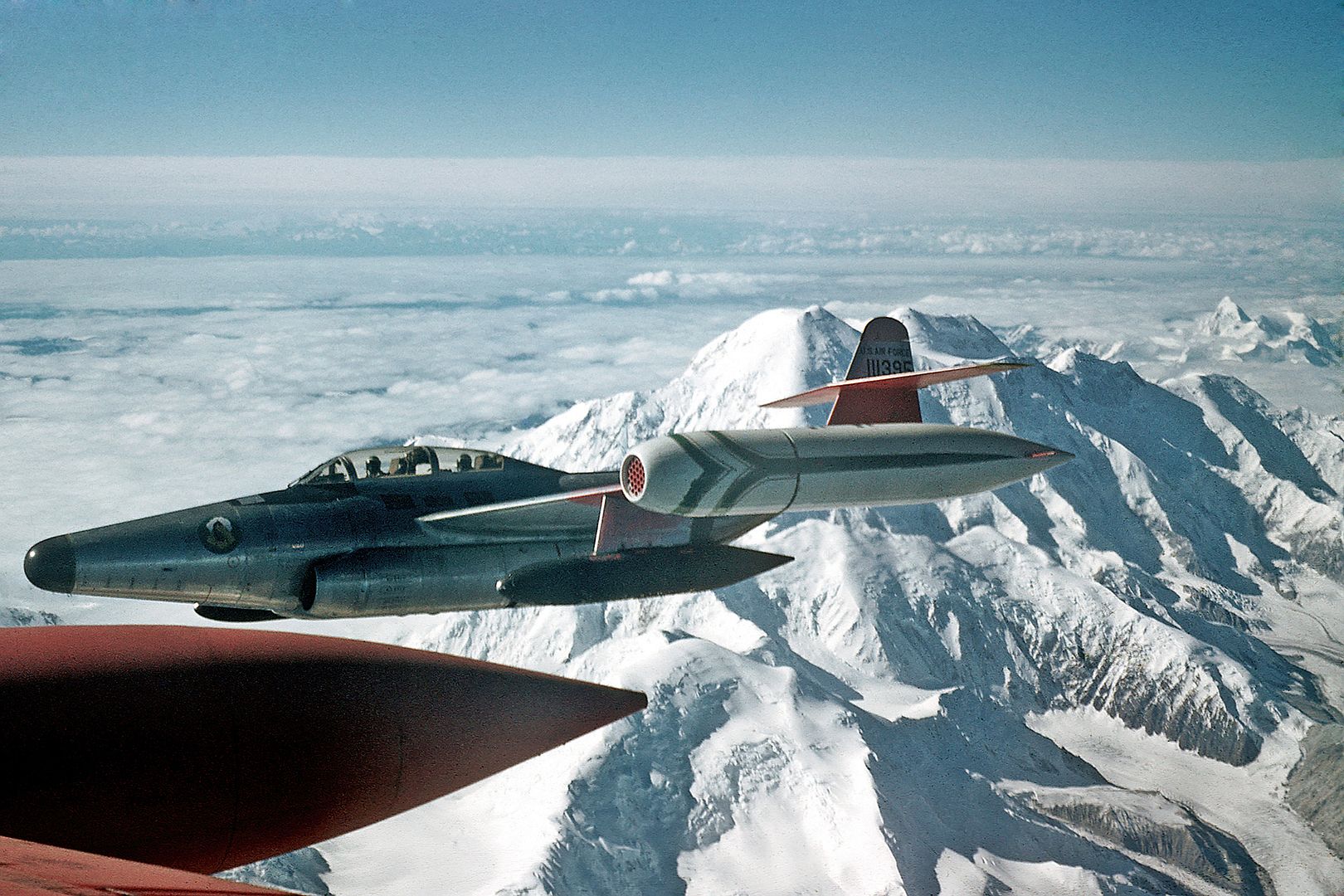

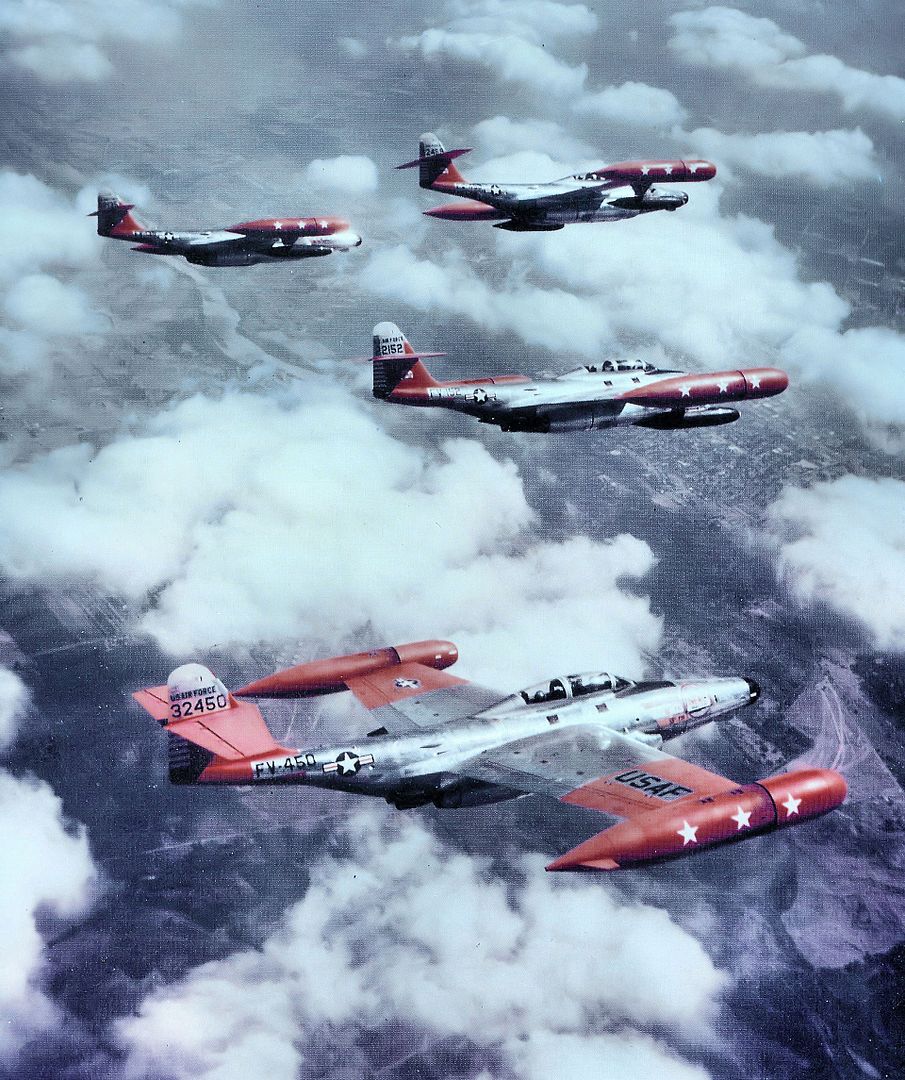

For a good read
LINK - http://axis-and-allies-paintworks.com/e107_plugins/forum/forum_viewtopic.php?id=305 -
2 years agoSun Feb 05 2023, 02:52pmDuggy
 Main AdminNorthrop F-89E Scorpion
Main AdminNorthrop F-89E Scorpion
The F-89E was to have been an F-89D re-engined with a pair of 9700 lb.s.t. Allison J71 non-afterburning turbojets. The J71 engines would, it was hoped, give the Scorpion greater power and better fuel consumption, which would result in a much longer range. One F-89C (50-762) was modified as a testbed under the designation XF-89E, and fitted with a pair of 9500 lb.s.t. YJ71-A-3 engines. The air intake was redesigned with a larger capture area and with an additional tip on the upper surface for better high angle attack performance. A pair of large airscoops were fitted underneath each nacelle for cooling purposes. The YF-89E prototype flew for the first time on June 10, 1954. However, the F-89E did not offer much improved performance beyond that of the F-89C/D, and the project was abandoned before anything could reach production. The XF-89E prototype continued to be used as a flying testbed.
The designation F-89E was also applied to a proposed single-seat escort fighter version of the Scorpion. The proposed F-89E was to be powered by a pair of 9100 lb.st. afterburning General Electric J47-GE-21 engines. The wings were enlarged and were fitted with a swept leading edge. The armament consisted of 108 FFARs mounted in a pair of large pods mounted at mid-span on the wings. The main landing gear was stowed inside the pods. The nose was to be altered to carryarmament--alternative arrangements of ten 0.50-inch machine guns, six 20-mm cannon, or six MX-904 rockets were considered. The escort fighter F-89E was projected to have a maximum speed of 688 mph and a combat radius of 1010 miles. The project never got past the design study stage.
Northrop F-89F Scorpion
The F-89F was a proposed advanced version of the F-89D. It was to be powered by a pair of 9100 lb.s.t. afterburning General Electric J47 engines. The wing was enlarged and was provided with a swept leading edge. It carried the same sort of midspan weapons/fuel pods as did the F-89E. The fuselage was deepened and was faired straight back from the canopy to the vertical fin. The horizontal stabilizers were moved from the fin down to the fuselage at the base of the vertical fin. The armament was to have been six Falcon air-to-air missiles and 42 2.75-inch FFAR rockets housed in the front of the weapons/fuel pods. The rear portion of the pods contained some 900 gallons of fuel. The dimensions were wingspan 59 feet 4 inches, length 59 feet 6 inches and a height of 21 feet.
The project actually proceeded as far as the mockup stage. However, as the design progressed, the projected weight continued to rise and the estimated performance fell. Consequently, the USAF lost interest in the F-89F, and the project was cancelled in August of 1952.
Northrop F-89G Scorpion
The F-89G was a proposed advanced version of the F-89D. It was similar in many respects to the F-89F, but it retained the pair of 7200 lb.st. Allison J35-A-35 afterburning engines used by the late F-89D.
The F-89G was to have carried the Hughes MA-1 fire control system that was being developed for the XF-106 project, and was to be armed with Falcon air-to-air missiles. The F-89G never progressed any farther than the design stage.
Northrop F-89H Scorpion
The F-89H (Model N-138) was an adaptation of the missile-armed F-89D to carry the new Falcon air-to-air missile. It was a direct outgrowth of the abortive F-89G program, which had been a proposal to mate the Hughes MA-1 fire control system with the Hughes Falcon air-to-air missile. With the cancellation of the F-89G project, the Northrop company proposed a more straightforward upgrade of the F-89D with the Hughes E-9 fire control system (a simplified version of the MA-1). The USAF agreed to the project, and four F-89Ds (52-1830, 52-1938, 52-1939, and 53-249) were modified to test the weapons system changes. However, only two of these (serial numbers 52-1938 and 52-1939) was redesignated YF-89H. Both were later upgraded to F-89J standard and served with the Air National Guard.
The wingtip pods of the F-89D were redesigned and enlarged with the forward third of each pod carrying six separate weapons compartments. Three of the compartments each held a single Hughes GAR-1 Falcon air-to-air missile, and the other three each carried a pack of seven 2.75-inch FFARs. So the total weapons load of the F-89H was six Falcons and 42 2.75-inch FFARs.
The Falcons were stored inside the wingtip pods until ready for firing. When ready for firing, the Falcons swung out on individual launchers through a pair of fairing doors on the pods.
The Hughes GAR-1 Falcon was the first guided AAM in the world to enter operational service. The first work on the Falcon had actually gotten started back in 1947. It had actually originally been assigned a designation in the fighter sequence: F-98. However, this was changed to GAR-1 in 1950. The Falcon weighed about 110 pounds at launch, and was powered by a Thiokol solid-propellant high-impulse rocket motor. The missile was fitted with four delta wings of extremely low aspect ratio, set at 90 degrees to each other, and each carrying a powered control surface at the rear. A 29-pound high-explosive warhead was carried, and the nose was fitted with a radar homing receiver. The GAR-1 used a semi-active radar homing technique, in which the launching aircraft's radar transmitter tracked the target and the missile homed in on radar waves reflected back from the target. Maximum speed of the Falcon missile was about Mach 2.8, and effective range was about 4 miles. In 1962, the designation of the GAR-1 Falcon was changed to AIM-4.
Later, an infrared homing version of the Falcon was developed. The infrared Falcon was known as GAR-2 (later changed to AIM-4B), and it became standard practice for the Scorpion to carry three radar homing and three infrared-homing Falcons. Were the Falcons to be fired in actual combat, the plan was usually to fire one Falcon of each type at the target in order to ensure a high probability of a kill.
The E-9 fire control system had a "universal computer" which enabled the crew to select the best mode of interception. The F-89H could use either a lead collision intercept mode (FFARs only) or a tail chase interception mode (Falcons and/or FFARs).
The USAF accepted the first production F-89H in September of 1955, but it was not until March of 1956 that the first F-89Hs became operational with the 445th Fighter Interceptor Squadron at Wurtsmith AFB in Michigan, almost two years later than originally scheduled. The delays were primarily caused by problems which developed with both the missile launching pods and with the E-9 fire control system. Just as in the case of the F-89D, there were problems with corrosion in the missile launching cavities which could result in an explosion or misfire if left uncorrected. The E-9 fire control system had a host of minor technical problems which needed to be worked out before maximum performance could be attained from the missile armament.
Because of the rapid advances being made in the supersonic interceptor program, particularly with the Convair F-102A Delta Dagger, the service life of the F-89H with the USAF was destined to be relatively brief. In November of 1957, the first F-89H was transferred to the Air National Guard, entering service with the 123rd FIS of the Oregon ANG at Portland. By September of 1959, all USAF F-89H interceptors had been passed along to the ANG.
Serials of the F-89H:
54-261/320 Northrop F-89H-1-NO Scorpion
54-321/416 Northrop F-89H-5-NO Scorpion
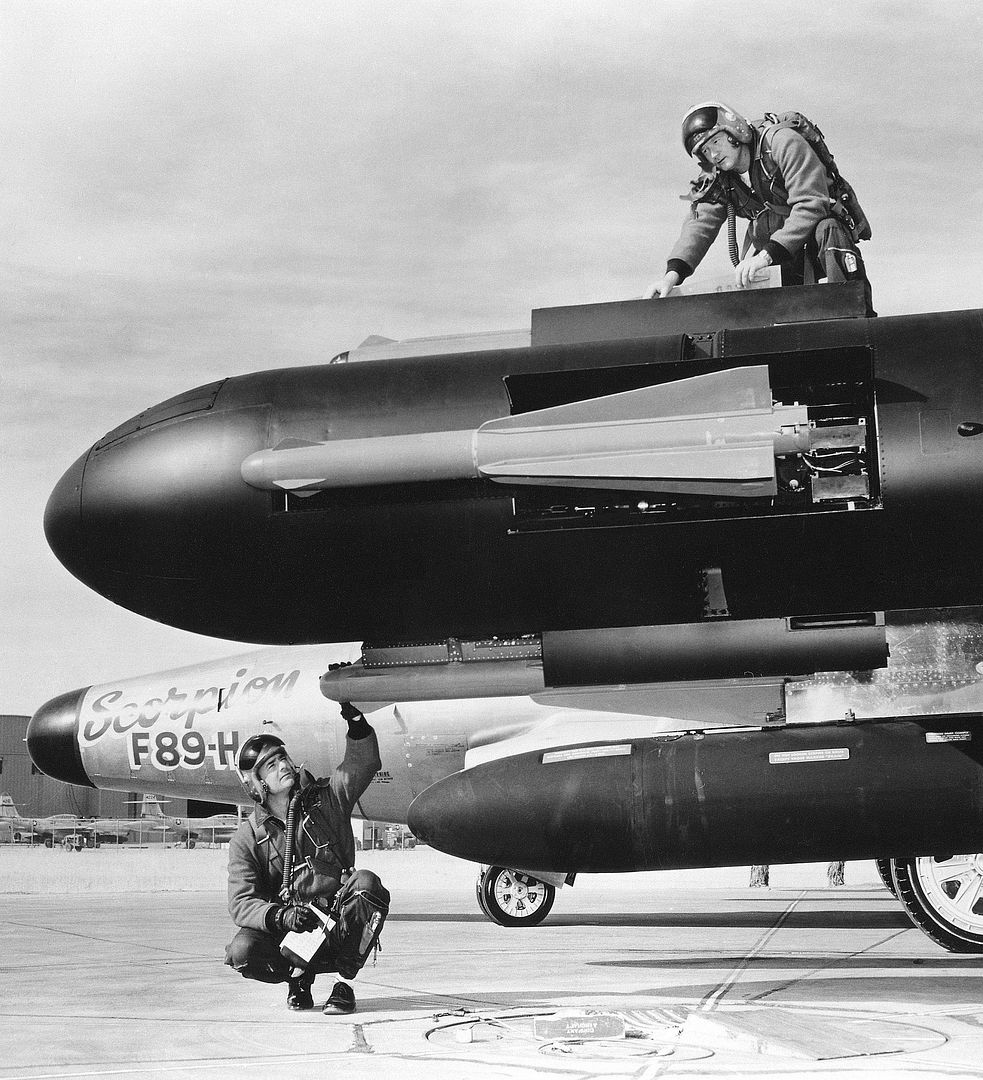

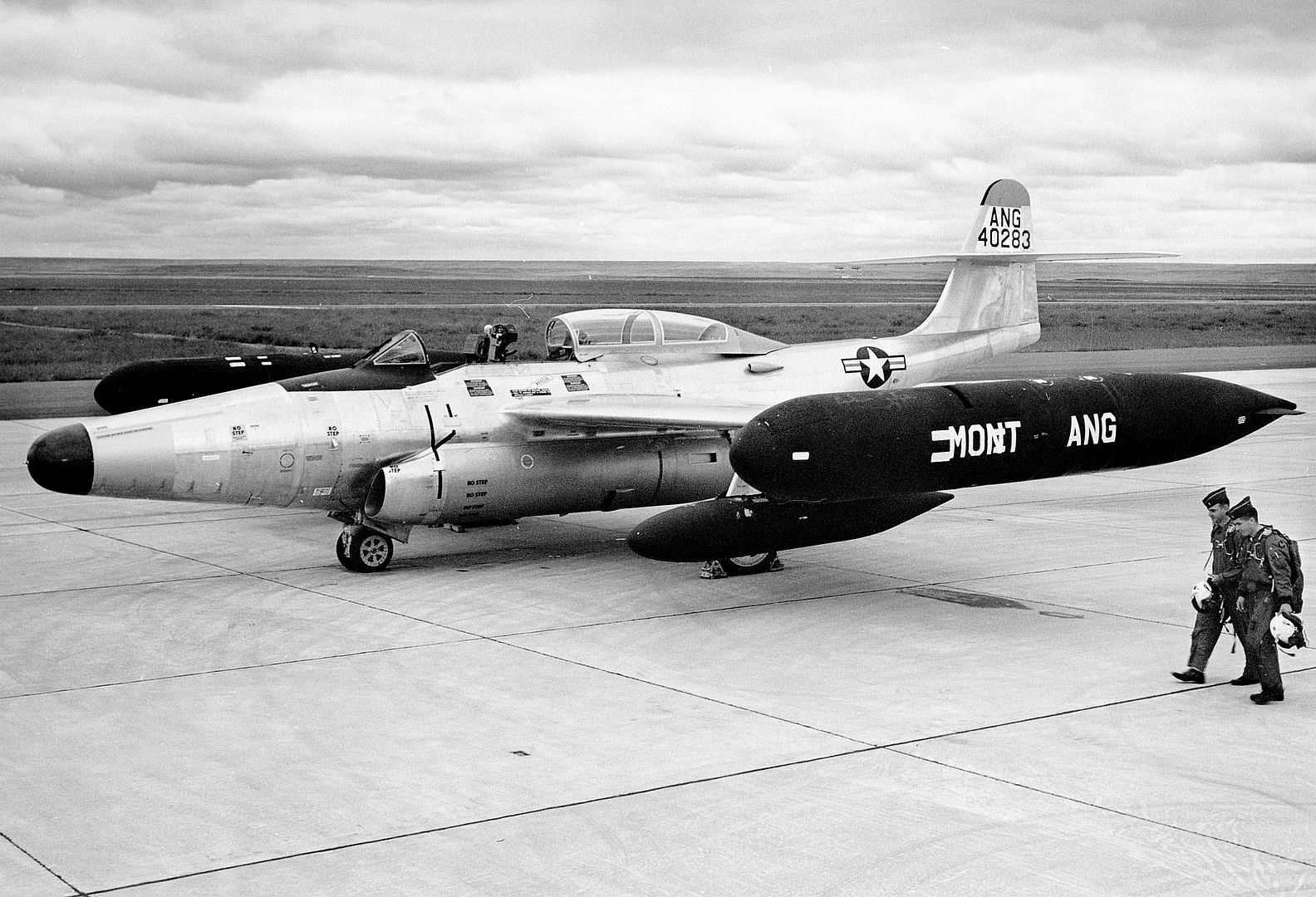

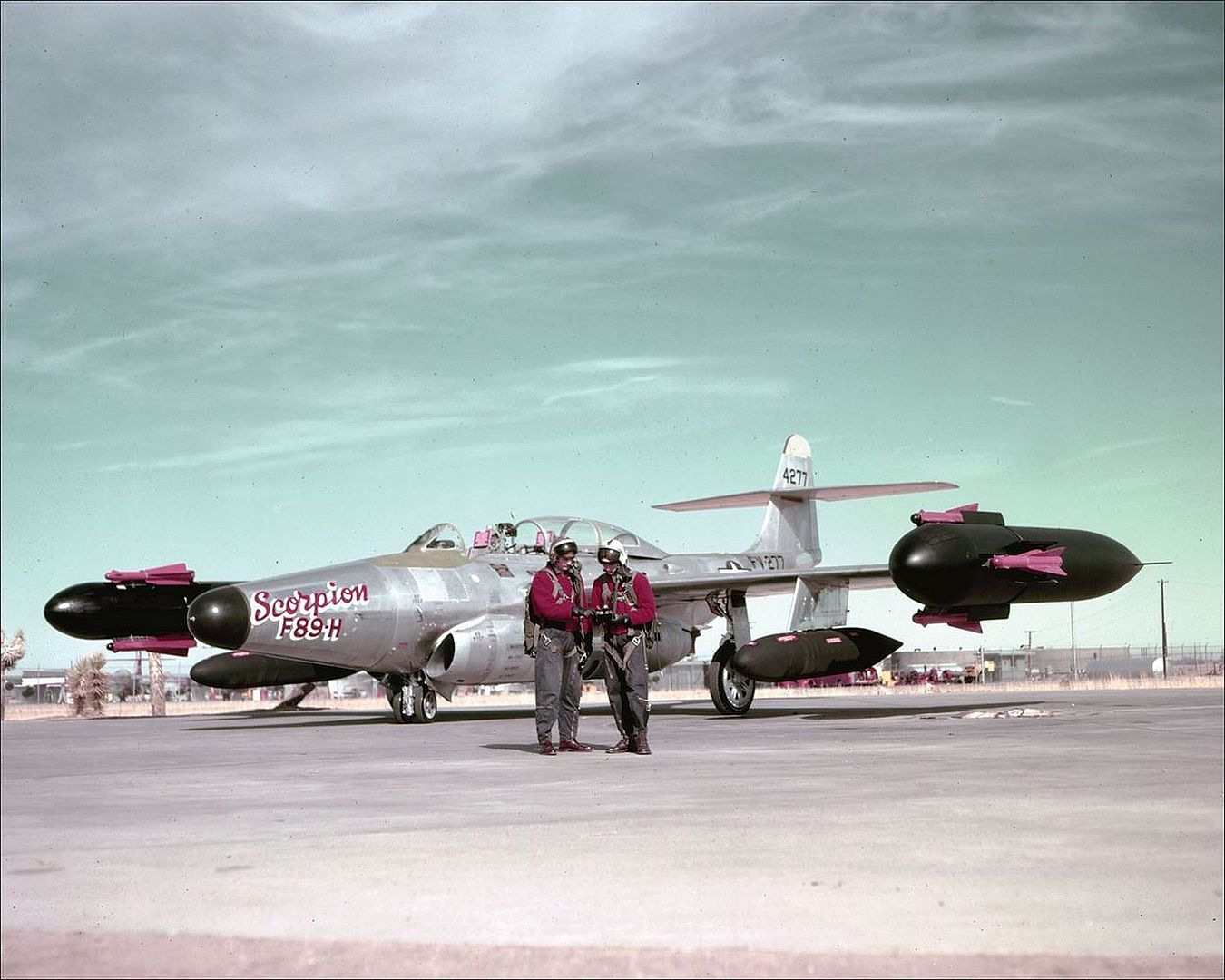
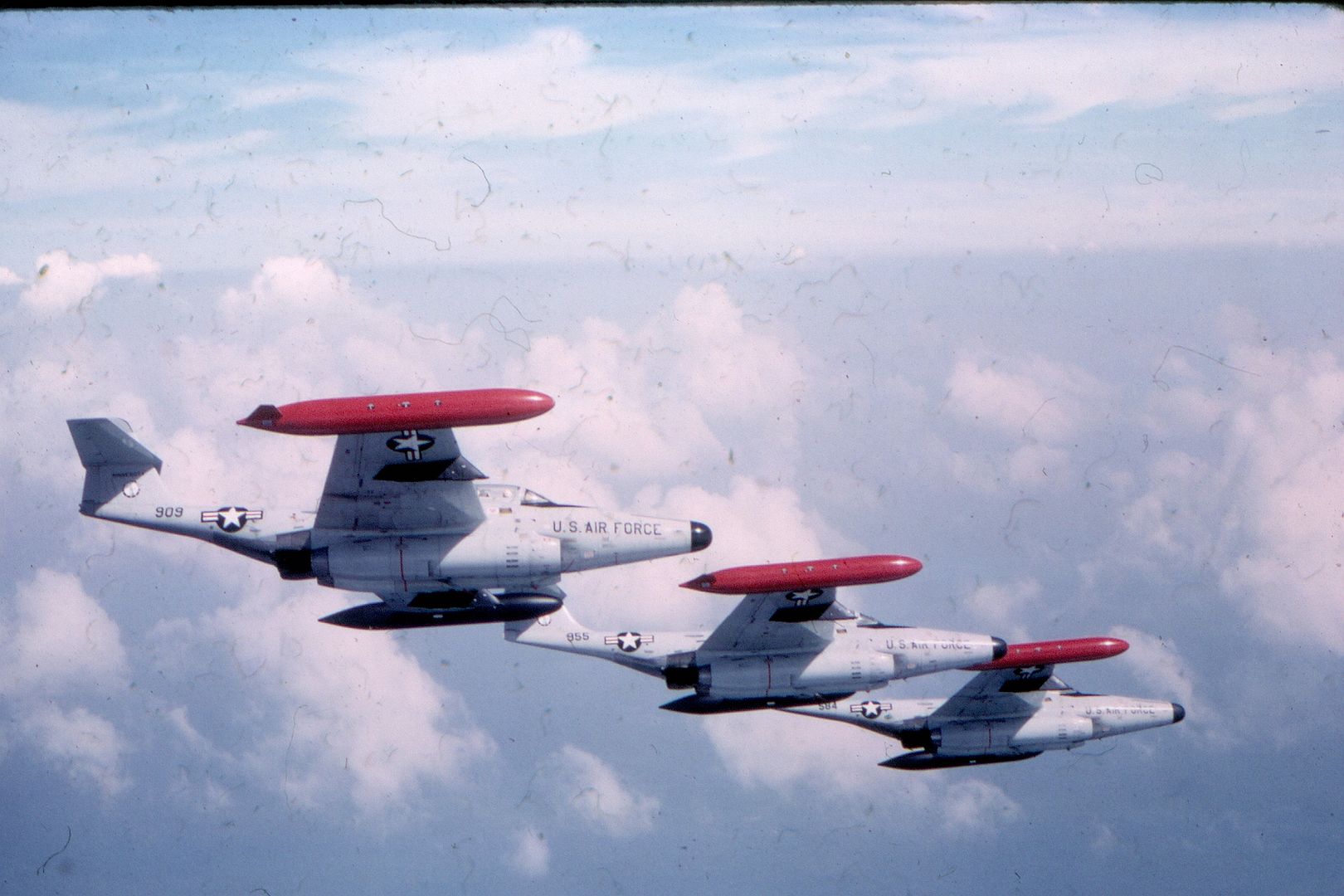
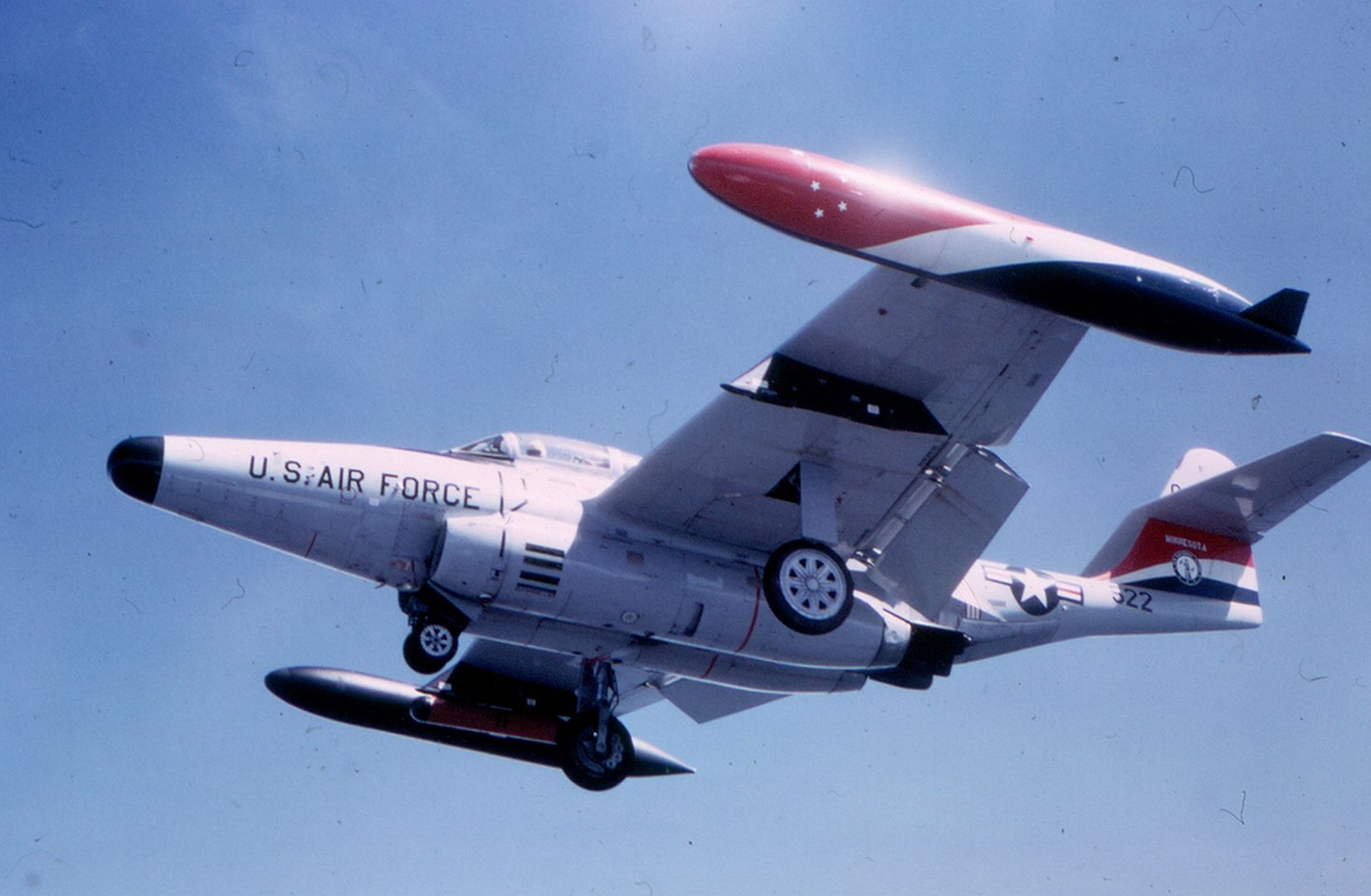
Northrop F-89J Scorpion
The F-89J (Model N-160) was the designation given to earlier F-89Ds that were modified in service to carry the Douglas MB-1 Genie nuclear-tipped unguided air-to-air rocket.
Development of the Genie rocket was begun by Douglas Aircraft in 1955, with the Los Alamos National Laboratory being given the responsibility for the nuclear warhead. The Genie rocket was unguided, relying on the power of its nuclear warhead rather than on guidance to ensure a kill. The MB-1 Genie rocket was powered by a 36,600 pound thrust Thiokol TU-389 rocket motor. Launch weight was 822 pounds, and maximum velocity was about Mach 3.3. There was a set of flick-out fin-tips which gave the Genie stability in flight and which corrected for roll and gravity drop. The range of the Genie was about 6 miles, and the rocket was equipped with a W25 nuclear warhead with a 1.5-kiloton yield. The lethal radius of the blast was estimated to be about 1000 feet.
The F-89J was equipped to carry two Genies on launching rails that were mounted on the underwing pylons. On most F-89Js, the wingtip armament pods of the F-89D were removed and replaced by 600-gallon fuel tanks, although a few F-89Js still retained the standard F-89D wingtip pods. Later, the F-89J was further modified by adding two additional underwing pylons on each wing located inboard of the Genie pylon for Falcon air-to-air missiles. These four Falcons carried conventional high-explosive warheads. However, in practice these Falcons were rarely carried and the extra pylons were often removed.
The F-89J was equipped with the Hughes MG-12 fire control system, an upgraded and more advanced version of the E-5 of the F-89D. This system made it possible for the crew to launch the Genie while in a nose-up, climbing attitude, making it possible to attack bombers that were flying at a much higher altitude. During an intercept, the Hughes fire-control system tracked the target, assigned the missile, commanded the pilot to arm the nuclear warhead, fired the missile, pulled the interceptor into a tight turn to escape the detonation, then triggered the nuclear warhead by remote control at the right moment.
The modified F-89J became known as "Weapons System 205G". Initial deliveries of the F-89J were made during November of 1956, with the 84th Fighter Interceptor Squadron at Hamilton AFB in California being the first receipient. This squadron began standing active alerts on January 1, 1957. Initially, the aircraft were armed with just one Genie rocket.
There were a total of 350 F-89Ds modified to F-89J standards. The planes were taken from the D-35 through D-75 production blocks. These modifications were carried out between March of 1956 and February of 1958.
The first production Genie rockets arrived in the field in May of 1957. Approximately 3150 Genies and their associated nuclear warheads were manufactured between 1956 and 1963. In 1962, the designation of the Genie was changed to AIR-2A.
The first live firing of a nuclear-tipped Genie took place on July 19, 1957, during a series of nuclear tests known as Operation PLUM BOB. On that day, F-89J serial number 53-2547 fired an MB-1 over the Yucca Flats Nuclear Test Site, and the warhead was detonated at an altitude of 15,000 feet by a signal from the ground. This shot, named JOHN, made the Scorpion the first interceptor in history to launch a nuclear weapon. In order to prove that the Genie could safely be used over populated areas in the US, several Air Force officers volunteered to stand on the ground directly underneath the detonation point. Following the test, these men were apparently unharmed, although I suppose that one might want to check and see what happened to them in later years.
The F-89J, with the two nuclear Genies and the four Falcons (plus 104 FFAR rockets when carrying the F-89D pods), was the most heavily-armed interceptor in the USAF inventory. However, the F-89J was destined for only a short service life, being replaced by the supersonic McDonnell F-101B Voodoo and the Convair F-106A Delta Dart starting in July of 1959.
The F-89Js were then transferred to the Air National Guard. By 1962, some nine ANG squadrons were equipped with nuclear-armed F-89Js. Air National Guard units stood numerous nuclear alerts. The F-89J remained in service with the 132nd FIS of the Maine ANG and the 134th FIS of the Iowa ANG until late 1968, when they were replaced by supersonic aircraft.
In 1963, ten F-89Js had their nose radars removed and were fitted with additional underwing fuel tanks and were used for testing of Nike missile defenses in Japan. These aircraft were redesignated DF-89J.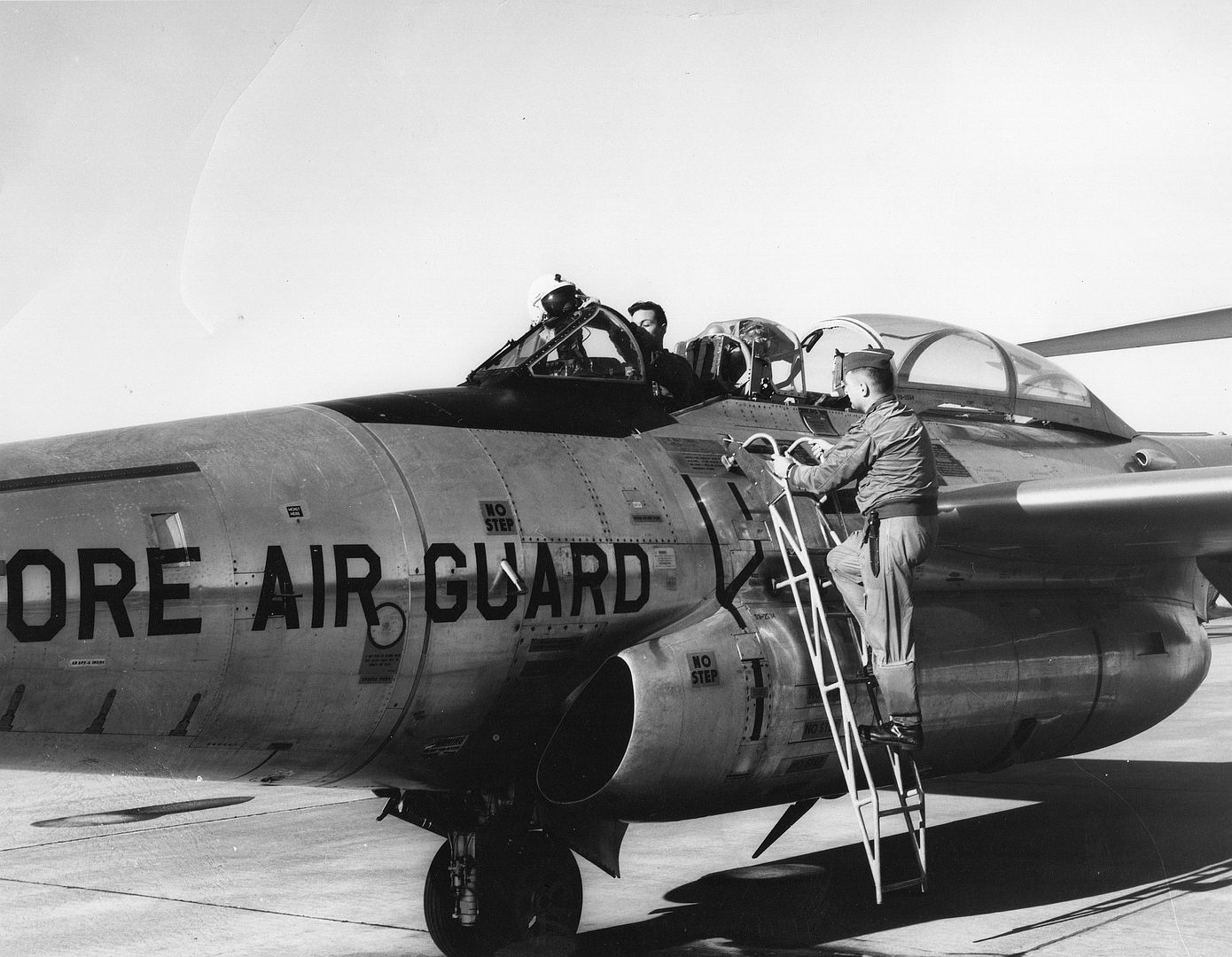
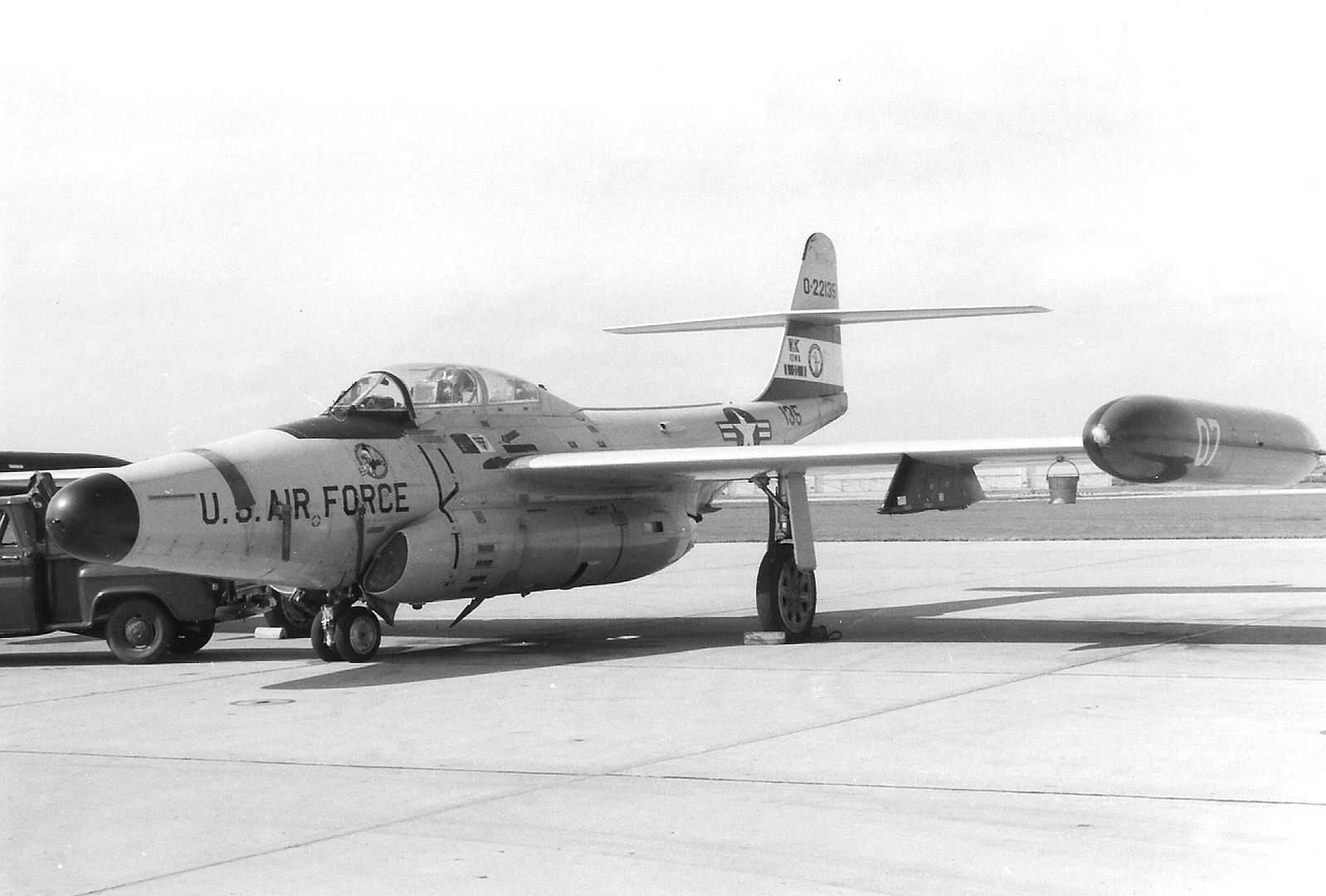
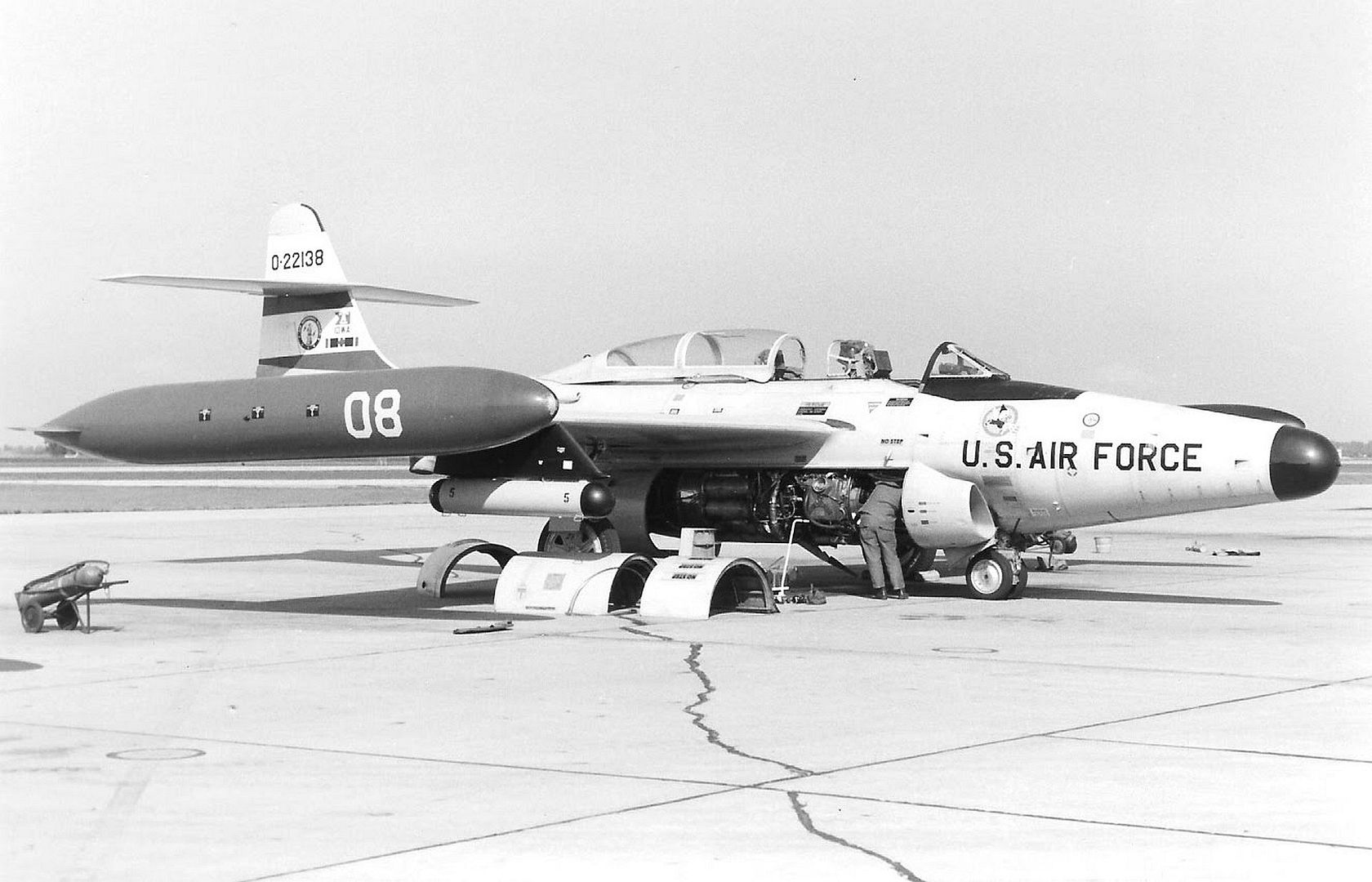
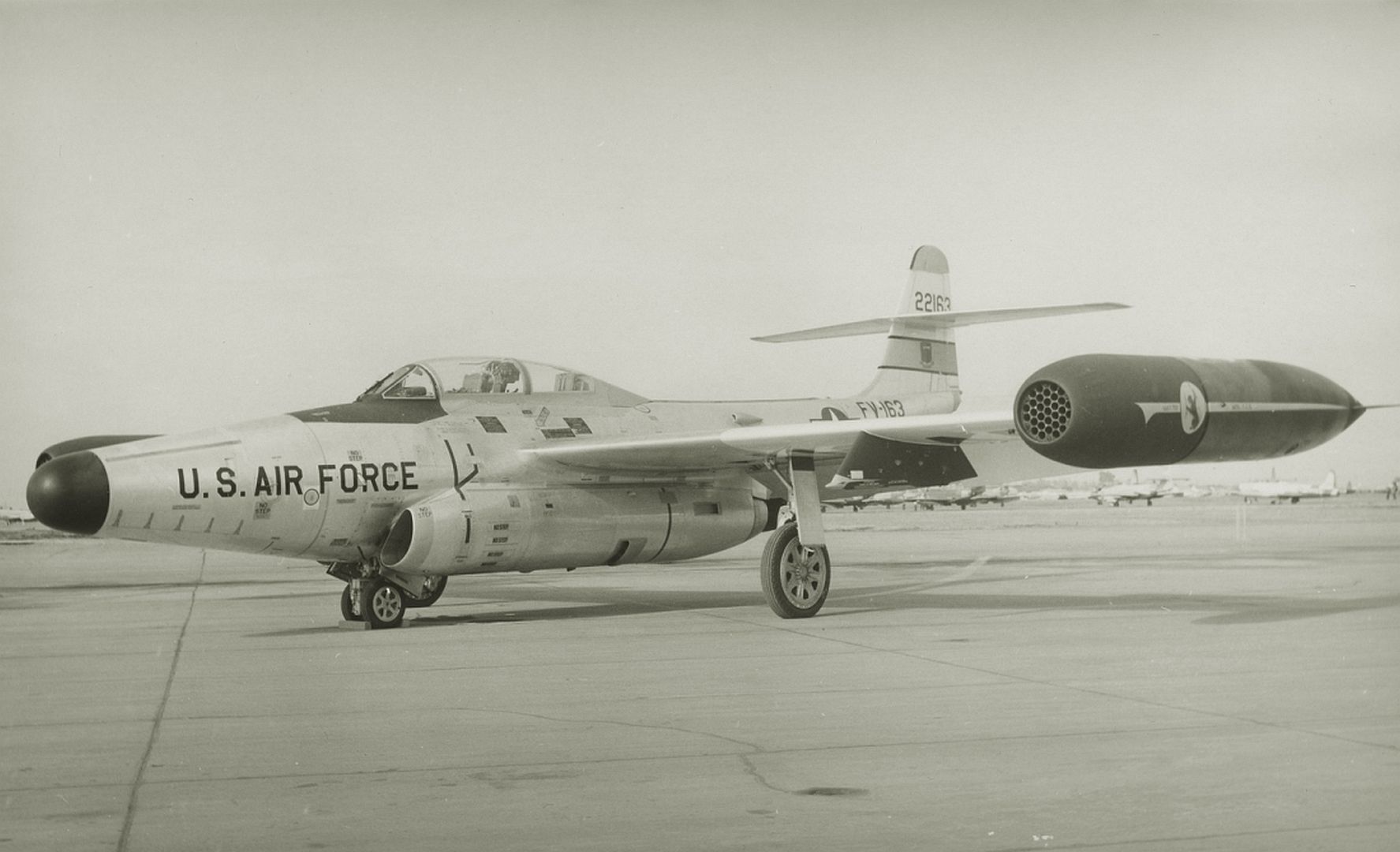
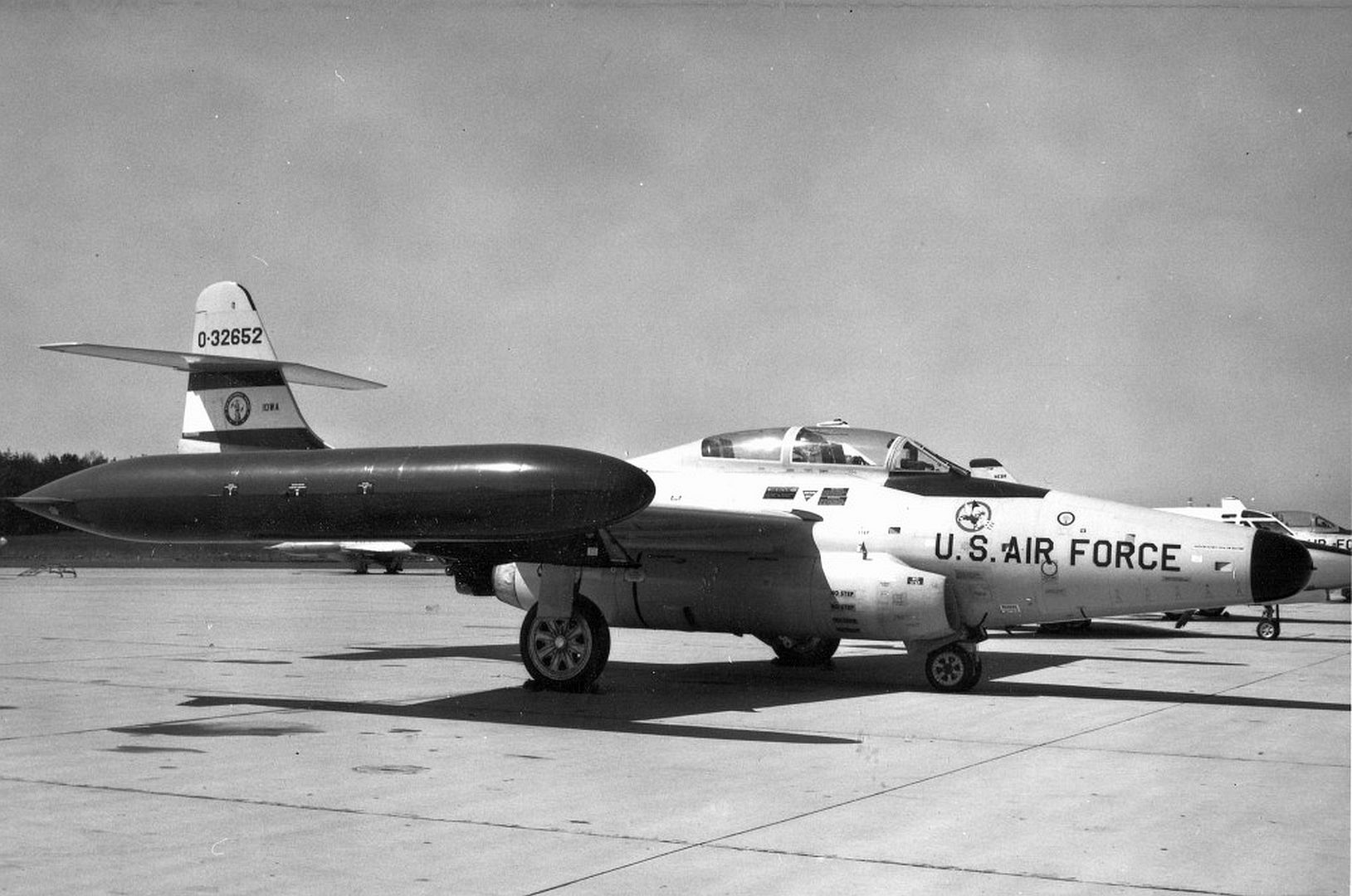
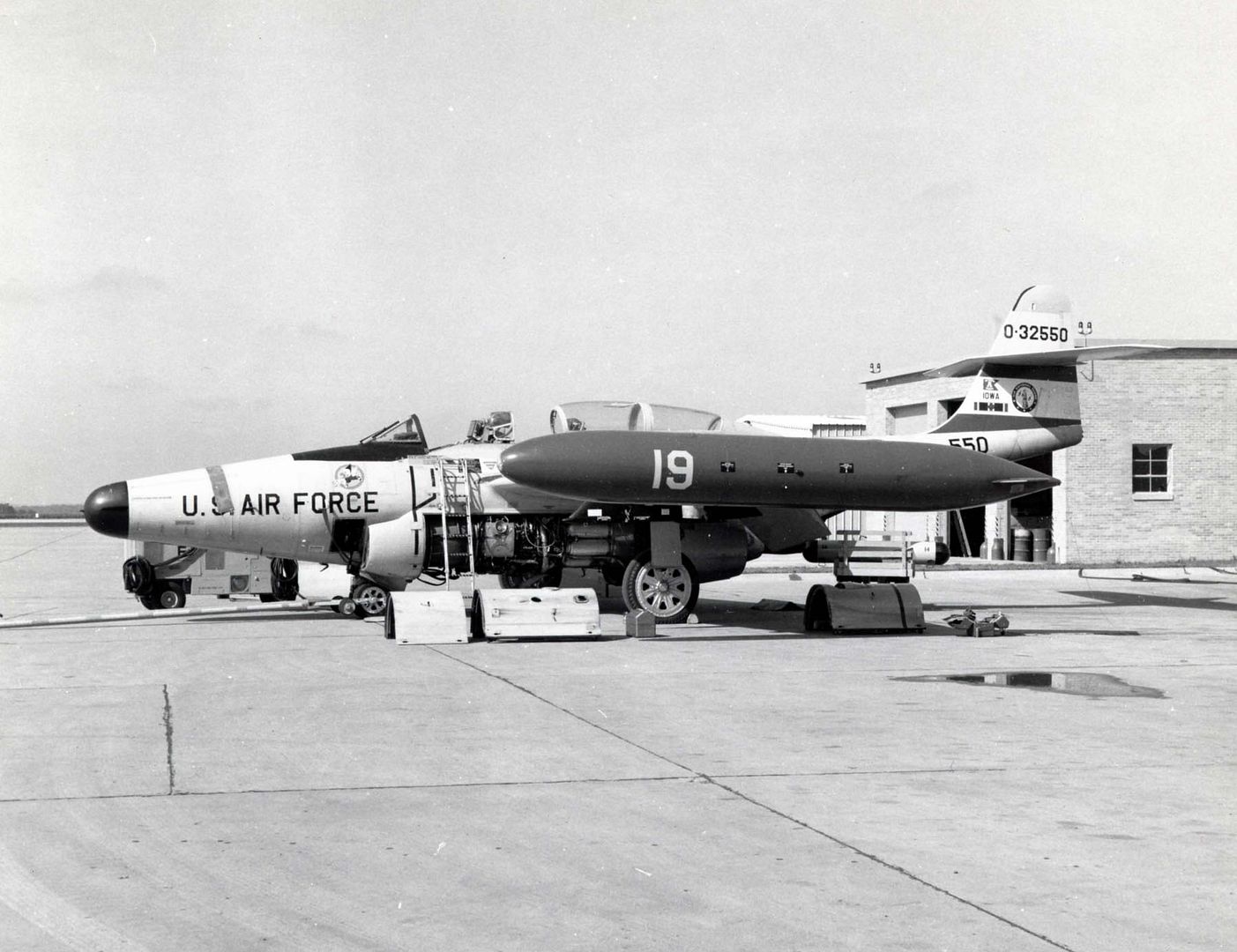
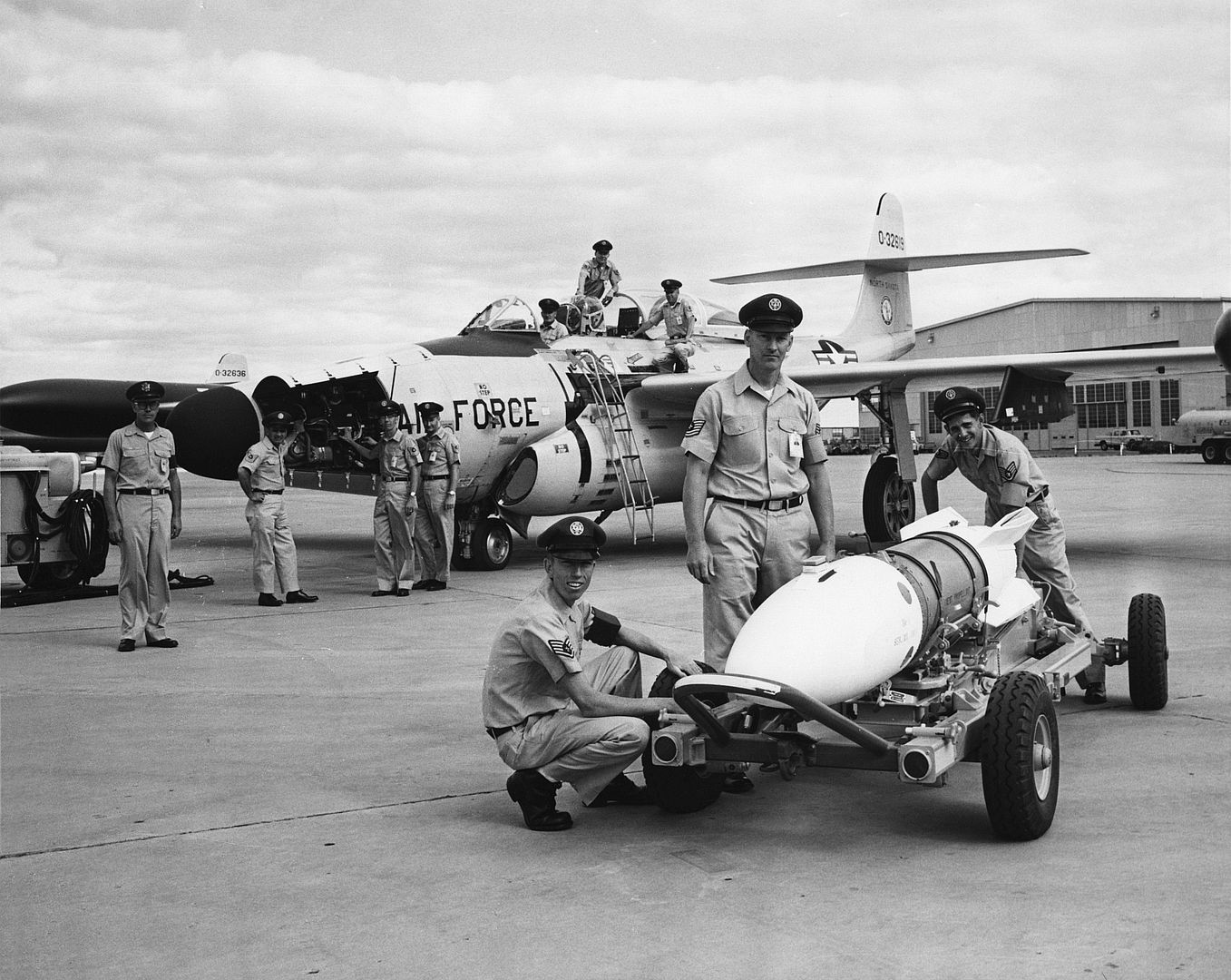
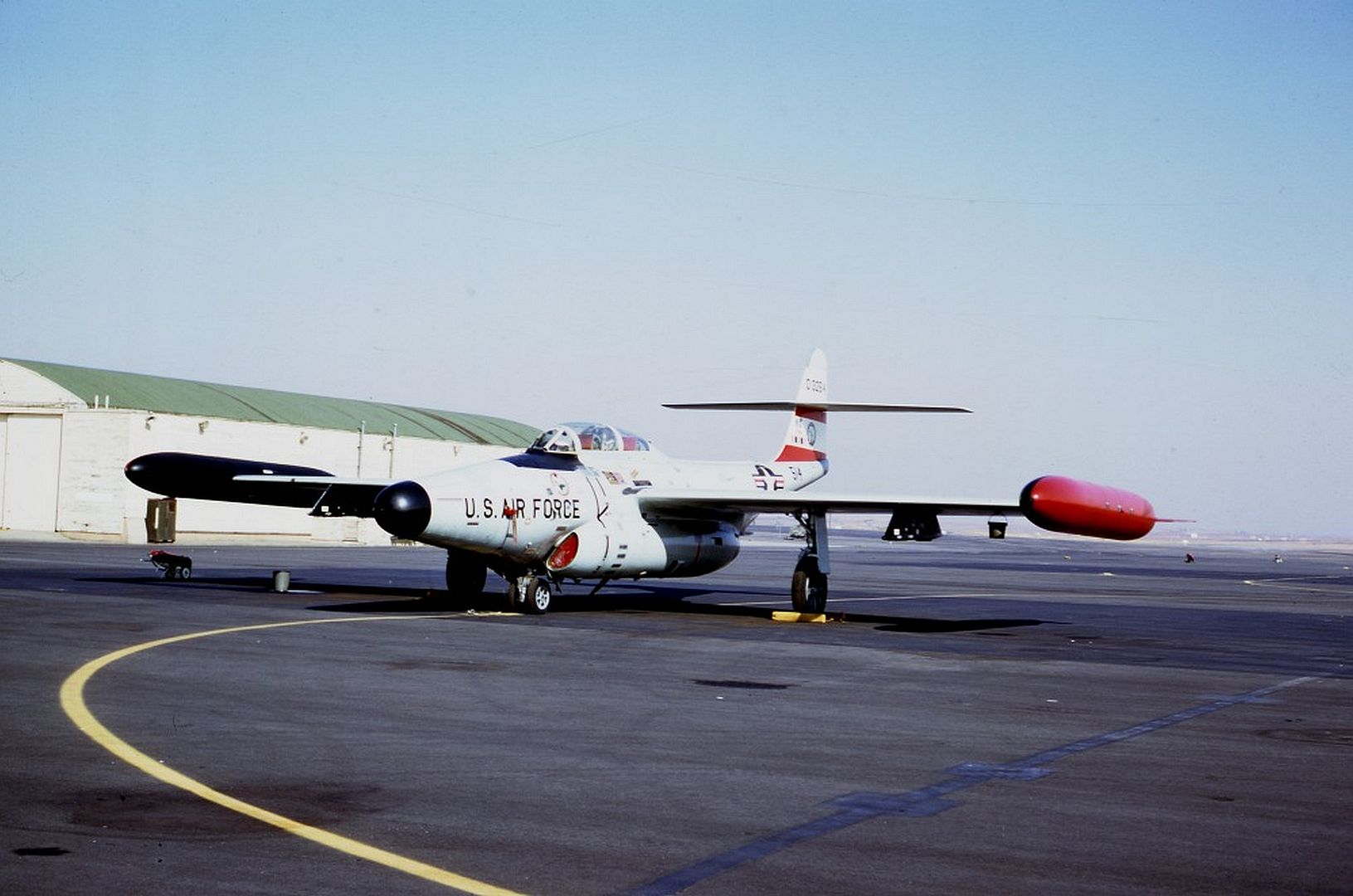
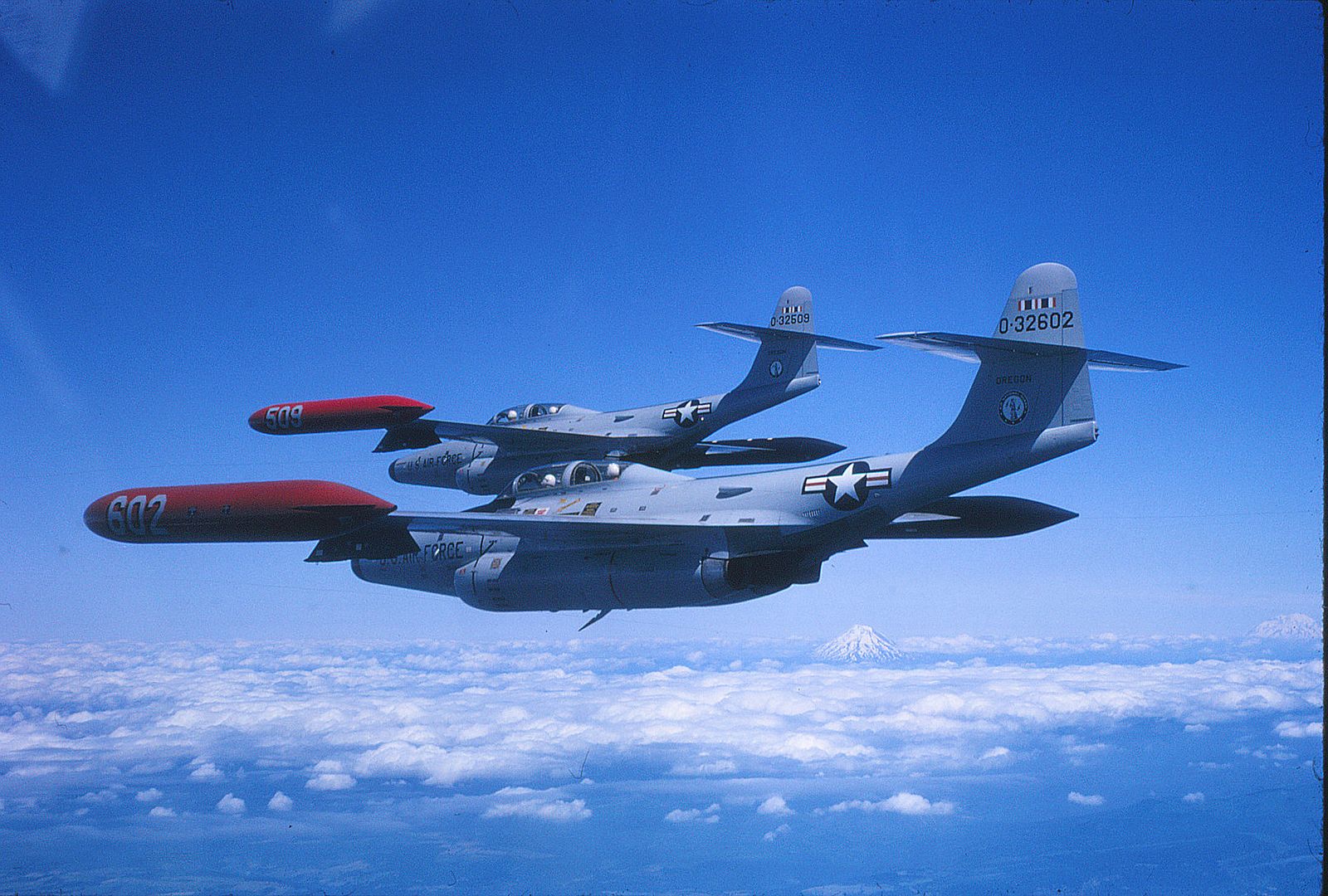
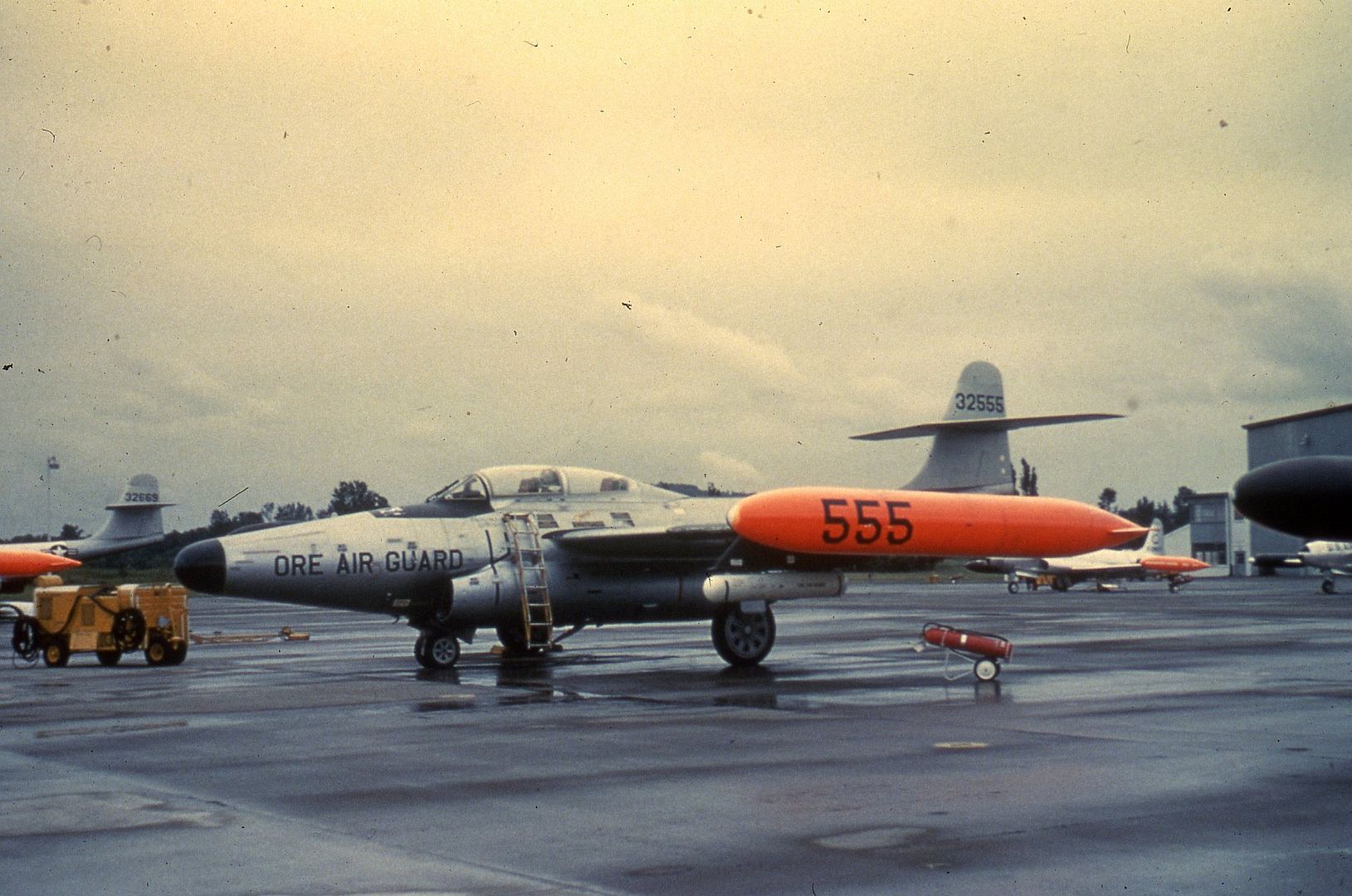
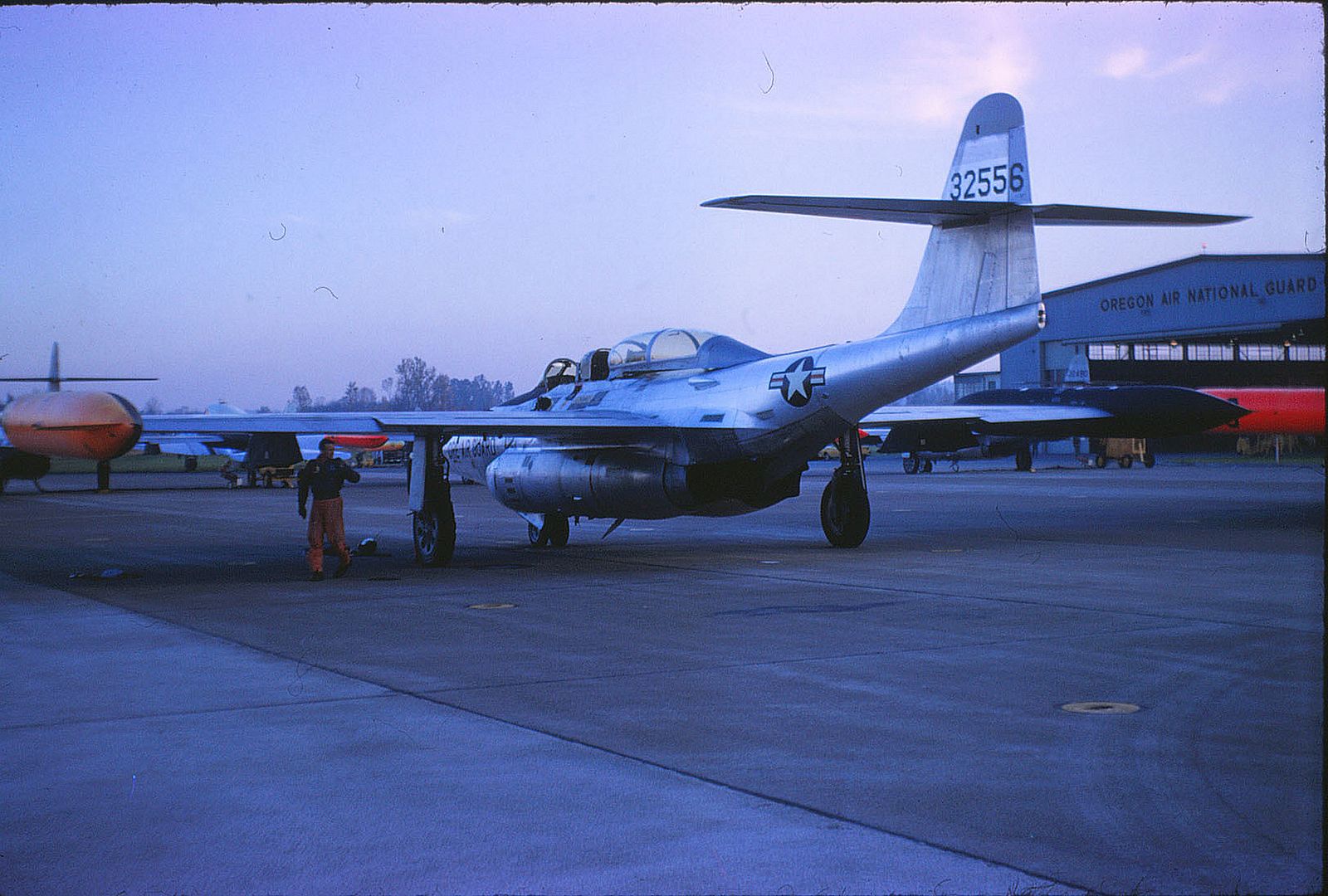
Specifications (F-89D)
General characteristics
Crew: 2
Length: 53 ft 9.5 in (16.396 m)
Wingspan: 59 ft 8.5 in (18.199 m)
Height: 17 ft 6 in (5.33 m)
Wing area: 606 sq ft (56.3 m2)
Aspect ratio: 5.88
Airfoil: NACA 0009-64[60]
Empty weight: 25,194 lb (11,428 kg)
Gross weight: 37,190 lb (16,869 kg)
Max takeoff weight: 42,241 lb (19,160 kg)
Powerplant: 2 × Allison J35-A-35 afterburning turbojet engines, 5,440 lbf (24.2 kN) thrust each dry, 7,200 lbf (32 kN) with afterburner
Performance
Maximum speed: 645 mph (1,038 km/h, 560 kn) at 10,600 ft (3,231 m)
Ferry range: 1,366 mi (2,198 km, 1,187 nmi)
Service ceiling: 49,200 ft (15,000 m)
Rate of climb: 7,440 ft/min (37.8 m/s)
Armament
2 × pods of 52 2.75 in (70 mm) "Mighty Mouse" Mk 4/Mk 40 Folding-Fin Aerial Rockets, for a total of 104
Avionics
Hughes E-6 fire-control system
AN/APG-40 radar
AN/APA-84 computer
(Text from here -http://www.joebaugher.com)
Post a reply
- Go to Previous topic
- Go to Next topic
- Go to Welcome
- Go to Introduce Yourself
- Go to General Discussion
- Go to Screenshots, Images and Videos
- Go to Off topic
- Go to Works in Progress
- Go to Skinning Tips / Tutorials
- Go to Skin Requests
- Go to IJAAF Library
- Go to Luftwaffe Library
- Go to RAF Library
- Go to USAAF / USN Library
- Go to Misc Library
- Go to The Ops Room
- Go to Made in Germany
- Go to Campaigns and Missions
- Go to Works in Progress
- Go to Juri's Air-Raid Shelter
- Go to Campaigns and Missions
- Go to Works in Progress
- Go to Skinpacks
- Go to External Projects Discussion
- Go to Books & Resources
